
Sustainability Success
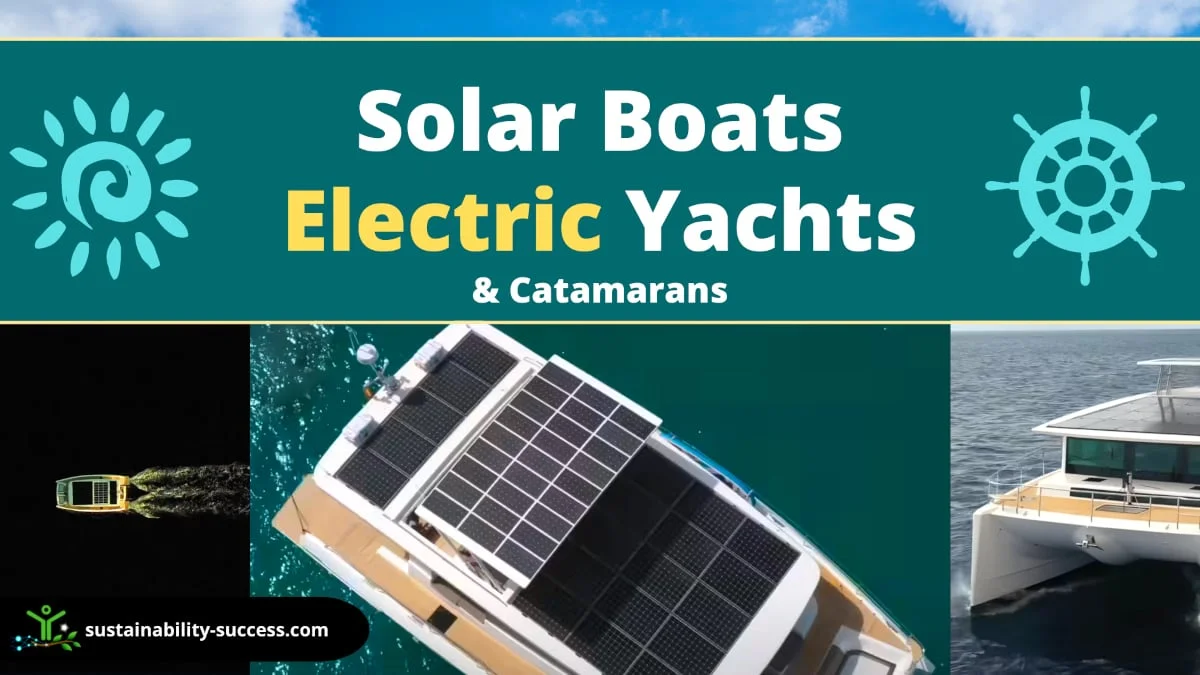

10 SOLAR Boats 2023 & 2024 | Electric Yachts & Catamarans
With more steps being taken towards sustainable development, new, eco-friendly solar boats have been introduced in the world of green travel: solar electric catamarans.
Solar boats are electric yachts that can go for long distances without needing to stop for fuel and without emissions. Those solar catamarans are interesting eco-friendly alternatives to the classic power boat or sailing yacht for cruising. However, there are also a few disadvantages that you should know about before purchasing one!
10 Solar boats, electric yachts & catamarans
Here are the best solar boats that will delight you with a top-notch sustainable yachting experience based on your requirements:
Sunreef Yachts – Eco 80 Sail Catamaran
- Silent Yachts – Silent 80 3-Deck
HH Catamarans – HH44
Silent yachts – silent 60, sunreef 43m eco (140 ft).
- Silent 120 Explorer
- 100 Sunreef Power Eco
Azura Marine – Aquanima 40
Soel yachts – soel senses 48, serenity yachts – serenity 64 (hybrid).
Here’s a quick summary of the features of the best solar catamarans for green yachting in 2023-2024:
If you are an advocate of sustainable yachting or sustainable tourism and are looking to buy an eco-friendly boat that doesn’t rely on fossil fuels , then you would do well to consider getting a solar catamaran. In this article, I will go through the pros and cons of 10 of the best solar yachts and superyachts that you can buy in 2023 and 2024!
It is also important to note that while there are solar panels for sailboats that you can fit on older models, those new boats have been specifically designed to maximize the use of renewable energy.
Most Luxurious + Most innovative solar system
The Eco 80 Sail Catamaran is one of the electric solar boats provided by Sunreef Yachts.
It features a unique “solar skin” that covers all composite structures on the boat, including hull sides, boom, mast, bimini, and superstructure. This green tech makes it possible to place solar panels where it wouldn’t normally be possible (like the hull and any other smaller but useful surface) and provide enough solar energy from every angle.
The boat is 80-feet long (24.38 meters) and includes electric motors that push it smoothly over the water without causing any vibrations or noise.
Besides being solar powered boat, the Eco 80 Sail Catamaran can also be powered by wind and hydropower. It is designed with a sail on its structure, allowing it to tap into wind power and supplement the solar.
The solar powered sailboat generates enough green power not only to propel the boat and keep it moving but also to charge the essential electric water appliances and other water-sport toys.
So far, the Sunreef Yachts Eco solar sailboats have earned a good reputation for being eco-friendly and sustainable. Besides, this solar powered catamaran takes its commitment to the environment a notch higher by using recycled materials , natural fibers, and non-toxic paints to create their boats.
It is no wonder that Sunreef Yachts have been winning environmental awards for so many years. This solar sailboat is one of the most remarkable boats you can ever invest in and it clearly shows the latest advancements in technology .
Prices: about $8 million USD
Where to buy : Sunreef Yachts .
- Larger surface covered with solar panels, that are installed also along the hull, and in other unusual areas.
- The batteries are 30% lighter than normal
- Unlimited cruising range.
- It runs silently and does not cause pollution.
- It has also traditional sails, so it can cruise also when it is not sunny without relying on batteries.
- Luxury, superb quality and finishing
- Great helm position.
- The solar catamaran is very costly (going for $8 million USD or more).
- The solar panels installed on the sides of the catamaran may not be appealing to the eye of all people.
Silent Yachts – Silent 80 Tri-Deck Solar Catamaran
Best pure electric
The Silent 80 Tri-Deck Solar yacht is popular for the large amount of space it offers.
This solar catamaran by Silent Yachts features three large decks that can be easily customized to fit the owner’s preferences and needs. The topmost deck can either be open or enclosed.
This solar powered yacht offers 4 to 6 cabins that are customizable, regardless of whether the deck remains open or enclosed. Besides, the top deck provides additional living space and can be used as a luxury master suite that opens onto a private space outdoors.
Where to buy : Silent Yachts .
- Purely electric propulsion that can be helped by the kite sail.
- The finishing, while being of high standards, doesn’t seem to be at the level of other options in its category.
- Quite costly, with prices starting at about $6 million USD.
- If going for a long cruise during cloudy days you may need to run the generator to keep going.
- The kite sail helps to give some propulsion using wind, but it is less effective than traditional sails.
- The absence of a traditional sail may make the boat a bit less stable, compromising a bit of the comfort while cruising.
Best for world cruising
HH Catamarans is a small boutique boat builder designing some of the most impressive solar boats for cruising, with one of their latest creations being the HH44.
The HH44 is a groundbreaking new boat that is designed to be eco-friendly and efficient.
The boat has a large battery bank that can be charged by solar panels, and also has two electric motors that can be used for electric propulsion up to 7 knots for up to 2h.
The HH44 has an innovative propulsion system named Eco-Drive. This is a parallel hybrid system that combines diesel and electric propulsion for long-range motoring and silent electric propulsion.
The boat also has two diesel engines, which can be used for long-range motoring or to generate electricity. The boat is also designed to be safe, with four propulsion devices plus sails and a large solar array.
The HH44 has a number of technical features that make it a groundbreaking eco-friendly design, including:
- 3 types of propulsion: full electric, standard diesel, and sail.
- 4.2 kWh of solar panels: generating power for recharging the lithium battery bank for solar .
- 10 kW electric motors (5kW each): mounted on the back end of each diesel engine for electric propulsion.
- The diesel engines can be used both for propulsion and as electric generators.
- Possibility to use the propellers to recharge the battery while the boat is sailing. Kind of like using hydropower to charge your solar batteries , pretty cool!
The HH44 is also a performance catamaran thanks to its C-shaped §daggerboards. Daggerboards are an essential component of many sailing vessels, providing both vertical lift and increased upwind sailing performance.
This solar powered yacht features up to 4 double cabins and 2 heads . Not bad for this world-cruising vessel!
If instead, you are looking for a larger boat, HH Catamarans also have other models up to 88ft.
This solar catamaran was also the preferred choice of Gone with the Wynns , a popular cruising YouTube channel. Here’s their announcement video:
Where to buy : HH Catamarans .
- A true performance world cruiser.
- Very resilient with 3 different propulsion modes (electric, sail, and conventional engines) and ideal for offshore cruising.
- It can run silently and without causing pollution.
- More affordable than other solar catamarans, starting from $1 mm USD
- Smaller than other options.
- The improved sailing performance requires narrower hulls, which reduces the available space onboard compared to other traditional vessels of similar size
Best mid-range
The Silent 60 is one of the smaller electric boats made by Silent Yachts. It is designed to be handled by at least two people. The users can either choose to include an additional crew or not.
Despite its outward small appearance, Silent 60 is very spacious and can accommodate a good number of people.
Besides, the electric yacht has a beautiful design that adds to its elegant and luxurious feel. It is usually designed with up to 6 cabins , with each cabin offering every basic amenity you need to have a luxurious stay on the yacht. In fact, the electric solar boat is equipped with everything you need to allow you to live on board permanently!

As someone who loves spending time on the water, I was really excited to learn about the Sunreef 43M Eco: a superyacht that is both eco-friendly and luxurious.
I was especially impressed by the solar power system, which is built into the composite structures of the yacht, and the large hydraulic platform which creates a vast walkaround beach club.
The interior of the solar superyacht is just as impressive as the exterior, with a variety of sustainably-sourced materials and fabrics used throughout as well as energy-saving air-conditioning. The Sunreef 43M Eco can welcome up to 12 guests in the most luxurious conditions.
Silent Yachts – Silent 120 Explorer

Here’s another incredible solar super-yacht by Silent Yachts. The Silent 120 Explorer is a truly unique yacht, designed to explore the world in style and comfort.
Powered by solar energy, this solar catamaran is perfect for those who want to enjoy the beauty of the open seas without worrying about the impact on the environment.
With plenty of space for guests and all the amenities you need onboard, the Silent 120 Explorer is the perfect choice for your next adventure. If you’re looking for a yacht that combines luxury and environmental responsibility, the Silent 120 Explorer is a perfect choice.
The company didn’t yet release detailed information, however, this superyacht seems to be even featuring a helipad under the roof’s solar panels!
The Silent 120 Explorer has plenty of room for guests and all the amenities you need onboard. So if you’re ready to embark on your next great adventure, be sure to consider the Silent 120 Explorer, which will likely start being delivered in 2023.
The 100 Sunreef Power Eco
Sunreef recently launched and sold their first 100 Sunreef Power Eco catamaran, a transatlantic luxury craft that takes solar boat design to the next level.
With massive living space, great autonomy, and impressive features like a flybridge that can be transformed into an outdoor cinema, the 100 Sunreef Power Eco is the perfect vessel for cruising in supreme luxury
This catamaran uses the latest innovations in solar power to achieve outstanding energy efficiency, and its ultralight battery bank provides for silent cruising and infinite range.
The fully customizable interior and exterior make this catamaran a truly one-of-a-kind option, and its use of ethically-sourced and eco-responsible materials is sure to please even the most discerning buyer.
If you’re looking for an electric yacht that is both luxurious and eco-friendly, the 100 Sunreef Power Eco is certainly a great option for you if you can afford it!
The most affordable $
The Aquanima 40 catamaran is entirely powered by solar energy. It features creative adaptations and unique innovations that make it eco-friendlier and more economical boat than other solar-powered catamarans. For example, the solar panels installed on the electric catamaran are built in such a way that they can sell any excess solar energy back to shore stations when connected.
The exterior of the Aquanima 40 has an elegant design. Also, the interior is not only aesthetically pleasing, but also very clean and modern.
The boat is designed with 2 single cabins for the crew and 2 double cabins for guests.
Indeed, this solar boat by Azura Marine is one of the most economical and cost-effective options you can go for when buying a solar catamaran.
- Relatively fast.
- Ideal for short vacations.
- The most affordable solar catamaran, starting at about $0.6 million USD.
- Much smaller than other options.
- Not recommended for long cruises.
- Basic looks and layout.
As its name suggests, the Soel Senses 48 is 48 feet long. It has a slender design and is lightweight , making it more economical than most other solar-powered boats.
The boat is designed with two sleeping berths that can accommodate two people each. It also includes a salon that can offer enough sleeping space for four people.
Compared with most other solar yachts, the Soel Senses 48 has a much smaller size. Its size, adding to its sleek and innovative design, give it faster speed than other solar-powered boats.
It incorporates 12 solar panels installed on the roof ; all these panels generate a combined electrical power of up to 2.7 kWh. The electricity generated by the solar panels is then stored in two batteries which can be easily configured to hold a maximum solar power of 142 kWh.
Like other Soel Yachts, the Soel Senses 48 glides smoothly over water without causing any noise, rattles, or generating fumes.
It has average cruising speeds of 10 knots, even reaching top speeds of up to 18 knots. However, the solar catamaran cannot run at its top speed for long periods.
Both the interior and the exterior of the Soel Senses 48 have a sleek and modern design. Every single component of the solar catamaran has been designed carefully to make it as functional and comfortable as possible. Therefore, when you board on this boat, you can expect to experience one of the best sailing experiences of your life.
The Serenity 64 Yacht features a diesel engine. It is a hybrid solar boat, which means that it can run on either solar power or on diesel.
The diesel engine especially comes in handy when the users wish to achieve faster cruising.
The solar catamaran is a very spacious electric boat and provides plenty of living space. It is built with four luxurious cabins, with each cabin having its ensuite bathroom. And even though the Serenity 64 is smaller than the Serenity 74 model also built by Serenity, it still provided an elegant feel and a smooth sailing experience.
Solar Boats Pros and Cons
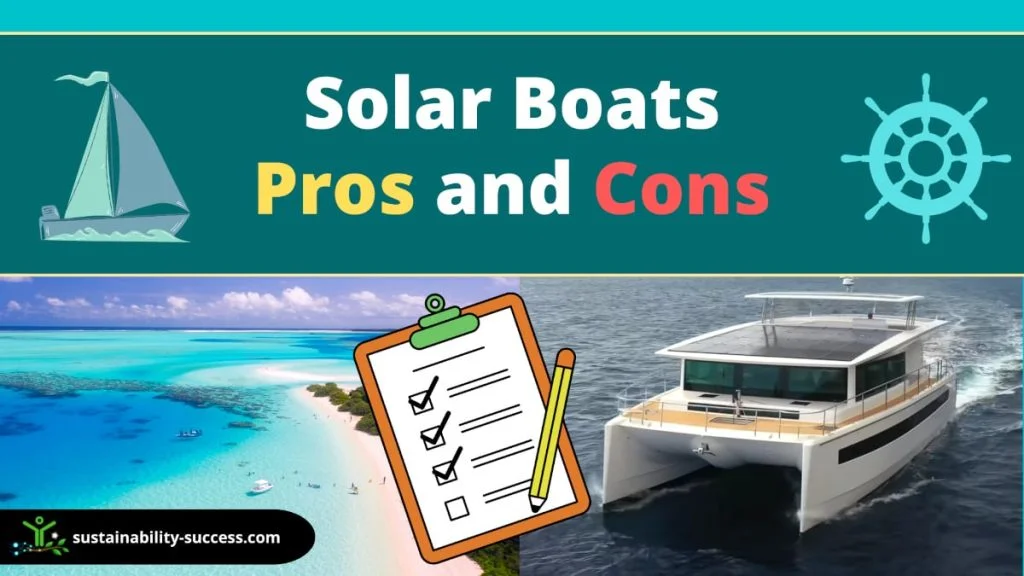
The sun is a powerful and free source of energy, making solar power an attractive option for those looking to power their yacht. Solar panels can be used to generate electricity to run the yacht’s lights, appliances, and even the engine. Solar power can also be used to heat water for showers and laundry. But, what are the pros and cons of solar catamarans?
Here’s a quick summary of the solar yachts’ advantages and disadvantages:
One of the main benefits of solar power is that it is renewable and environmentally friendly. Solar panels have no emissions and do not produce pollution. In principle, they also do not require fuel, making them very cost-effective in the long run. Solar power is also very reliable, as the sun is a constant source of energy.
There are a few disadvantages to solar power. Solar panels can be expensive to install, and while they require less maintenance, this can be quite costly, especially when it will come time to replace the batteries. Solar panels also need to be pointing directly at the sun to be effective, so they may not generate power on cloudy days or at night.
But there’s more, let’s see what some sailing experts are thinking about solar catamarans!
Sailing expert’s solar Boat review
Recently, one of the most popular sailing YouTube channels, Saliling La Vagabonde , published a very honest and interesting review of the solar powered yacht Silent 55. Here’s a summary of their experience:
- 7 Days onboard (6 nights)
- Travelled 145nm with an average speed of 7 knots
- Generator used for about 12h (in total)
- Fuel consumed: 208 liters
Here are some interesting observations they made:
- While cruising it may feel less stable than a standard sailing boat because it doesn’t have a sail to stabilize it when hitting the waves.
- For the Silent 55 it was possible to move at about 3 knots by using only the power generated by the solar panels (without using the batteries) on a sunny day. This means that if you are moving the solar yacht around quite frequently, you will end up using the generator quite a lot to produce the necessary power.
- When the batteries are out of power, the Silent yacht is using a (diesel) generator to supply the necessary power to keep the boat moving and to power the appliances.
- A great luxury yacht with all the comforts and going in the right direction for the future of the sector.
- Overall, the Silent Yacht is a great eco-friendly alternative to a power boat , while if you are thinking about cruising around the world, you would be probably better off going for a standard sailboat (or for some of the hybrid alternatives mentioned in this article, like the HH44).
Why are solar yachts all catamarans?
Solar yachts are all catamarans for 2 main reasons:
- Catamarans have a larger surface, which allows for placing more solar panels and also offers more room for the batteries onboard.
- Catamarans have efficient hulls for their size. This reduces their power consumption while moving.
This makes catamarans the ideal platform to build a solar-powered boat.
Modern solar electric boats are undoubtedly an eco-friendly choice in sea travel and a form of green tourism . Not only do these electric boats provide a smooth sailing experience, but they also reduce the release of emissions into the atmosphere, reducing the environmental impact and enhancing sustainability .
Luckily, given their size, solar catamarans can charge themselves (unlike electric cars ), so they can sail indefinitely without the need to stop for refueling.
If you are environmentally conscious and looking to get a boat that is more viable, desirable, and eco-friendly, you may consider investing in one of the solar yachts discussed in this article!

The ZEN50 is a game changer. World’s first series production catamaran equipped with a wingsail, it defines a new distinctive class of its own, where genuine zero-emission meets high comfort and performance, limitlessly.
Designed from scratch for ZEN Yachts by award-winning naval architect Julien Mélot , this full carbon catamaran is the ultimate essence of technology driven, high performance and luxurious, eco-friendly leisure yachting.
The blue water capable ZEN50 lightweight racing carbon hulls are combined with a huge solar roof for an unrivaled solar power vs. displacement ratio above 1:1 (18 kW / 17 tonnes), making this yacht completely energy self-sufficient. A revolutionary, fully automated, wingsail - by Ayro© - can be added as a range and speed extender. The yacht’s high capacity battery bank powers a powerful silent electric propulsion, allowing the ZEN50 to achieve 14 knots and maintain high continuous speeds in unrivaled safety and comfort, indefinitely…
The ZEN50 is offered with or without wingsail and comes in 3 main different versions: Racer, Cruiser and Explorer, each dedicated to a different usage and owner profile. We use these versions as a basis to define a final, bespoke specification for each of our valued clients and ZEN Community Members. Scroll down for more details, specifications and prices.

1st WINGSAIL series production yacht in the world!
The OceanWings32 - by Ayro© - was initially developed for Team Oracle, for the America’s Cup 2010 in Valencia. Over years, it has further been developed and automated by VPLP and was installed on Energy Observer in 2019. Two years of field feedback have allowed the Ayro team to fine tune the algorithm commanding the wingsail. The ZEN50 is the first series production leisure craft to be equipped with this fully automated wingsail. It is controlled at the touch of a finger on screens, is automatically adjusted and has several safety modes and features. The two parts of the wingsail can be hoisted and lowered independently and with the simple touch of a button. The wingsail OceanWings32 is the ideal complement for the solar roof for those wishing to cruise long distances off-shore with zero-emissions.
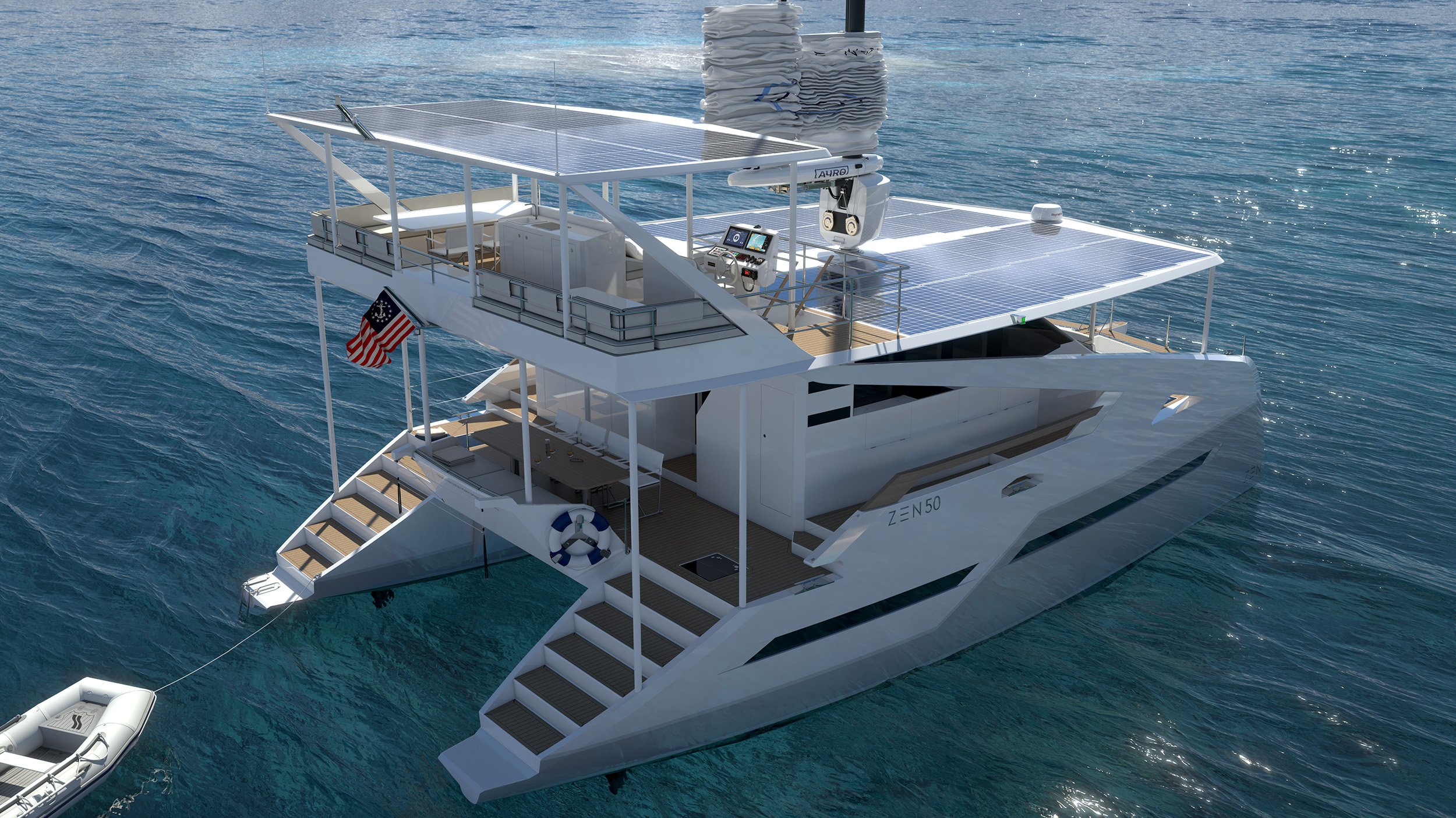
Greatest ratio SOLAR POWER / weight on the market
At 17 tonnes lightweight and 18,000 W of peak solar power, the ratio of the ZEN50 is at over 1 kW per displaced tonne of water or beyond 1:1 which is far beyond any other blue water CE Cat A yacht in this size range. Lots of solar power for little water to displace is the strong and healthy foundation the energy self-sufficient ZEN50 is built upon.
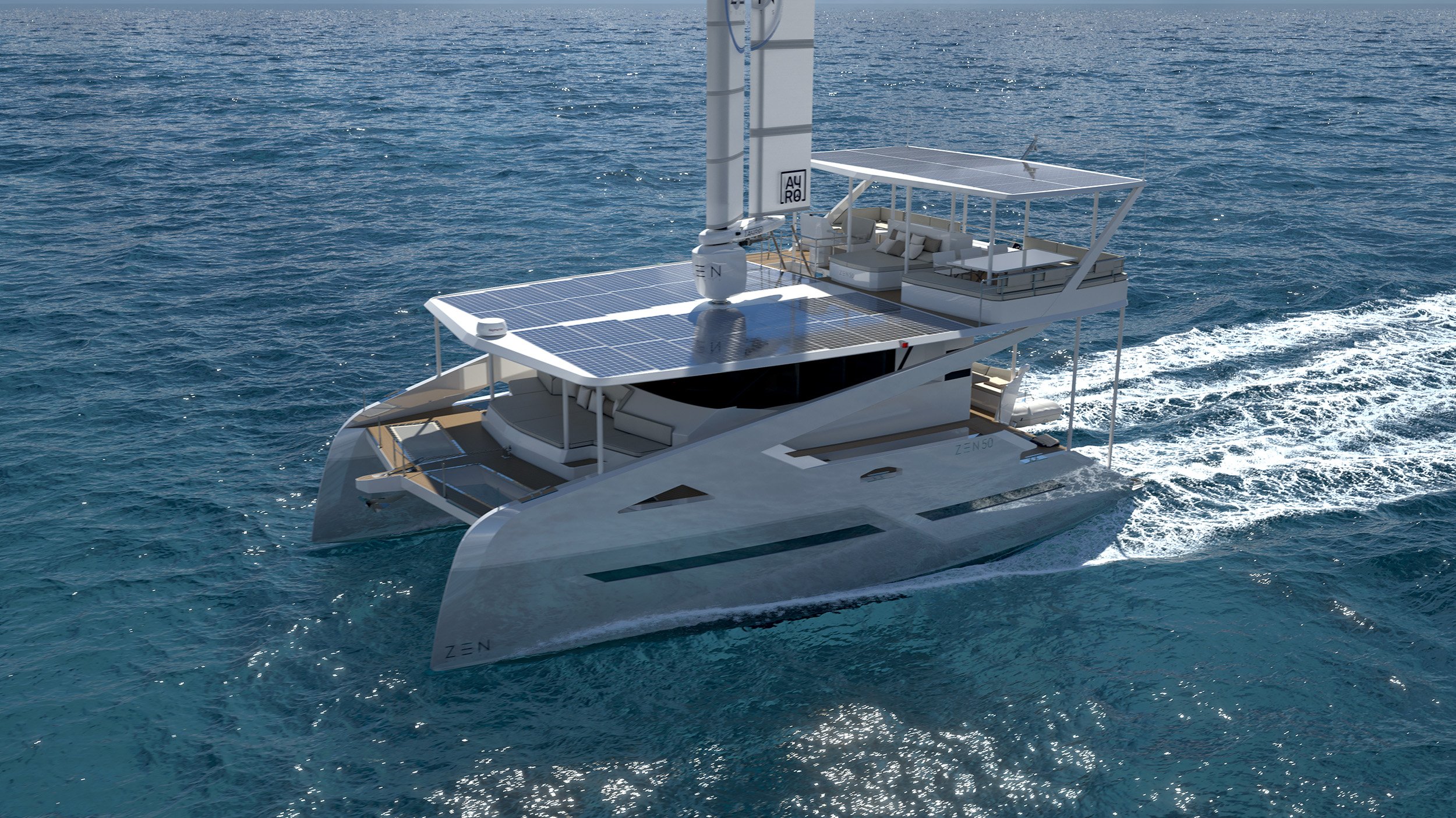
Performance CARBON sandwich hulls
The hulls of the ZEN50 have been designed from a blank screen for ultimate efficiency - understand minimum drag or minimal energy consumption for a range of speeds from 6 to 10 knots. Their shape is aggressive, sharp and slender. Their reverse bows cut through water like a sword cuts through butter and their curvature is reminiscent of graceful dolphin bodies. These hulls are undoubtedly of the performance type and are built with the best available composites: Carbon fibre and Corecell™. The combination of high strength, low weight and performance design allow the ZEN50 to reach speeds of up to 14 knots.
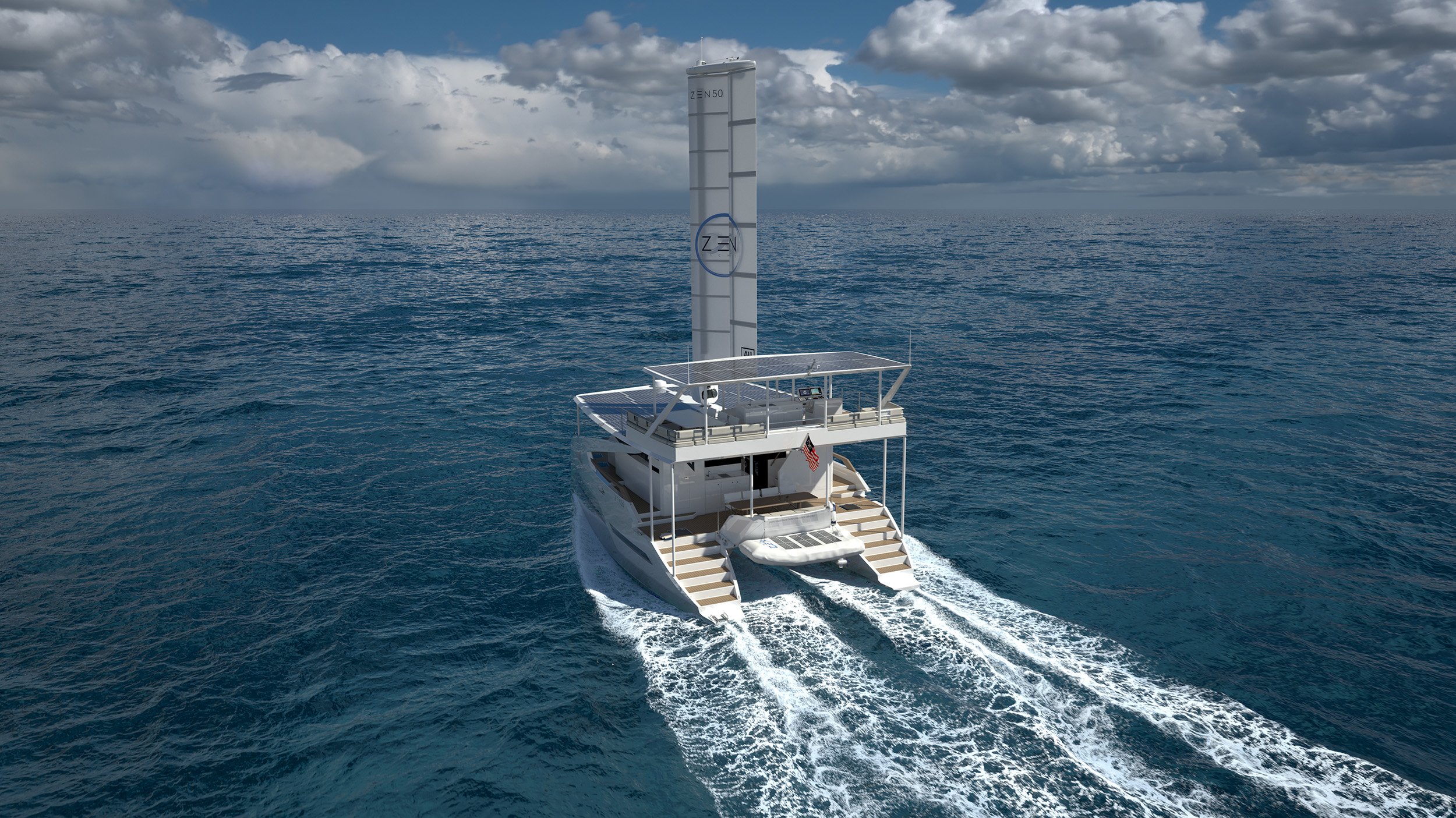
INFINITE range at high CONTINUOUS speeds
With maximized solar and wind power and minimized energy consumption… the ZEN50 can sail continuously at speeds varying between 6 and 10 knots. Thorough simulations in various sea states and weather system have consistently shown the ZEN50 will be able to achieve performance catamaran speeds continuously without using a genset. With the ZEN50, the world is your oyster and the wildest destinations are within your reach with this self-reliant vessel!

True ZERO-EMISSION operation
The first ZEN50 unit, whose construction started in March 2023, will not be equipped with a genset at all and will not have any fossil fuels onboard. The ZEN50 energy system with its very large capacity 160 kWh battery bank, has been designed to function for days in complete safety with minimal solar energy harvest and no wind. It is perfectly safe with no backup genset and operates 24/7 without any polluting emissions.
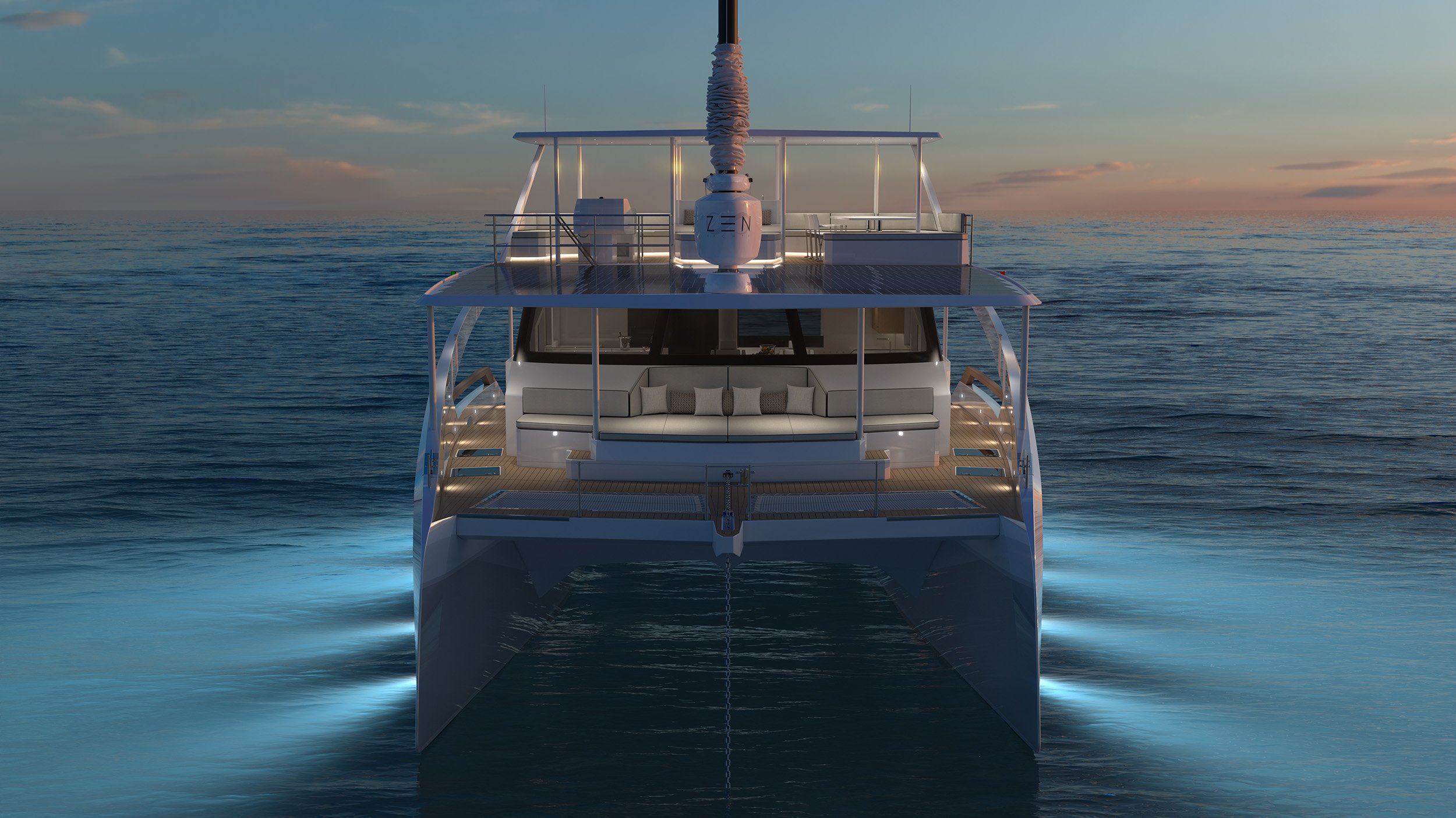
NO FUEL , no costs
Naturally, requiring no fuel to operate day in day out is great news for the environment, it is also fantastic news when sailing into remote areas where fuel bunkering might be near impossible or where the fuel quality might be an issue. Finally, it also makes a massive difference in this yacht’s costs of operation. Imagine the hundreds of liters of diesel saved over just a week, the obsolete engine maintenance schedules, the clogged filters and dirty tanks from another age… Welcome to a new burden-free, energy self-sufficient era, welcome to clean and graceful eco-yachting, welcome to ZEN Yachts.
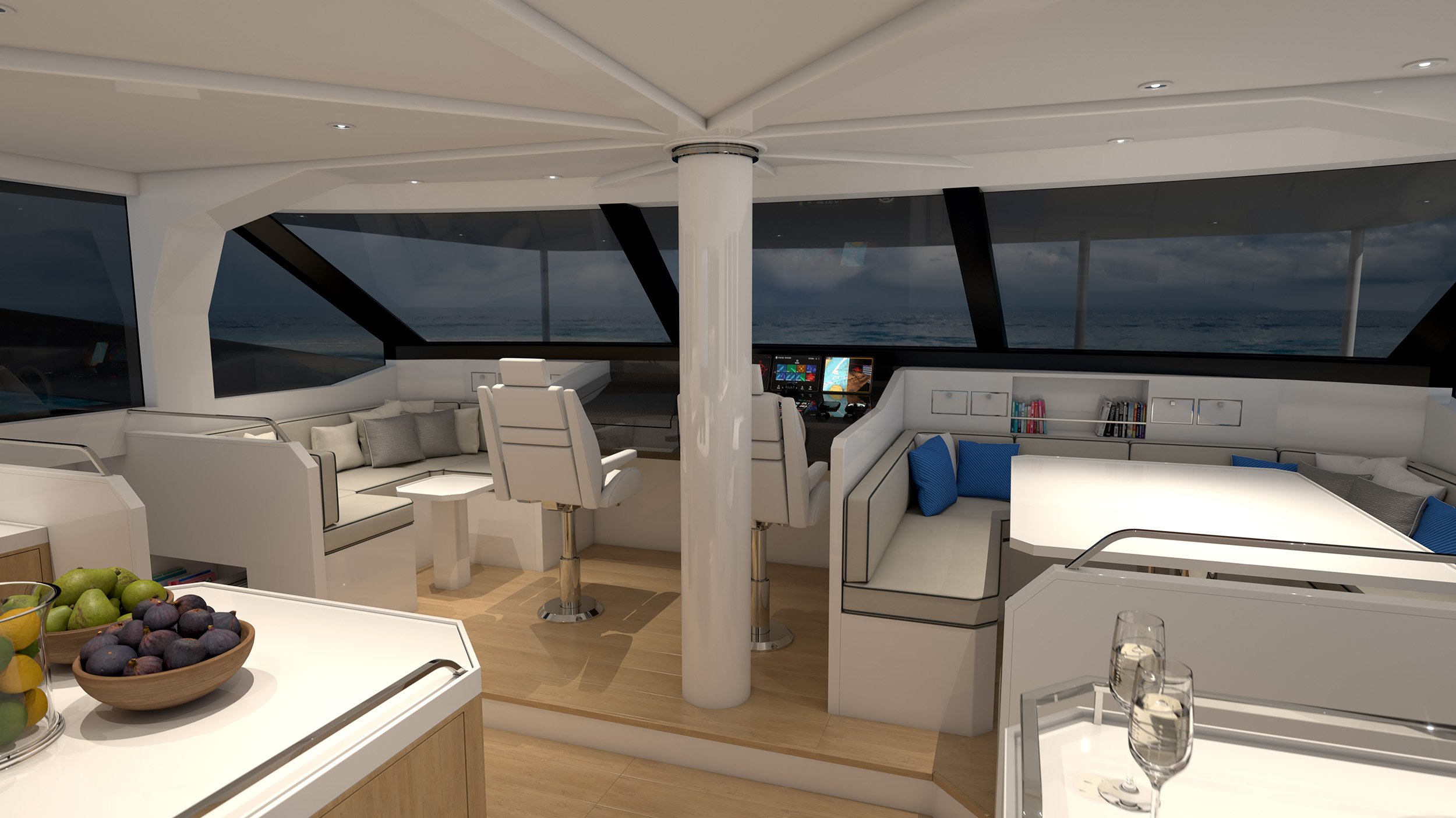
Highest SAFETY & reliability
At ZEN Yachts, we have made some design choices to attain energy self-reliance with the ZEN50 that reduces the habitable volume in the hulls, similar to performance catamarans. Where we have not and will never compromise is on safety. Our main voltage system is 48V making it perfectly safe to work on. The level of redundancy of the batteries and solar panels is 10! The main electrical architecture is split in 2 so that should anything happen on 1 hull, the entire vessel can still operate normally. There are 2 independent helm stations and the ZEN50 is packed with special safety features, nonsubmersible compartments and we can even offer an in-depth practical course on safety equipment usage and management. Sailing with the ZEN50 is not only exhilarating and clean, it is ultra safe!
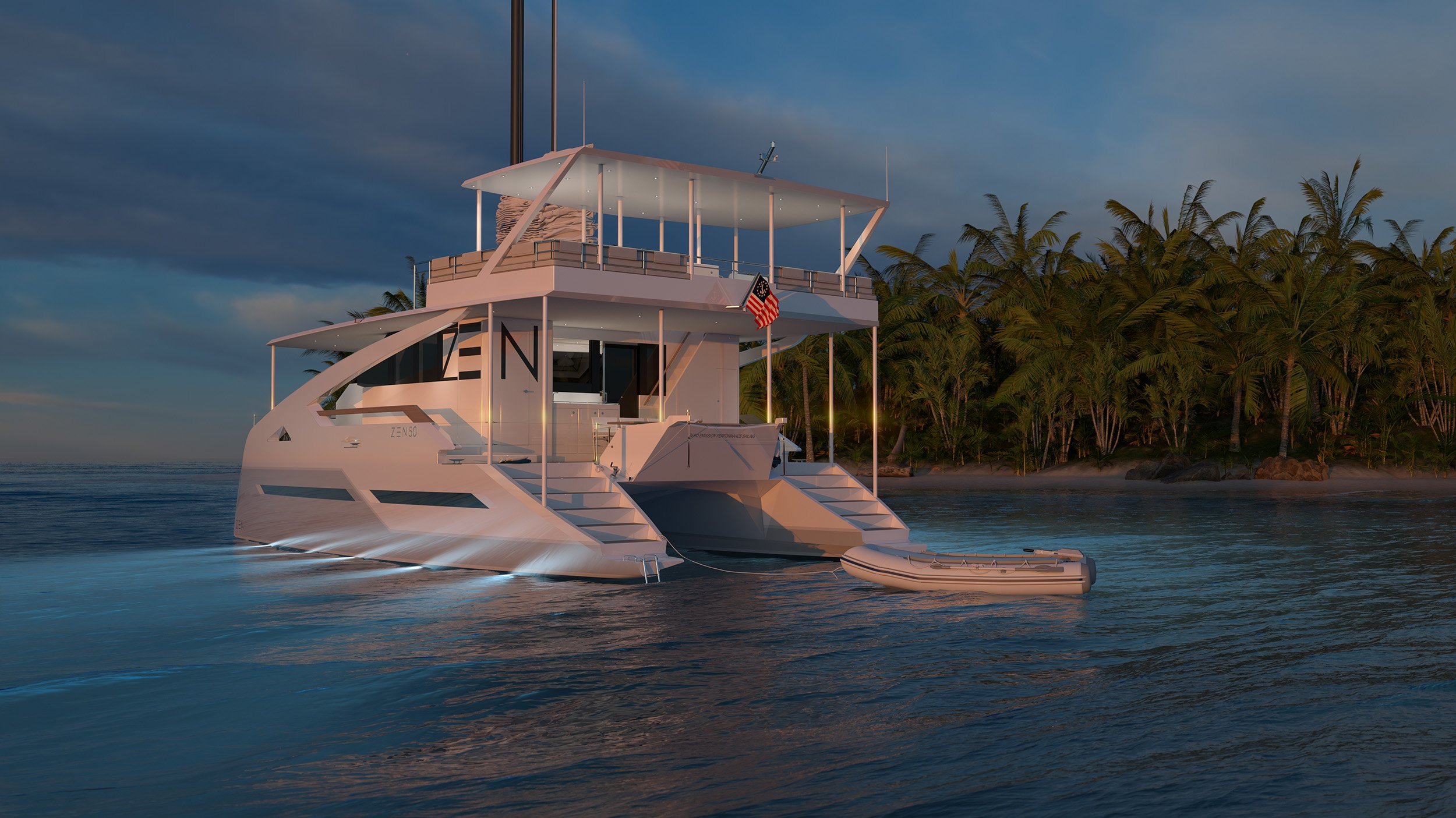
Unrivaled space & COMFORT
The ZEN50 offers the speeds of a performance catamaran, the comfort of a large motor yacht and the simplicity of an electric car. No less than 2 large day beds, 3 dining areas for over 10 people, 1 professional galley and 2 wet kitchens, 5 heads, up to 4 double ensuite cabins, 1 bunk double and 1 single together with both saloon and dining areas converting into extra sleeping areas, this is simply unrivaled on a 50 ft. catamaran. Add an electric tender, dive compressor, satellite internet, 2 helm stations (cockpit and flybridge), a solar roof that converts into a gigantic upper deck to enjoy the most epic sunrises and sunsets, welcome onboard the ZEN50!
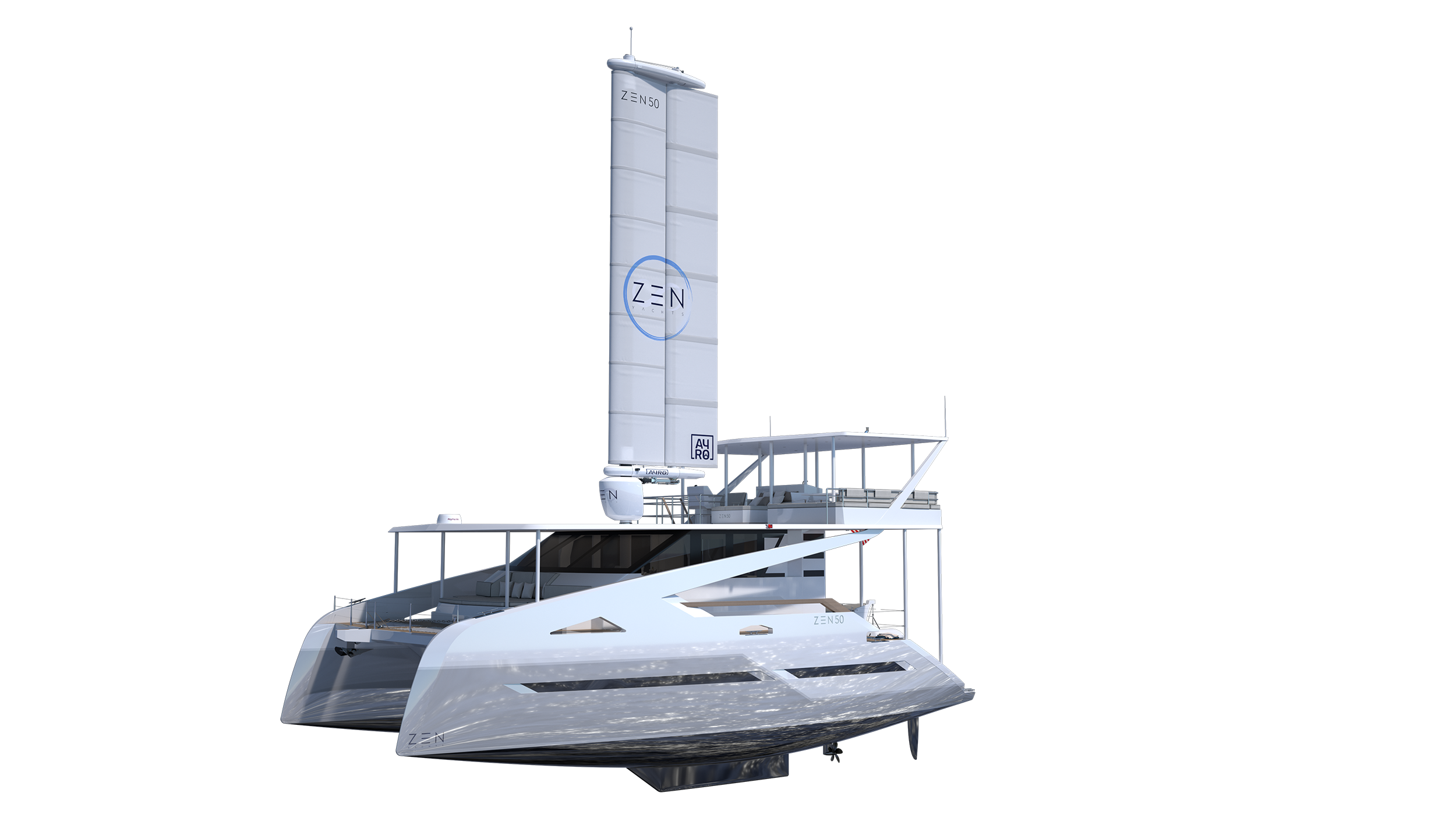
SPECIFICATIONS
Main particulars.
• Length Over All: 15.7m
• Beam: 8.4m
• Depth Molded: 2.7m at midship
• Displacement (light) : 17 T
• Draft (design): 1.3m (4.3ft) incl. keel
• Passenger Capacity: 12
• Berths: 12 (4 x double + 2 x single + saloon)
• Building Material: Carbon Fiber - Corecell™ composite
• Certification: CE Cat A - Unrestricted with 12 persons
Note: Some of the above figures may vary between versions
PROPULSION & ENERGY
• Propulsion: 2 x 50 kW brushless DC motors
• Main Battery Pack Capacity: 160 kWh Lithium
• Solar Roof Peak Power: 18 kWp
• Wingsail: Oceanwings® OWS 3.2 by Ayro©
• Backup Battery Pack Capacity (Nav/Com/Wing): 5 kWh Lithium
• Main System Voltage: 48V - Low voltage for total human safety
• Accommodation Voltage: 110V or 220V
SPEED & RANGE
• Max. Speed on e-motor only: 10 kn
• Max. Speed on e-motor & Wingsail: 14 kn
• Cruising Speed for continuous operation - solar only: 4.5 - 5 kn
• Cruising Speed for continuous operation - solar and wing: 6 - 10 kn
• Cruising Speed day time: 8 - 10 kn
• Range Over 24 h: 180+ nm
Note: These values may vary between versions and sea / weather conditions
EQUIPMENT INCLUDED - RACER VERSION
• Integrated power management system
• Solar power & energy storage system
• Electric propulsion system
• By-wire steering system
• Helm stations at cockpit & flybridge
• Galley counters, storage, sink, oven, stove, fridge, freezer
• 4 en suite heads with enclosed shower, toilet, sink & faucet (in each head)
• All cabin furniture (as shown in layouts)
• Aft deck fixed dining table and aft sofa with collapsible back rest (as shown in layouts)
• Fore deck day bed and lateral seats (as shown in layouts)
• Outdoor marine cork decking / indoor saloon natural bamboo decking
• All cushions In/Outdoor upholstered with Sunbrella® fabric
• 6 deck hatches
• 2 x 500 liter (2 x 132 gal) fresh water tanks
• 2 x 100 liter approx. (2 x 26 gal) fresh water tanks + 1 fresh water pump
• 2 x 350+ liter approx. (2 x 92 gal) holding tanks
• Railings, cleats and fore deck trampolines
• Mooring equipment: 33 kg Rocna® stainless steel anchor + 50 m stainless steel chain 10 mm + 150 m nylon rope + e-windlass
• Regulatory navigation equipment including navigation lights & mast
• 2 x chart plotter 16”; 2 x VHF with DSC button
• Regulatory Life Saving Appliances
• Critical spare parts kit
Note: The above equipment is for the Racer version. Cruiser & Explorer versions carry additional equipment
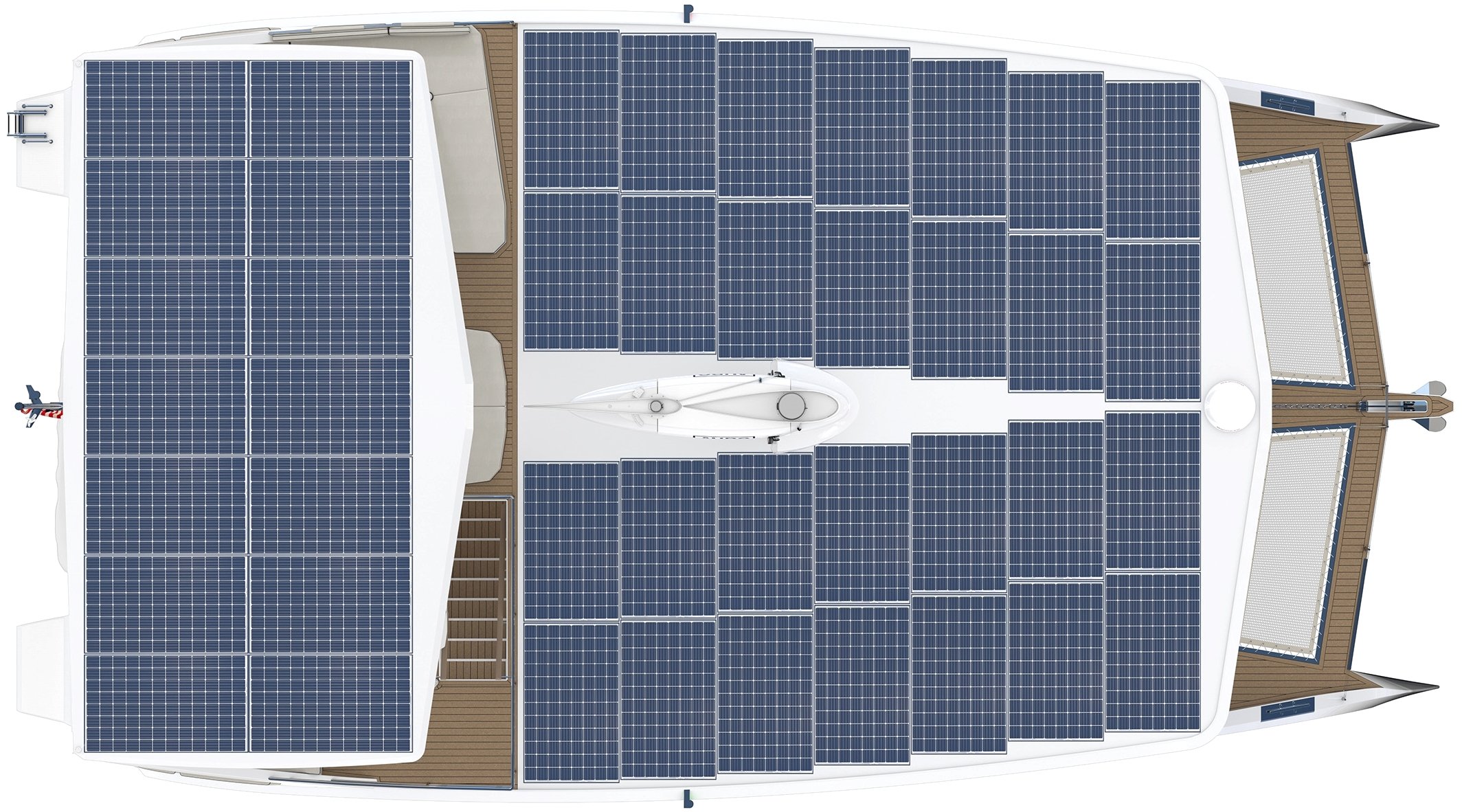
ZEN50 Solar Wingsail Electric Catamaran - Solar Roof Layout

ZEN50 Solar Wingsail Electric Catamaran - Flybridge Layout
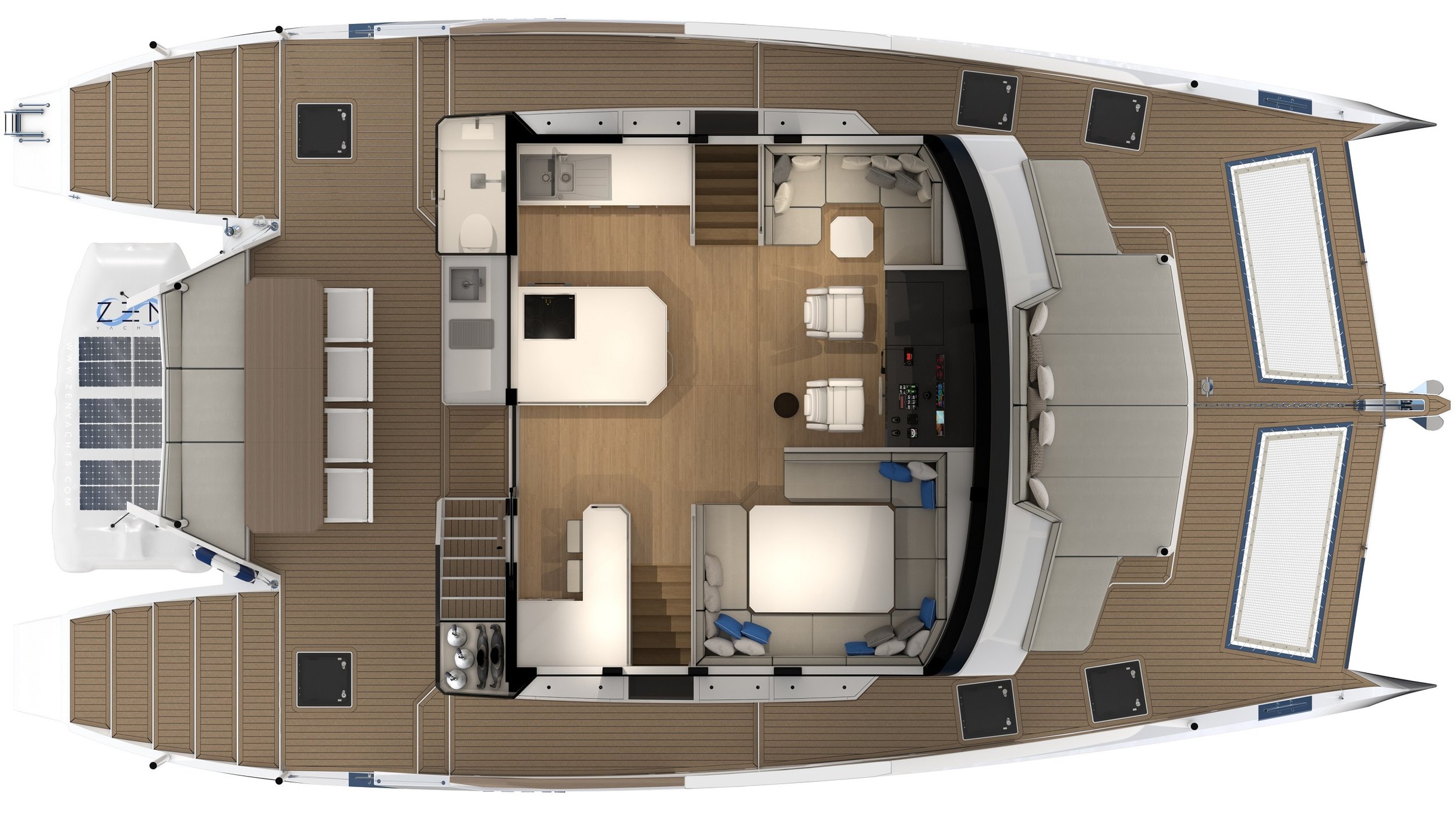
ZEN50 Solar Wingsail Electric Catamaran - Main Deck Layout - Asymmetric D (subject to changes)
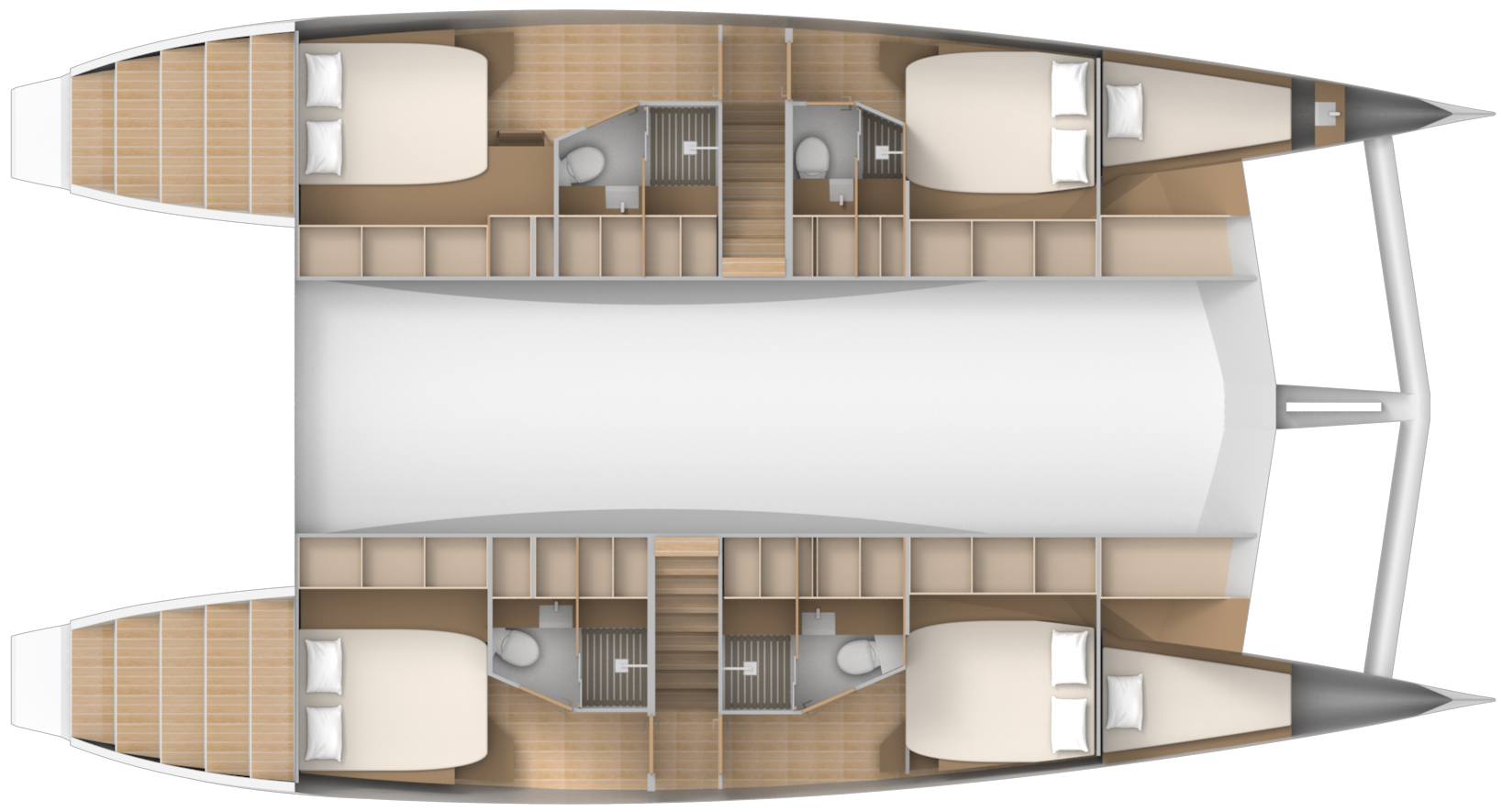
ZEN50 Solar Wingsail Electric Catamaran - Cabin Layout - Asymmetric D (subject to changes)
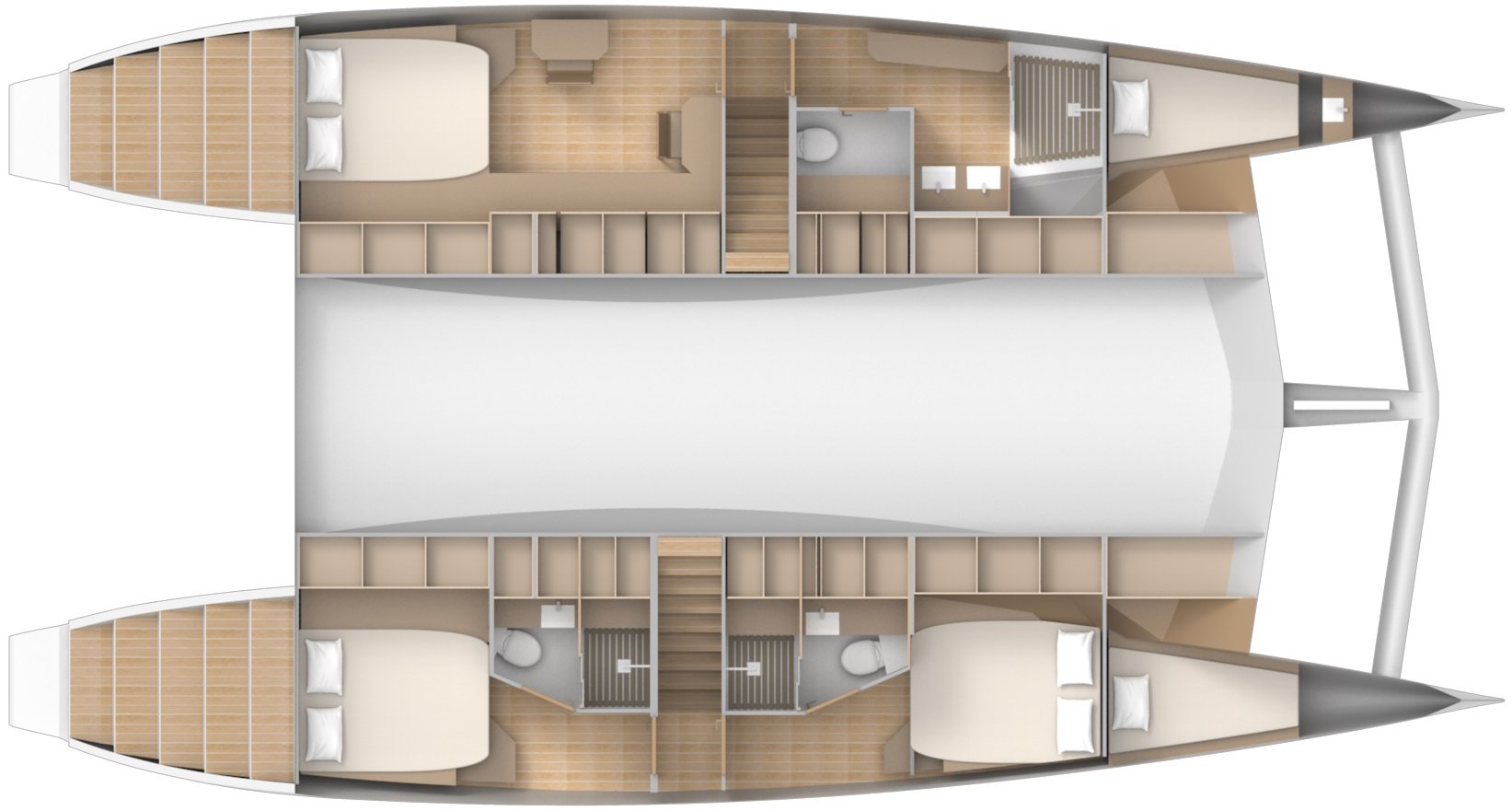
ZEN50 Solar Wingsail Electric Catamaran - Cabin Layout - Asymmetric E (subject to changes)
SOLAR & WINGSAIL
OCEAN RACER
Solar & Wingsail, basic configuration ready to sail, navigation, safety, fridge, etc.
EUR 2 400 000
WORLD CRUISER
Solar & Wingsail, well equipped configuration with, among other options, electric tender, AC and water maker
EUR 2 650 000
ARCTIC EXPLORER
Solar & Wingsail ultimate configuration with all available options
EUR 2 850 000
Solar only, ready to sail basic configuration with navigation, safety, fridge, etc.
EUR 1 850 000
CONTINENTAL CRUISER
Solar only, well equipped configuration with, among other options, electric tender, AC and water maker
EUR 2 100 000
TROPICAL EXPLORER
Solar only, ultimate configuration with all available options
EUR 2 300 000
Ready to reserve your ZEN50?
Want more information .
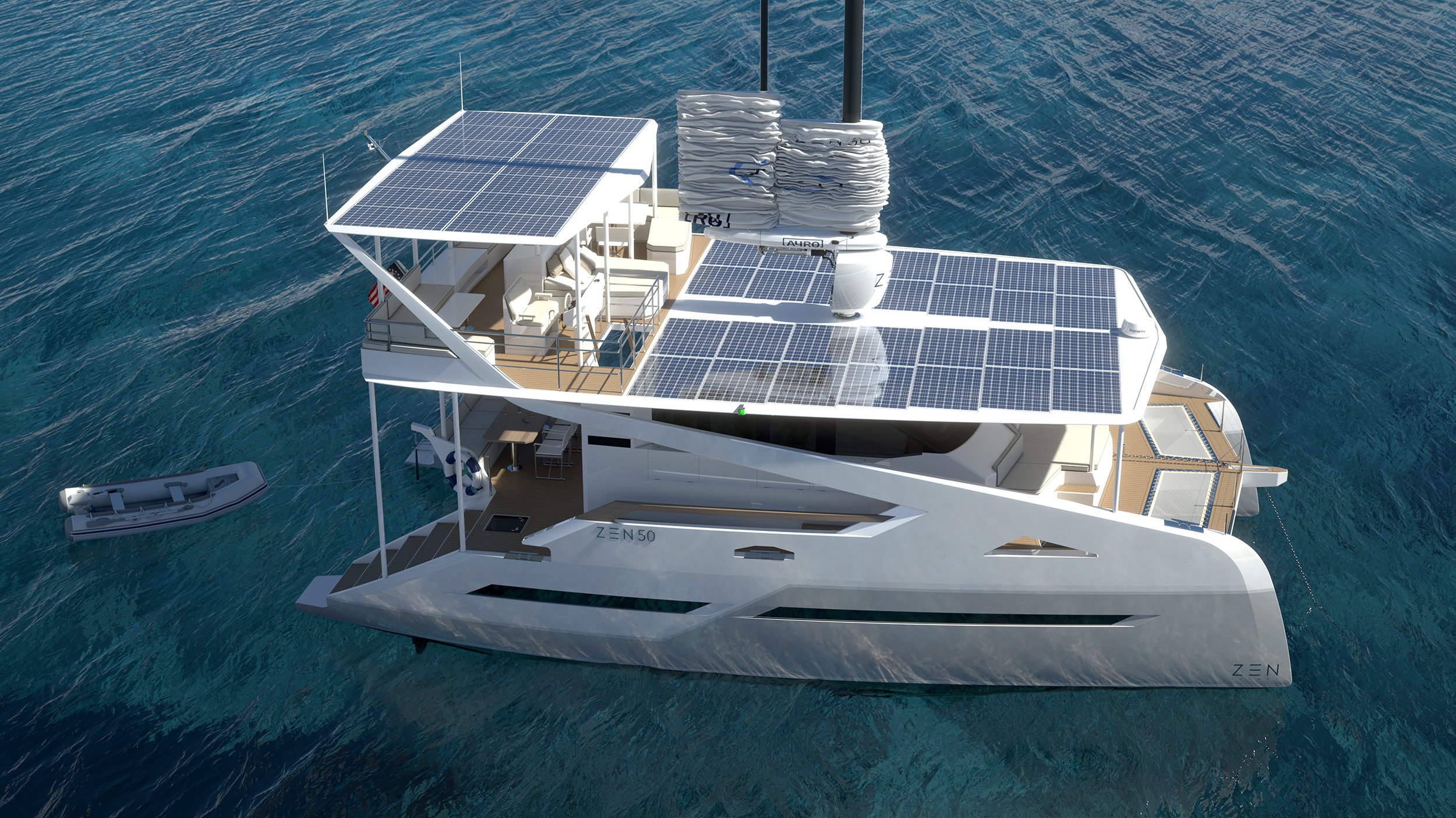
- Yachting World
- Digital Edition

Review: Silent 55, the extraordinary solar powered yacht
- January 18, 2019
Silent Yachts is tapping into the solar zeitgeist and creating a new meaning for the term ‘powercat’. Sam Fortescue reports

There is a slow, silent revolution under way in the yachting world. It is a revolution that is introducing tonnes of lithium and a sprinkling of silicon to the spec list of new boats. Holding out the promise of silent mobility, plus limitless domestic power on board, it made a big splash at the last Cannes Festival of Yachting – not least thanks to the new Silent 55 catamaran which debuted there.
From the pontoon side, the Silent 55 looks like a typical modern catamaran, with a big coachroof studded with windows and a flybridge helm. Except there’s no mast. Now, bear with me here. I realise that this is a sailing magazine, but we will shortly get back to more familiar territory. The unique qualities of this catamaran only become apparent from up top, where an expanse of solar panels stretches away fore and aft, embedded into the coachroof. The hard top itself carries yet more panels, and can be folded down flush to give an unshaded solar array of 49m2. During the heat of a summer day in the Med, this is capable of generating 10kW of power and up to around 60kWh in the course of the day.

But to make a solar system work in reality, Köhler had to go back to the drawing board on yacht design. The saloon and hulls have extra thermal insulation to keep air-con losses down, and the use of carbon and aramid in key areas helps reduce the overall weight to a decent 17 tonnes (a Lagoon 52 weighs 22.5 tonnes). He has tried to keep windows out of the direct sun with long overhangs and in contrast to the Lagoon’s 12 deck hatches, the Silent 55 has just two.
Holistic design
On the other hand, it has lots of opening windows, to allow a natural draught to do its job. “It’s a holistic approach – you can’t take the batteries and the drivetrain and drop it into another boat.”
Of course, using the propulsion system quickly takes its toll of the boat’s 140kW battery bank. The model on display at Cannes had two 135kW motors, giving you just half an hour of silent motoring flat-out, albeit at a top speed of over 20 knots. More reasonable 30kW engines and a single-digit speed give you greater range. Nonetheless, the electric drive alone isn’t going to allow you to outrun a storm, or race home after a day at anchor, so the boat is designed to work with a generator hidden in the heavily insulated transom of its starboard hull. At cruising speed of around 5-6 knots, Köhler says there is rarely any need to use the generator, citing an owner who has just emailed him triumphantly about a second year totally generator-free. “In the end, you have to compare it to the performance of a sailing boat,” Köhler says. “It is as fast as a sailing boat in similar conditions – after all, there is no wind without sun.” He went so far as to tell me during the sea trial in Palma, Mallorca, that he believed the majority of sailors would happily dispense with the hassle of sails and a rig if only they could enjoy silent motoring and anchoring. “As soon as people realise the incredible concept of this boat, they won’t understand why they ever did anything else.”
The market does not seem to agree with him – yet. Sales of the boat have been good – they have already sold six, five of which are already in the water. But of those, four customers have taken the sail option, which means planting a 19.7m tall mast complete with boom and rigging slap bang in the middle of the coachroof solar array. “I was a bit amazed,” Köhler admits. “The shade from the rig reduces the energy generated by the solar area, while it costs more and is heavier, so consumes more fuel. Maybe it is for optical reasons.” In fact, the shade of the rig slashes the average yield of the solar panels in half. In the Med, that means around 30kWh per day. But perhaps it figures. The typical profile of buyers is an environmentalist who has a Tesla electric car and is “an early adopter who likes to have things before others”. And at low speeds, with modest use of the air-con, the reduced energy generation should still cover daily consumption.

The performance under sail should be reasonable because of the lightweight build of the boat, its broad 8.47m beam and stub keels added to each hull. Control lines are led back via conduits in the coachroof to the flybridge helm station, to make single-handing under sail a possibility.
More interesting, I think, is a sort of halfway-house option using a kite rig. This optimises the performance of the solar panels and gives plenty of propulsion. On the smaller 55 and the 64, Silent Yachts currently recommends a 19m2 kite that costs around €25,000 – a fraction of the cost of a new mast, boom, shrouds and sails. “The sail automatically makes a figure of eight above the boat, and you can steer it with a joystick or an app on an android phone,” Köhler explains. “It can propel the 55 at up to 6 knots, even in light winds.” Perfect for an Atlantic crossing, then.
For the bigger Silent 79, which will hit the water in the summer, a commercial grade Sky Sail system needs to be used – a smaller version of the ones used on cargo ships. This kite can propel the boat at ten knots, but it costs more than ten times as much as its smaller cousin. Both are capable of pulling the boat upwind. So far, so new. But outside the novel energy and propulsion system, the Silent 55 aims to do what many other cruising catamarans are trying to achieve. “Most of our clients order for circumnavigation and long-term cruising,” Köhler says. So the boat is aimed to be as comfortable and capable as possible with watermakers, TVs and an induction hob that all capitalise on the boat’s abundant energy. A flexible configuration allows owners the choice of between three and six cabins – the latter designed for charter. The owner’s cabin lies forward of the saloon, under the windows of the coachroof, which provide magnificent views and abundant natural light. There’s a walk-around bed and steps down into the starboard hull give access to an en-suite shower room and heads.

In my view, the best cabin lies aft of this, accessed in the traditional manner down steps out of the saloon. The king-sized bed lies athwartships and the shower is larger than that of the master cabin. There’s more space down here, better headroom and still plenty of light courtesy of the many hull lights.

When I had the chance to sea trial the Silent 55, albeit in motorboat format, I jumped at it. It was a contrary autumn day on Mallorca with 15 knots breeze – just a shame, then, that this wasn’t one of the sailing configured versions.
To start with, getting on board is made really easy courtesy of deep boarding platforms on the skirts. She feels rather square because of that vast, glazed saloon with its deep overhang, and perhaps because of the utilitarian nature of the hard top, which is really about supporting more solar panels. Nevertheless, the side decks are broad and uncluttered. The space up top is designed to concertina down flat, hence the hydraulic rams, fold-down seat back and lowering console. It makes a great sailing position, though, with all round visibility, and is also perfect for sundowners at anchor. When the rain comes down, this feels quite exposed, but there is a fully sheltered helm at the front of the saloon, and it is also possible to drive the boat from anywhere using a tablet thanks to smart electronics. Under power, the handling is superb. The quietness of the motors is astonishing, and I gather they’ll be inaudible on the next boat, which will do away with the gearbox. Even in the aft cabins, directly above the motors, there is no more than a distant hum. The boat responds instantly to the power and the wind seemed to have no impact at all. As with any propulsion system, the power consumption jumps as you pile on the speed – it was sobering to see. At 6 knots, both motors drew 10kW but at 8 knots it was closer to 30kW. I liked the huge saloon with its raised table for 360º views. And the sliding door and window gives great access aft, connecting the saloon and cockpit in fine conditions. The finish was smart and in muted tones, feeling more Scandinavian than German.
Intriguingly, at least it seems to me, Köhler has tapped into something with the concept behind Silent Yachts – but not entirely for the reasons that he expected. Buyers are opting for the sail or kite versions of the boat because they want a comfortable wind-powered craft with abundant, quiet energy on tap. It brings a whole new meaning to the term ‘powercat’

Multihulls: new yacht reviews
Yes, the racing world is stretching the boundaries, with 100ft foiling maxi trimarans tearing around the globe and F50s, the…

Multihulls: owners’ experiences and reviews
They have two different boats, different sailing plans and two very different sets of experience. But what these cruisers have…
- Motorcycles
- Car of the Month
- Destinations
- Men’s Fashion
- Watch Collector
- Art & Collectibles
- Vacation Homes
- Celebrity Homes
- New Construction
- Home Design
- Electronics
- Fine Dining
- Les Marquables de Martell
- Mira Villas
- Panther National
- Reynolds Lake Oconee
- Wynn Las Vegas
- 672 Wine Club
- Sports & Leisure
- Health & Wellness
- Best of the Best
- The Ultimate Gift Guide
Solar-Powered Yachts Are Taking Over. Here’s Why That’s a Good Thing.
Diesel-powered engines are getting some healthy competition., michael verdon, michael verdon's most recent stories.
- The Billionaire Space Race Is About to Heat Up Again—Here’s What You Need to Know
- Brabus’s New Flagship Is a Loud, Speedy 45-Foot Dayboat. We Hopped Onboard.
- Taylor Swift Flew 178,000 Miles Last Year, and This College Student Can Show You Where
- Share This Article

In 2005, Michael Köhler turned away from the diesel engines that had been powering his boats for 23 years and went instead with solar power, an idea that seemed laughable, given the technology’s limitations at the time. But after five years of testing and development, Köhler’s Solarwave 46 became the world’s first solar-powered yacht.
Since then, his Silent Yachts brand has become larger and ever-more luxurious, running bow-to-bow with traditional motoryachts. The new 80-foot tri-deck has a spacious salon and six staterooms, six-and-a-half-foot ceilings and unlimited cruising potential, since the lithium-ion batteries powering the 250 kw electric motors recharge on the go (and for free) courtesy of the yacht’s 1,227 square feet of solar panels. And the benefits extend beyond minimal emissions and engine vibration. “We have more living space than competitors,” Köhler says, “since electric motors require less space than diesel engines.”

Very different vessels are using electric propulsion to minimize noise and lower emissions, like Super Air’s Nautique GS22E. Super Air
The solar niche is small but growing, with new entrants like Serenity Yachts and the BYD Group. These power yachts have cruising speeds of 8 knots and top speeds of up to 20 knots, though they’ll burn through battery packs quickly at that rate. Therein lies the design dilemma of battery-powered boats: Do builders prioritize range or velocity?
Correct Craft ’s new GS22E wakesurf boat found a way to twist battery limitations to its advantage. “We’ve designed the most energy-dense battery system for where a combustion engine typically goes,” says Sean Marrero, president of Watershed Innovation, which developed the GS22E’s Ingenity electric propulsion system. Tailored for hour-long sessions, owners can wakesurf in the morning, then recharge the battery so it’s ready after work. “It doesn’t run like a Tesla,” says Marrero, “but rather it mirrors the wakesurf experience with its stern dug into the water—minus the noise and emissions.” Other builders are rumored to have electric towboats in the works.

Feadship ‘s 273-foot Savannah. Feadship
In the superyacht segment, Feadship director Henk de Vries would like to see every new yacht leaving his Dutch yard equipped with hybrid propulsion by 2025. De Vries is so serious about this mission that Feadship will absorb the extra cost over conventional propulsion, currently amounting to several million dollars, of those electric drives. So far, two boats have chosen hybrid power: the 273-foot Savannah , launched in 2015, and Feadship’s largest build, the 361-foot Anna, delivered two years ago. A third yacht launched that same year, the 287-foot Lonian , is also “heavily hybrid,” de Vries says.
“When we built Savannah , a hybrid with the [battery] equivalent of many Teslas in the engine room, we also invented the classification rules for these yachts,” says de Vries. “Even though the project was successful, the superyacht world was slow to adapt. I want to get to the point where one owner says to another, ‘Oh, your boat still burns fossil fuel?’ That will help create the mindset.”
Read More On:
More marine.

This New 131-Foot Superyacht Concept Brings High Architecture to the High Seas

ISA Unveils a Trio of Sleek New Superyachts

Wider Yachts Is Debuting a 92-Foot Hybrid Catamaran at the Venice Boat Show—Here’s a First Look

Killer Whales Sunk a 50-Foot Sailing Yacht in the Strait of Gibraltar

Culinary Masters 2024
MAY 17 - 19 Join us for extraordinary meals from the nation’s brightest culinary minds.
Give the Gift of Luxury
Latest Galleries in Marine

K Superyacht in Photos

Meet ‘Home,’ the Sleek 164-Foot Superyacht That Starred in ‘Below Deck’
More from our brands, exclusive: dior names charlize theron as jewelry and skin care ambassador, no a’s in attendance: oakland trails a whopping 553 u.s. teams, demi moore on full frontal nudity with margaret qualley in ‘the substance’: ‘a very vulnerable experience’ but i had a ‘great partner who i felt very safe with’, artist joseph awuah-darko accuses kehinde wiley of sexual assault, the best yoga mats for any practice, according to instructors.
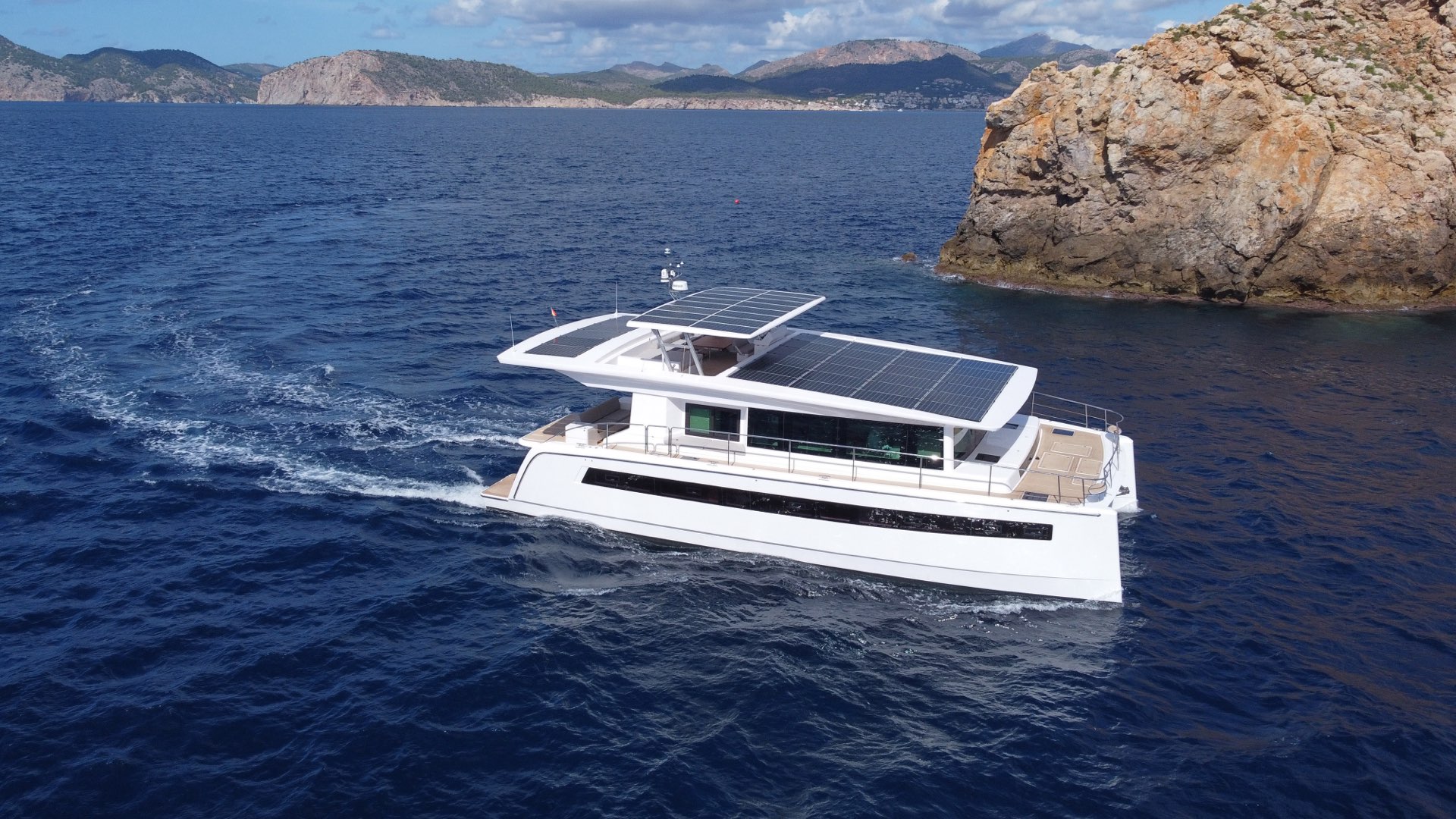
Silent Yachts
Creators of the world’s first series produced, solar-powered electric yachts.
Unlimited Range
Noiseless cruising, zero emission, minimal maintenance, pioneering solar powered yachting since 2009.
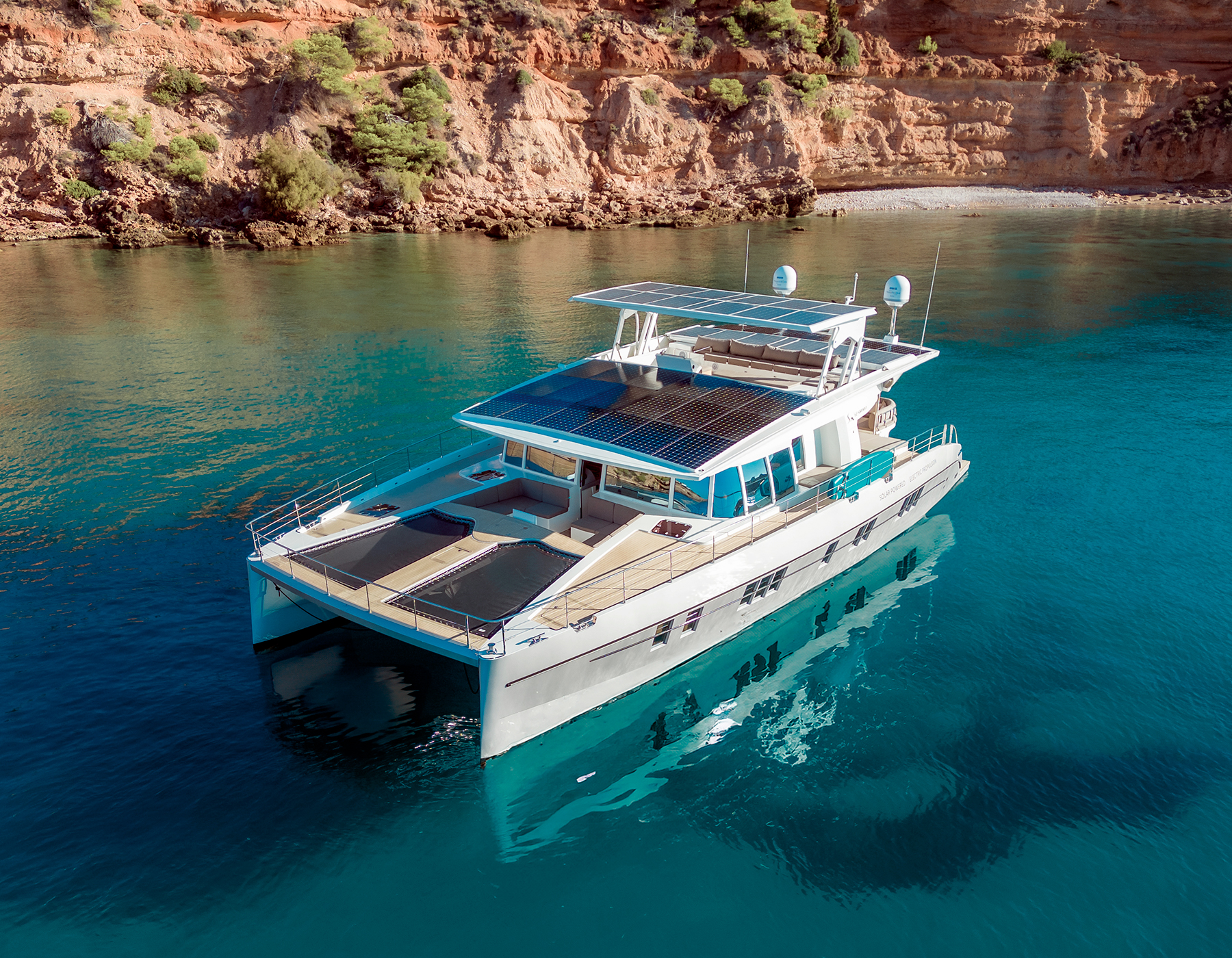
The Original Solar Yacht
As the original inventors of series produced solar-electric yachts, we pioneered this innovative approach. Our first model, the Silent 64, was launched to the market in 2016, several years before any other shipyard considered the possibility of going electric.
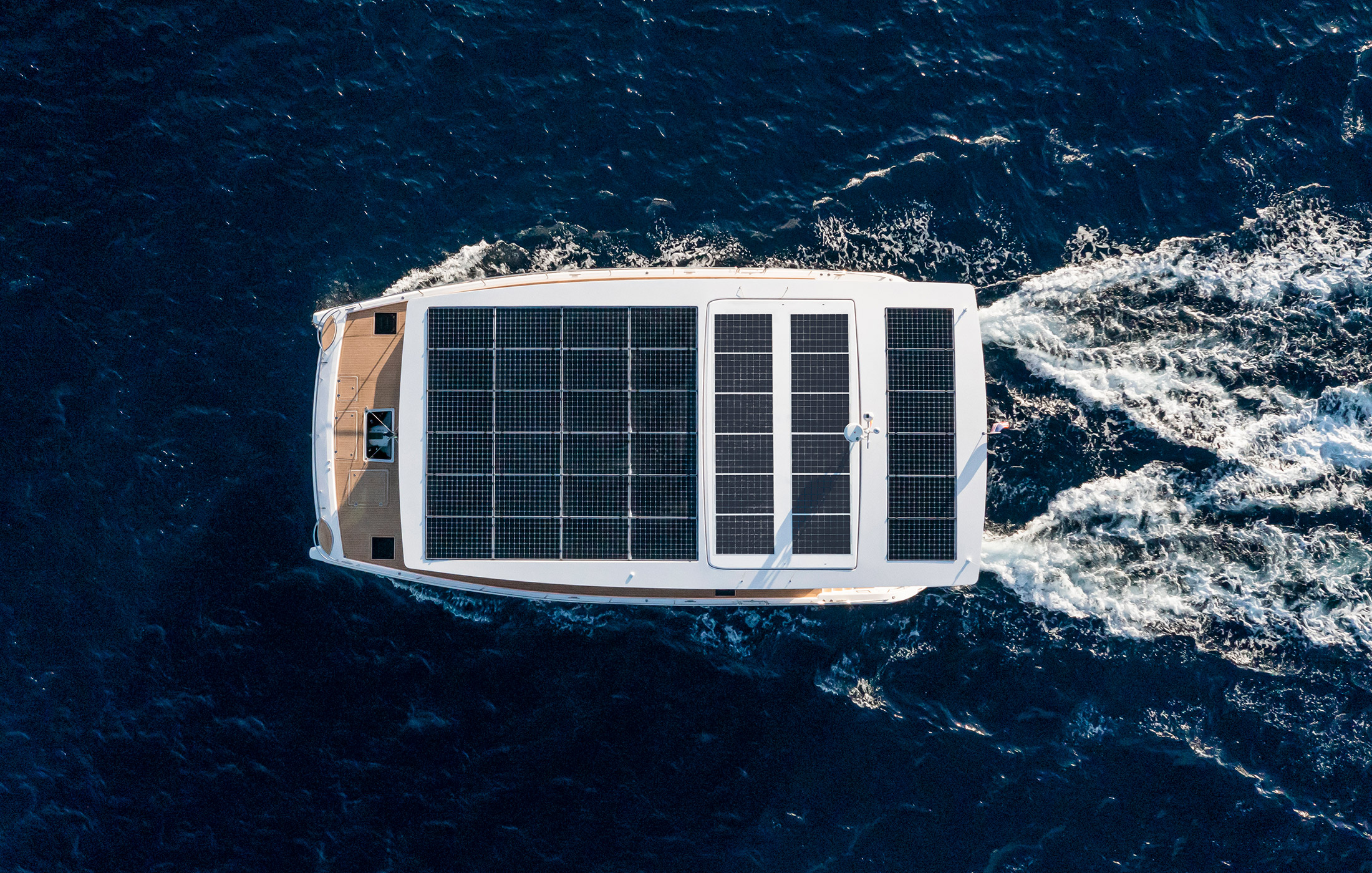
Leading Technology
Our founders began to research alternative energy sources to power yachts during the mid 1990s. Today, the technology of our in-house developed solar-electric drivetrain has been perfected and is multiple generations ahead in terms of reliability, performance and efficiency.
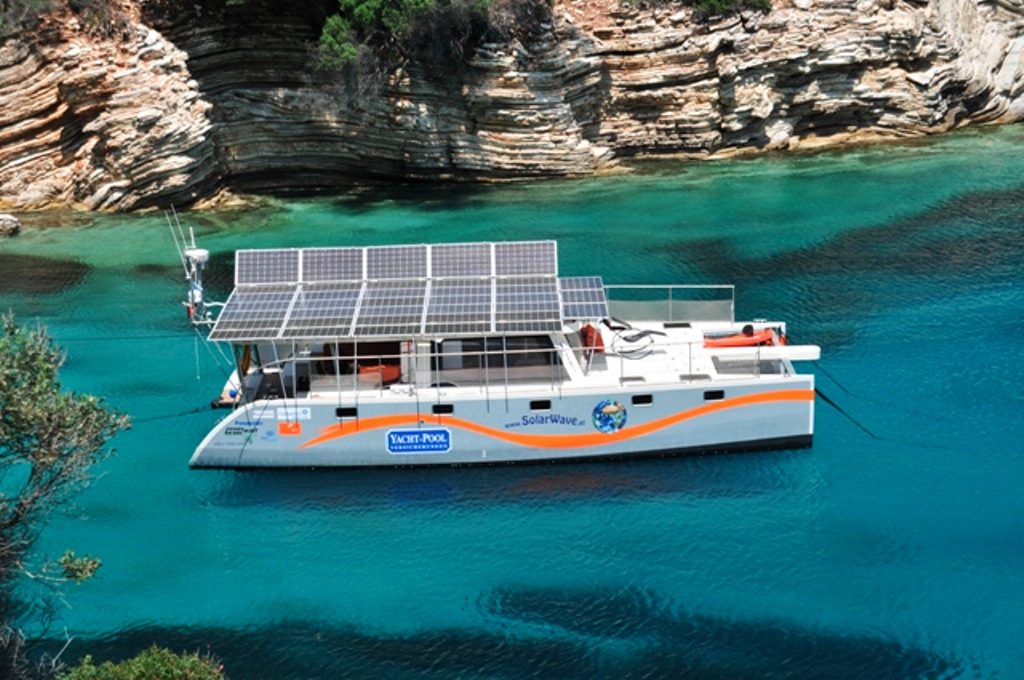
Historical Track-Record
In 2009, the Solarwave 46 was launched as our first prototype of a fully solar-electric, self-sufficient ocean-going catamaran. Since then, our electric yachts have cruised many 10.000s of nautical miles, performing flawlessly during a variety of weather conditions.
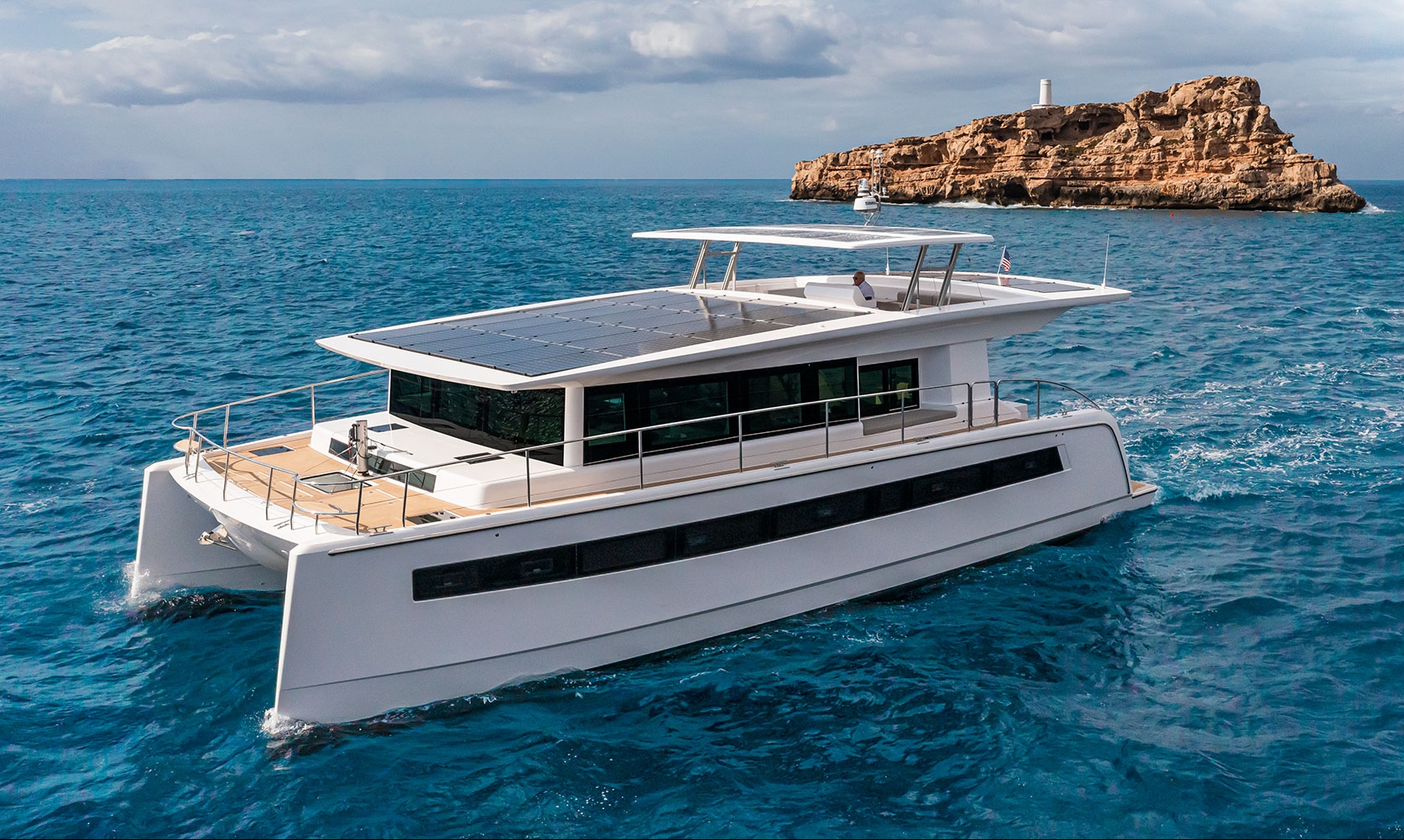
Enabling Self-Sufficiency
What differentiates a Silent is the unprecedented level of autonomy provided by our yachts. Being able to produce your own energy enables a fully self-sufficient lifestyle on board. Travel the oceans sustainably while making them your infinite playground.
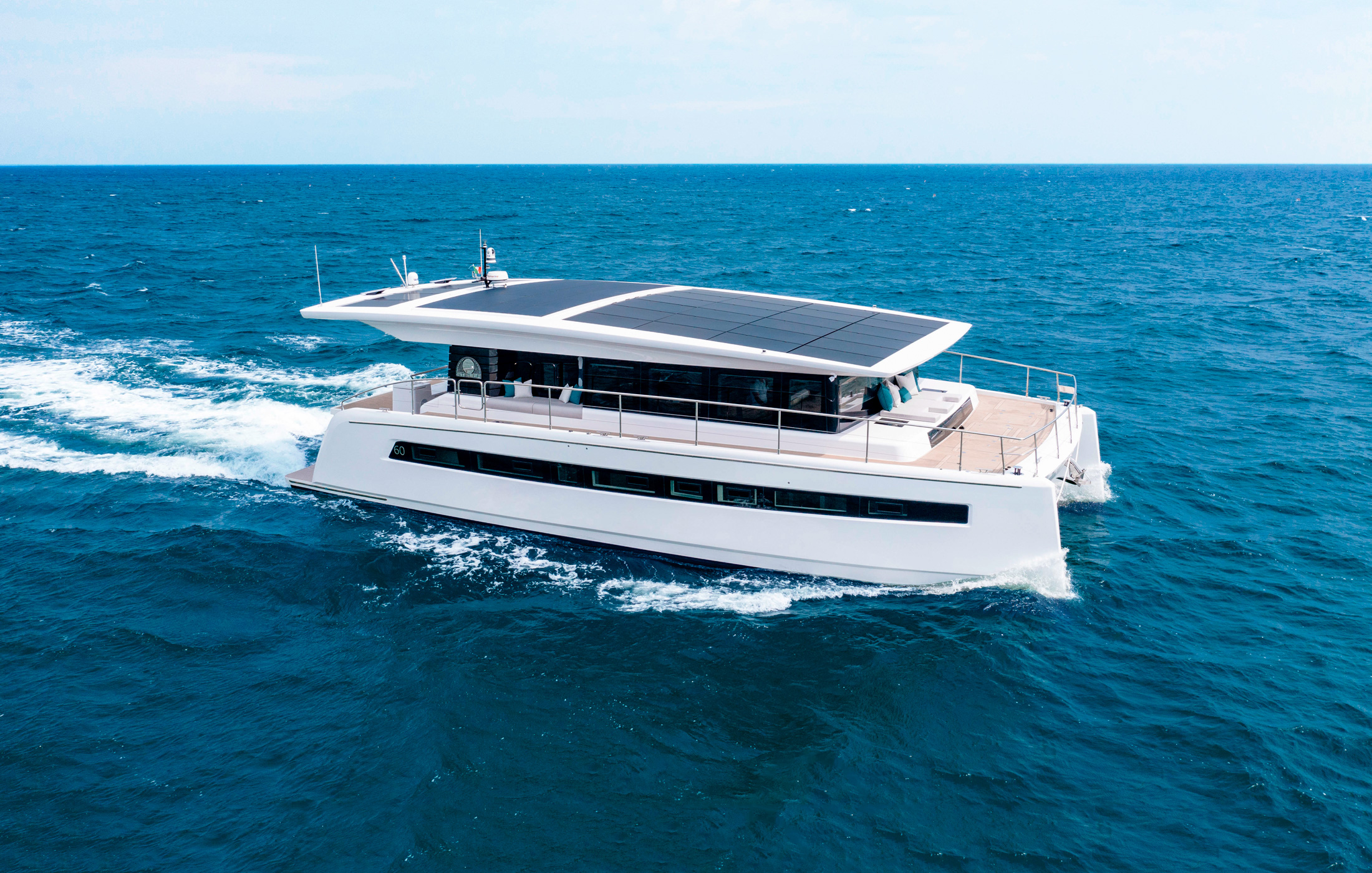
The award-winning entry to solar-electric yachts.
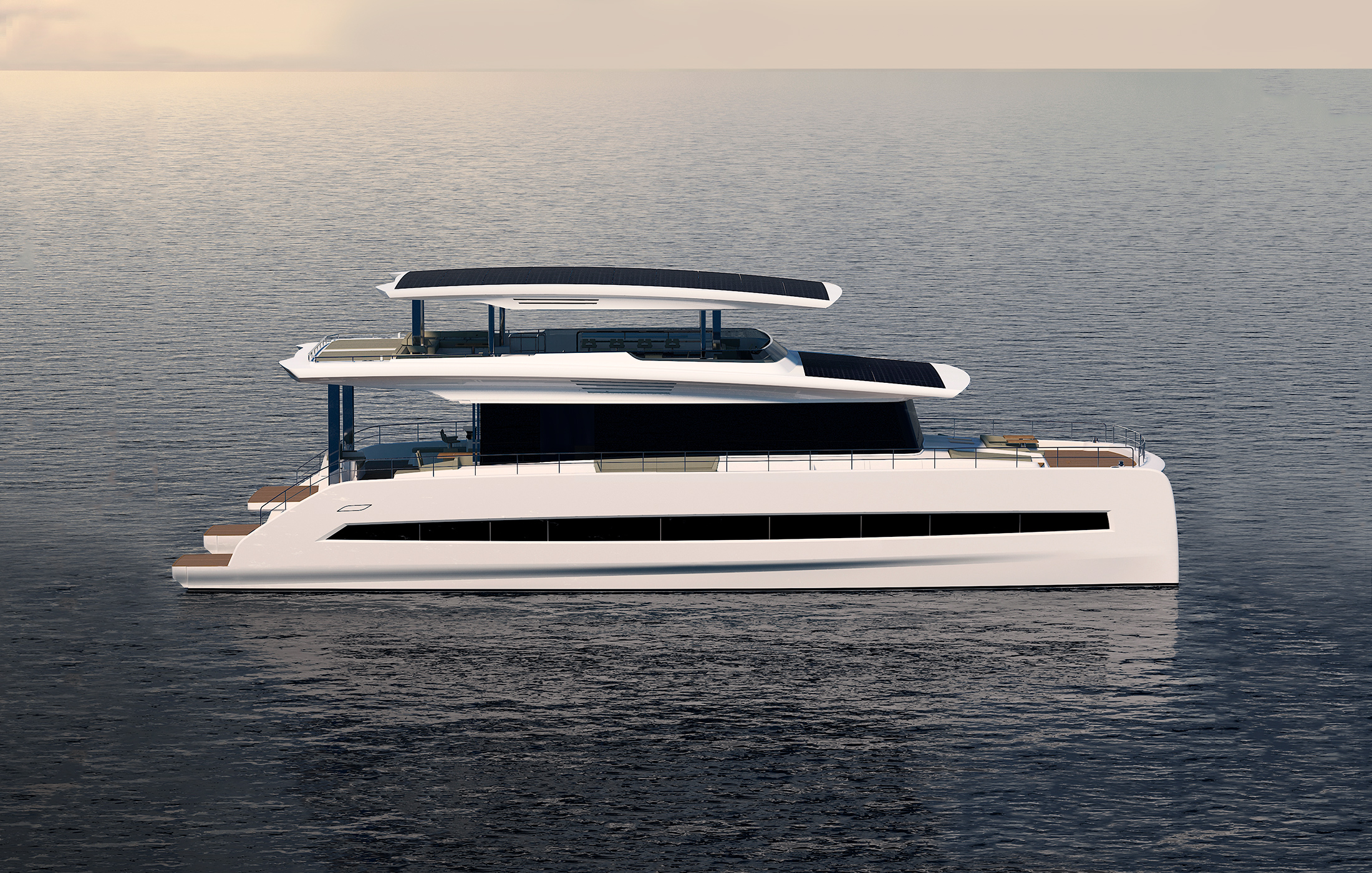
Timeless design meets state-of-the-art technology.
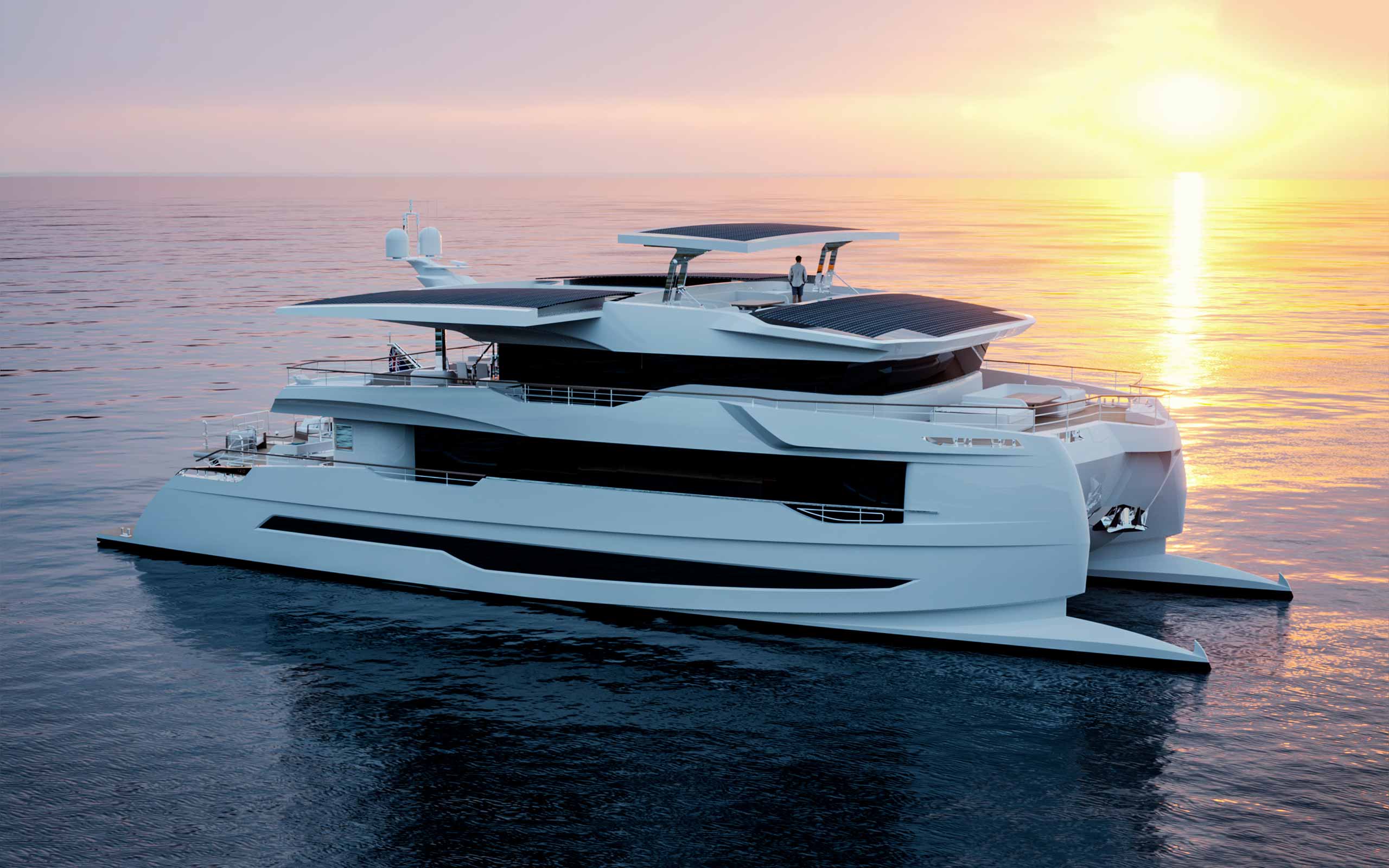
120 Explorer
The boldest expression of solar powered yachting yet.
What Makes Us Unique
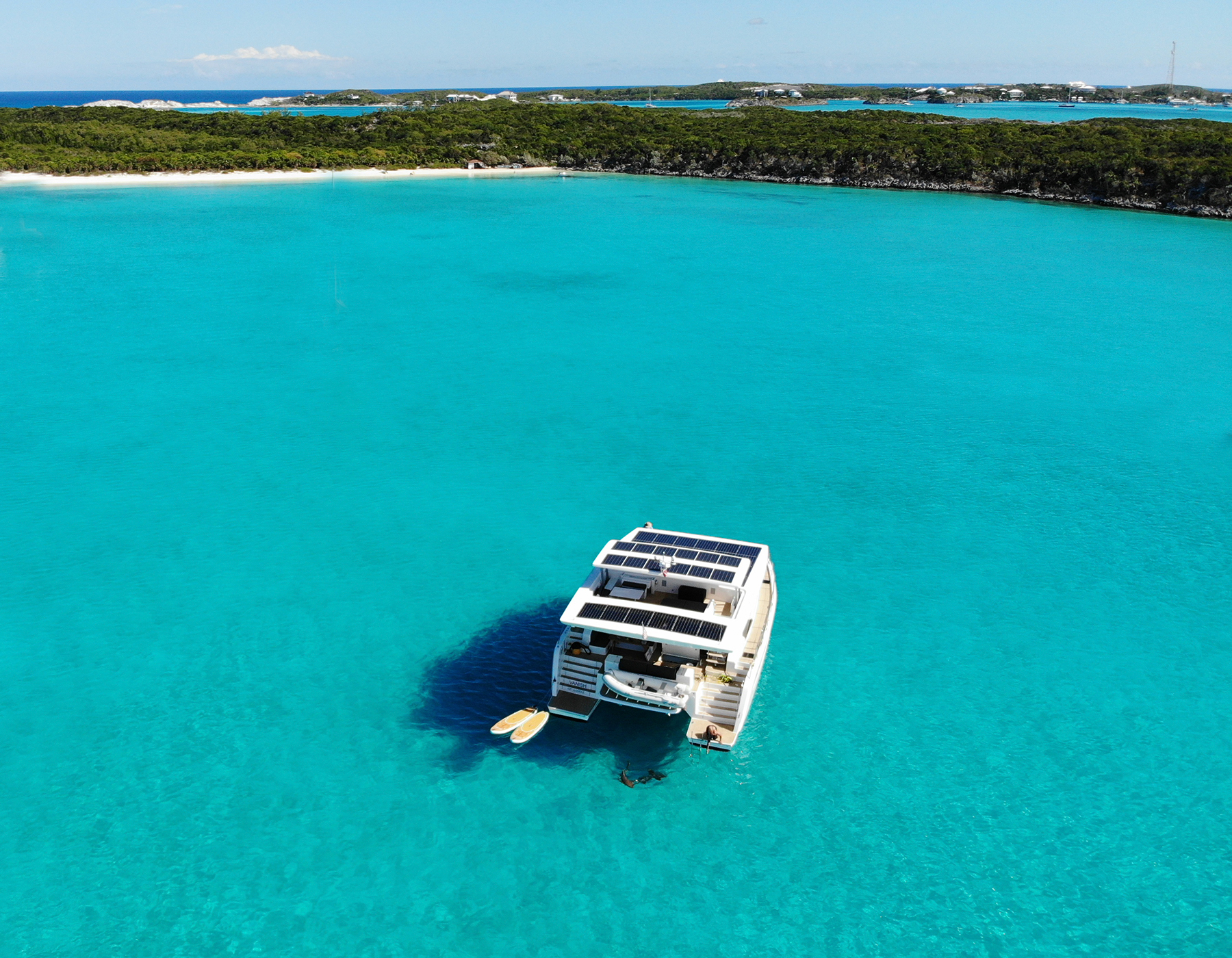
The tranquility on board of our yachts is unique. A lack of noise, fumes and vibrations create a deep connection with the sea. Luxury and sustainability finally merged into a holistic experience, working hand in hand with nature by minimizing the impact on the marine environment without compromising comfort.
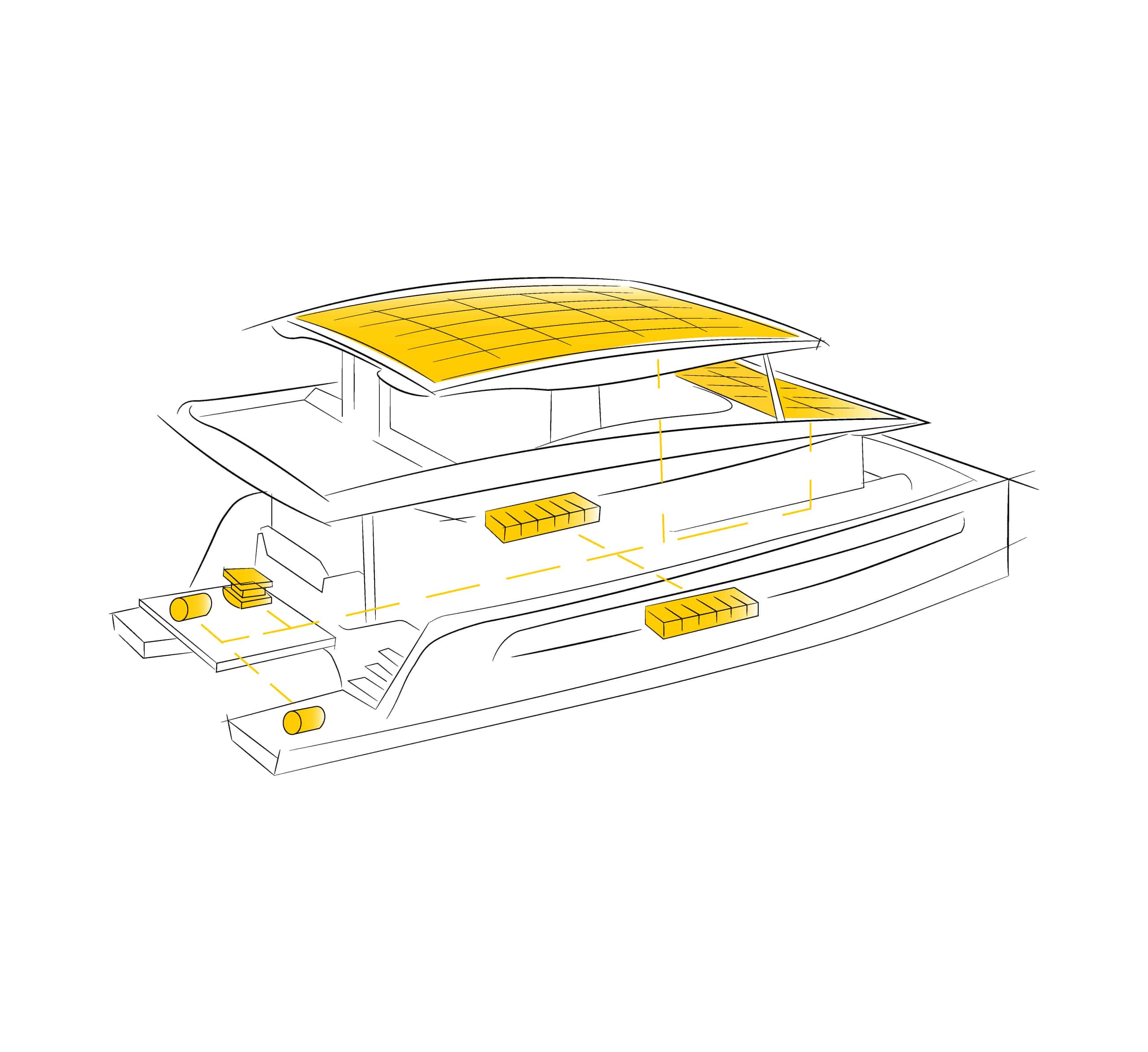
For optimal performance and efficiency, our solar-electric drivetrain integrates seamlessly with all onboard systems. Compared to fossil fuelled powertrains of motoryachts, electric powertrains have very few moving parts, resulting in minimal maintenance, maximum reliability and significantly lower running costs.
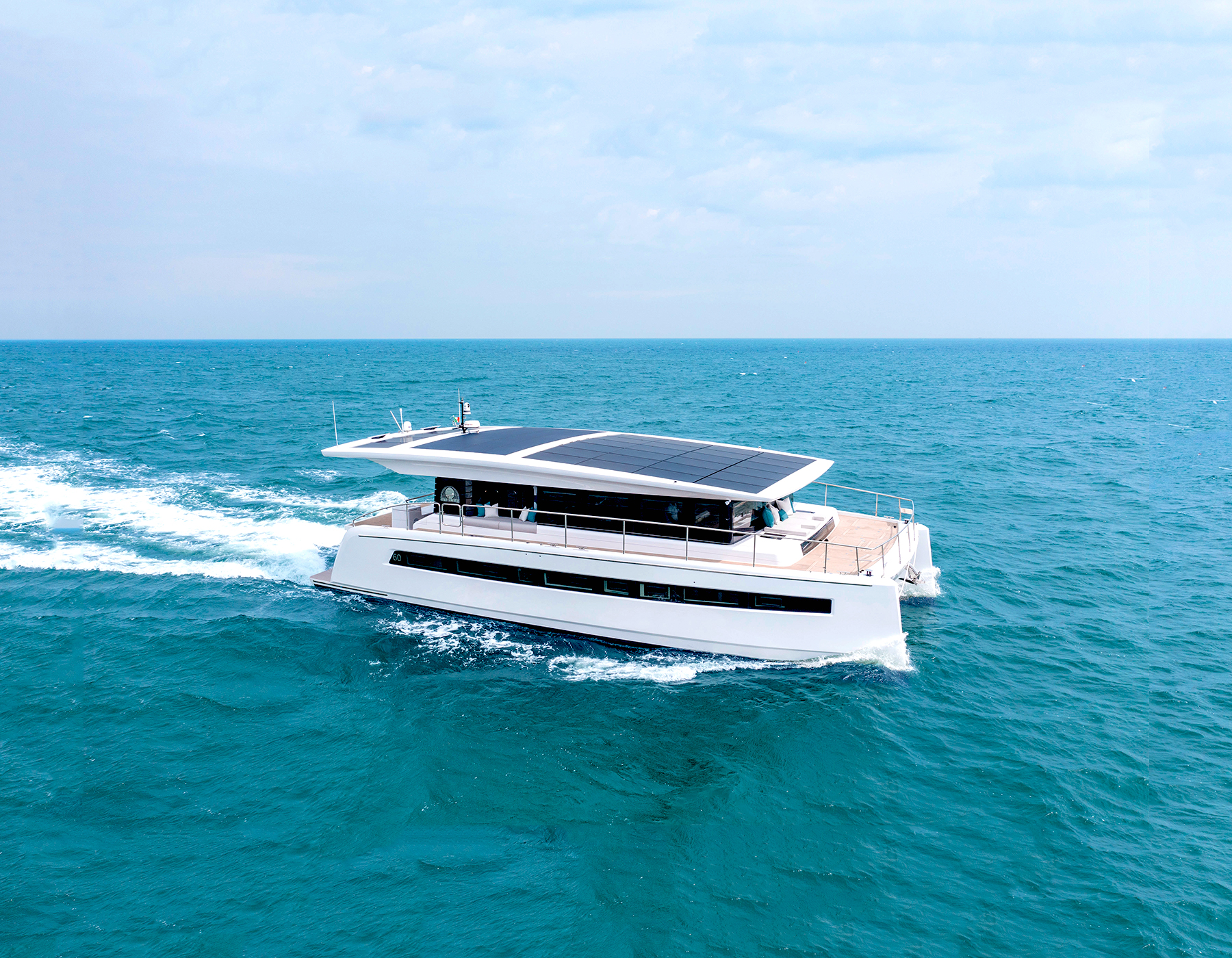
The ability to recharge your own batteries with the sun marks a new era of freedom. Depending on cruising speeds and weather conditions, a Silent has virtually unlimited range, enabling you to live a fully self-sufficient lifestyle on board. Unbound by the limitations of fossil fuels, you are free to explore the horizons.
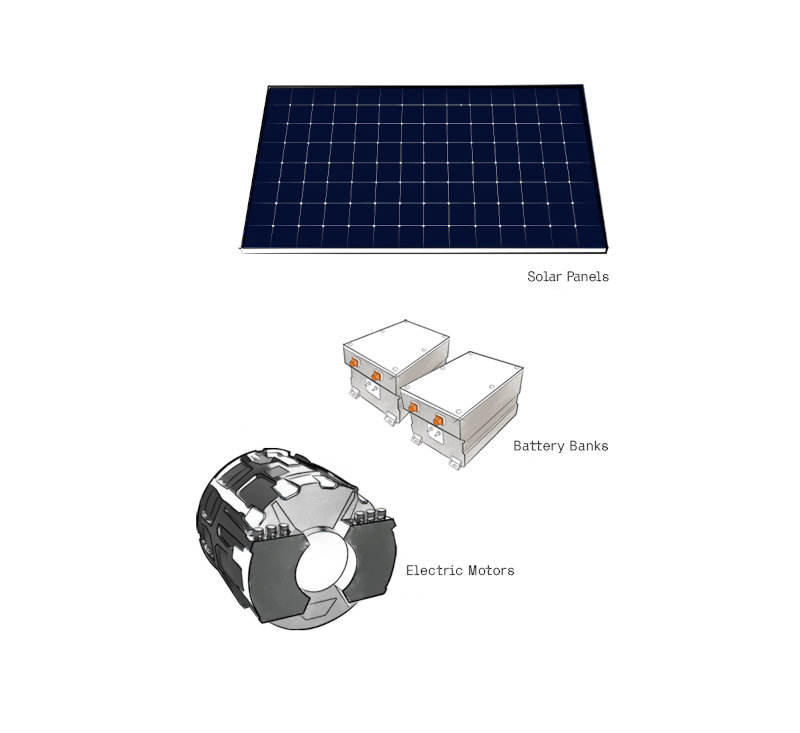
The technology powering our yachts today has been pioneered by our founders almost three decades ago. Continuous upgrading and steady optimization of the entire system are some of the key reasons our in-house developed solar-electric drivetrain offers a comprehensive portfolio of assurances and warranties.
Why Silent Yachts
A sensible approach to yachting which works in self-sufficient harmony with nature and creates a completely new experience on board.
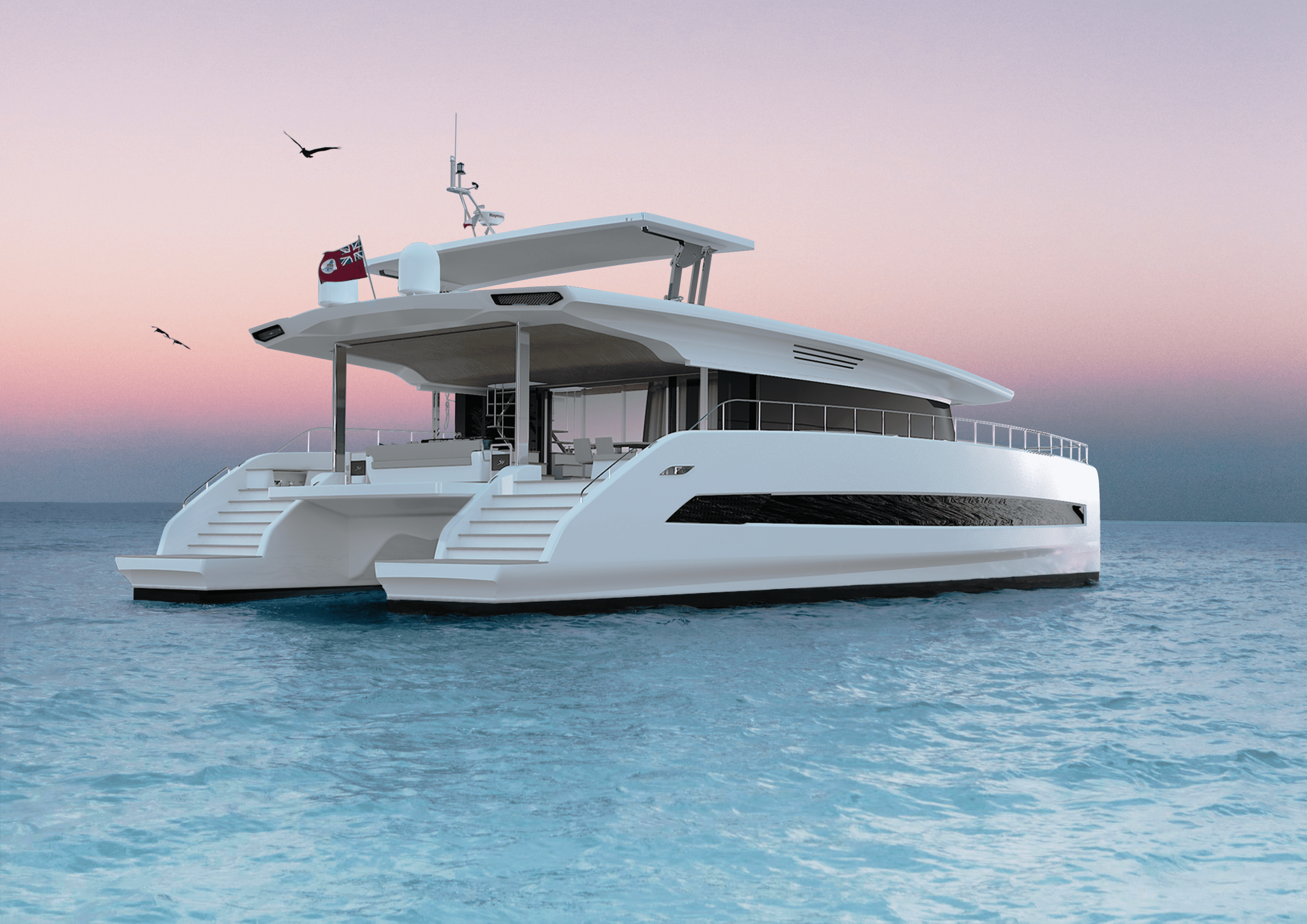
Silent-Yachts emerges stronger under new ownership
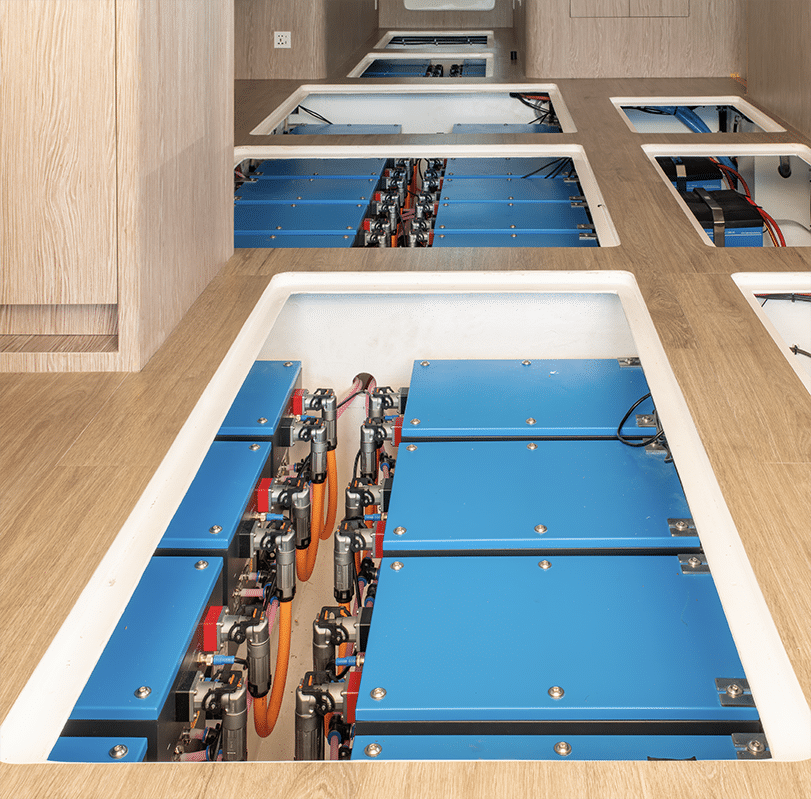
New Silent Drivetrain
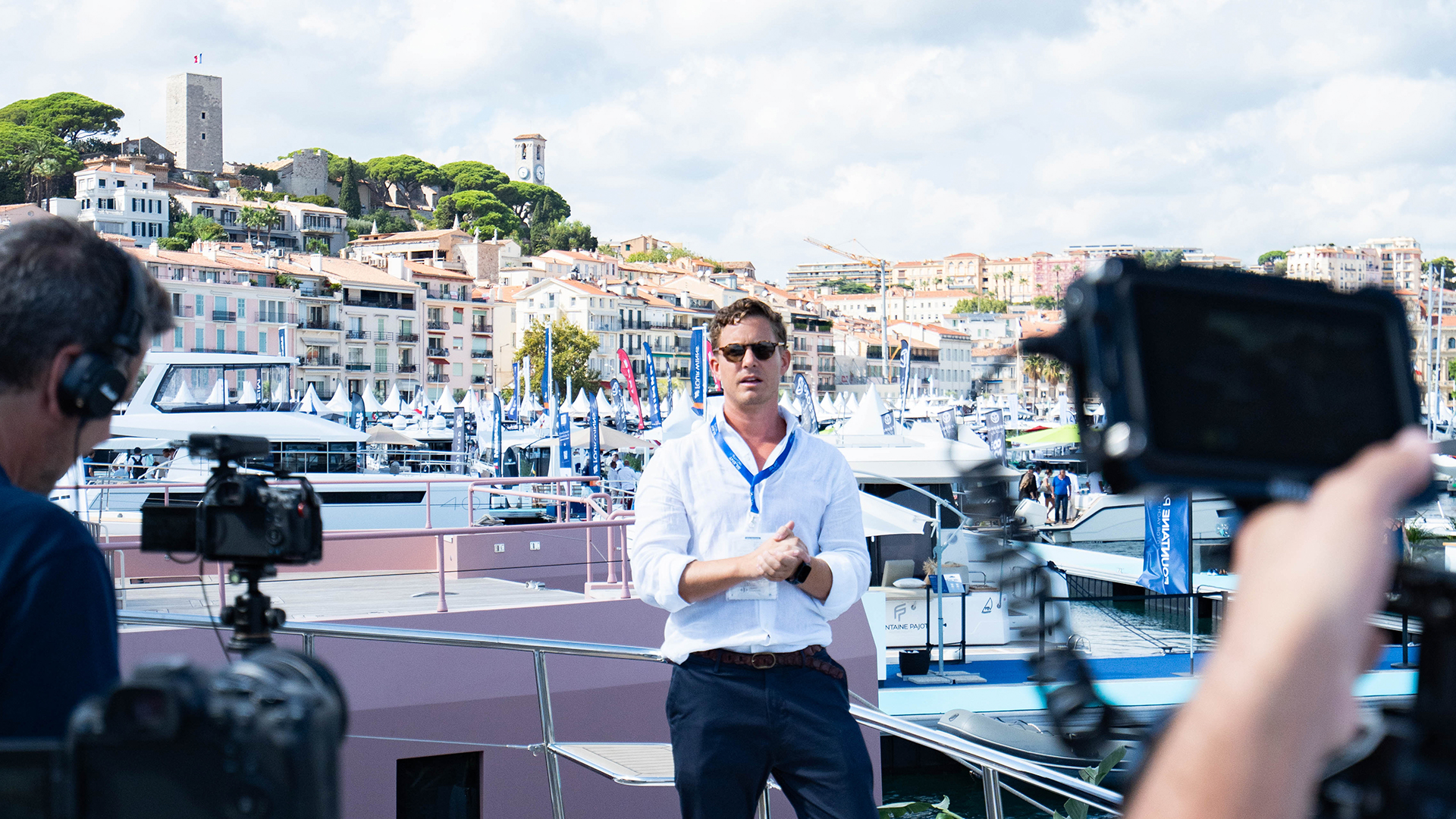
Tech shorts 2023
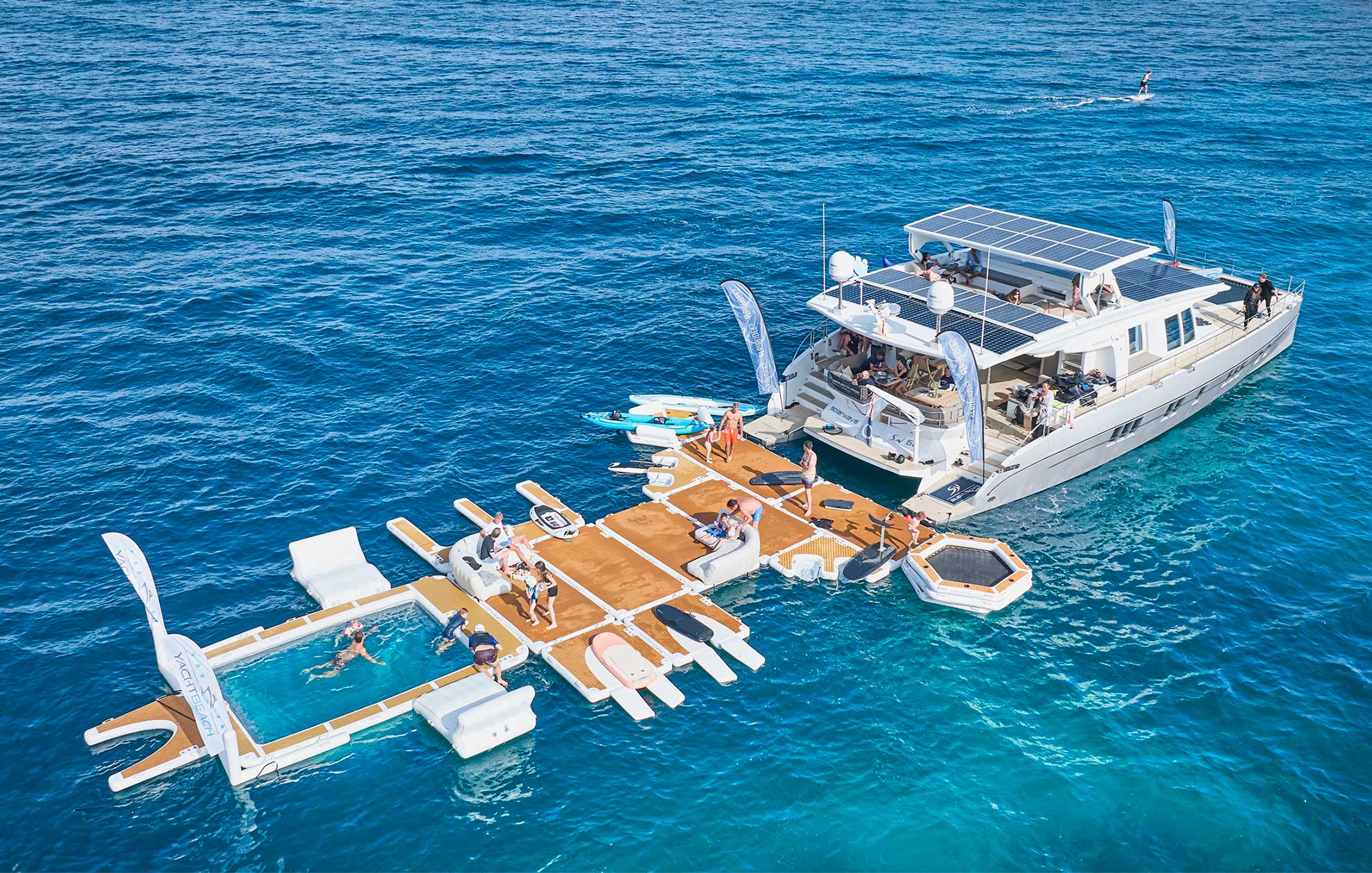
Electric power event on the water
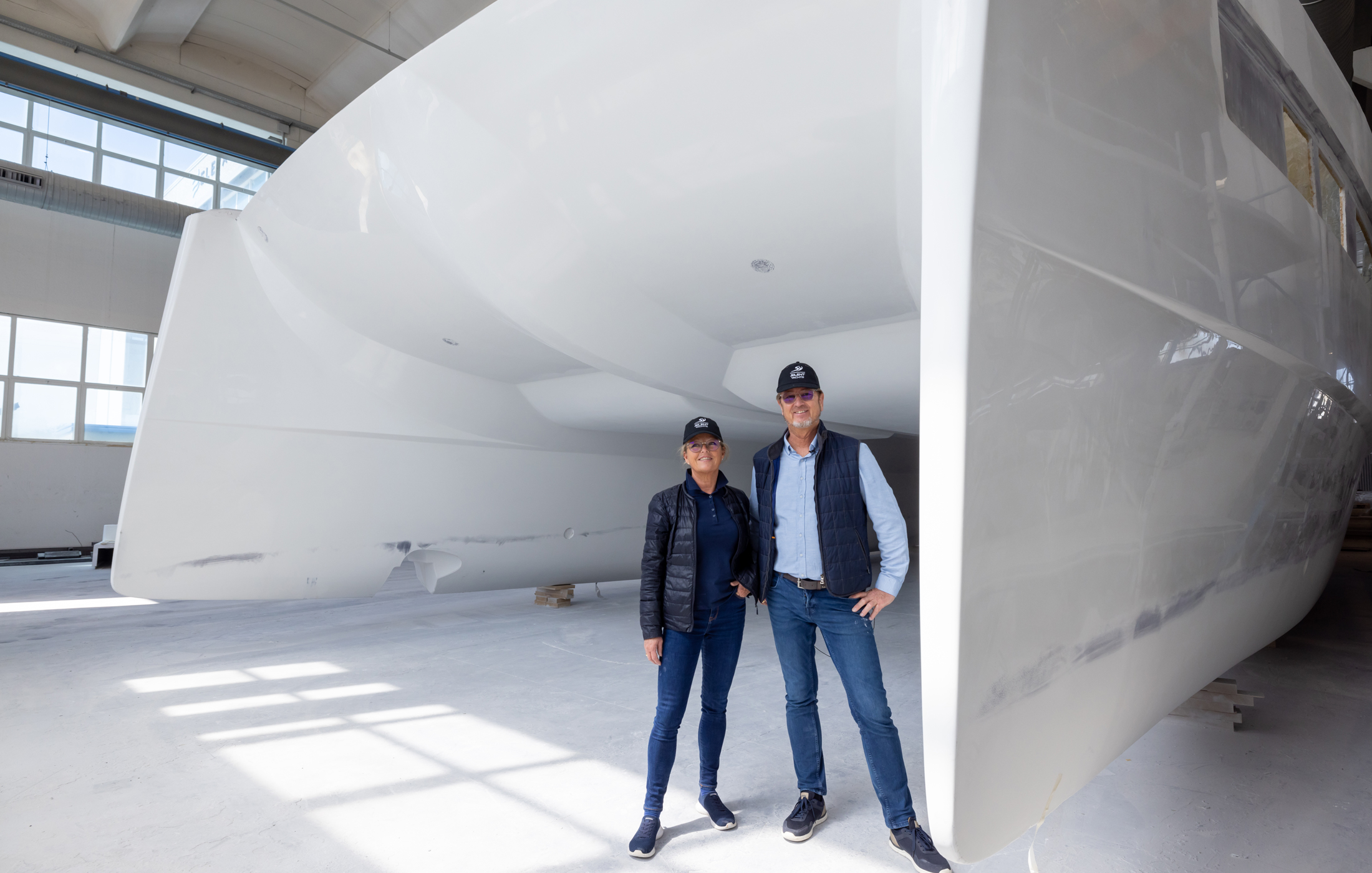
Shipyard tour Italy by Michael & Heike
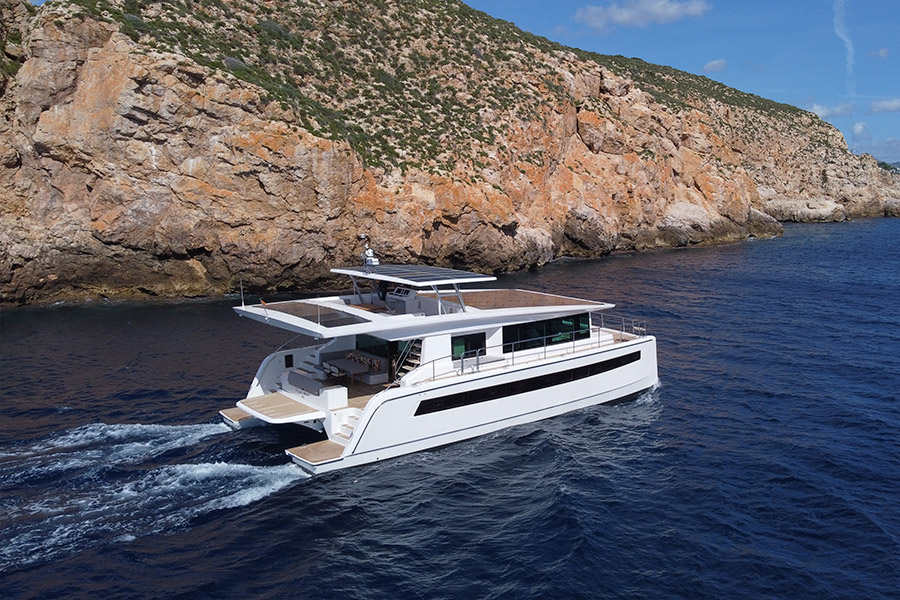
What is the range of a solar electric yacht?
“The Tesla of the seas! An amazing founding couple, a highly innovative product as well as a really cool story behind it. Furthermore, a lot of love and attention has been invested into every single detail – truly impressive!” Frank Thelen / TV Personality, Founder, Angel Investor & Disruption Expert
While the present has brought us the dawn of smart cars, I strongly believe the future will bring us solar powered smart boats – and I definitely want to be at the frontline of that journey. Michael Jost / Former Head of Group Strategy of Volkswagen Group
The idea of sailing while charging your own battery is super powerful to me – solar powered sailing is the perfect love story! Jochen Rudat / Former Tesla Central Europa Director, Advisory Board Silent Group
Elon Musk single handedly forced an entire industry to go electric, as a matter of fact if they don’t all go electric now they will soon die. I would like to see the same thing happening for boating. You are not just selling boats – you are the actual leading edge of a crucial and much overdue revolution to sustainable transport!” Klaus Obermeyer / Emmy Award Winner
I am completely excited about solar catamarans. I knew before they are great but now I truly believe this is the future. After so many boats I’ve seen in over 18 years with Boote Exclusiv, this yacht truly blew my mind. Such a silent and peaceful cruising experience – just the way it should be. Martin Hager / Editor in Chief for Boote Exclusiv - Yachts


- solar electric yachts
- Soel Senses 62
- Soel Senses 82
- Soel Shuttle 14
- Custom model
True ecotourism
no more fuel
The SoelCat 12 is an energy autonomous solar electric boat, designed from the ground up as a fully sustainable excursion vessel to enjoy the sea. The solar catamaran brings true eco-tourism to water-bound operators, communities, resorts, lagoons and nature reserves. With no CO2 or noise emissions involved, we can save the ocean and offer a better experience to our guests! The heart of the concept is silence : being on board without any distractions lets the journey become the destination!

“Being on the solar catamaran gives you a feeling of total relaxation and freedom. The energy autonomous boat is powered by clean energies and we don’t have to worry about harming the environment with dirty exhaust fumes, fossil fuels or complicated maintenance! Our guests love the quietness and the openness of the vessel, which make every sunset cruise a very special moment!”
S. Dekeunynck, French Polynesia
electric from the start
The SoelCat 12 solar electric catamaran is integrally designed for electric propulsion right from the first line drawing to the matched propeller. Every aspect of this vessel contributes towards its highly efficiency for solar electric sailing. The lightweight yet durable fibreglass construction, the large solar roof and the super slender hulls are the major key factors for the solar vessel’s high performance when it comes to speed and range. The electric propulsion system for the SoelCat 12 is superior when it comest to volume and weight.
MOBILE POWER STATION
During downtime, the SoelCat 12 can utilise its large solar array to provide energy for your land based electricity grid. The solar electric catamaran then turns into a mobile power station and is able to feed 8.6kWp into the AC grid or provide power at remote places where no grid is available. The 120kWh lithium battery system supplies all the energy required for save operations during day and night.
SPECIFICATIONS
- Running Time (battery only)
- Running Time (with solar)

“Every detail on the boat is perfect – gorgeous spaces to relax, great spots to view the sunset or the marine life, and even a bar! My favorite moment of all was after sunset, when an incredible manta ray came to say hello, drawn by the underwater lights of the solar catamaran.”
S. Lee, New Zealand
fully customizable
The deck space of the solar electric boat can be customised to your wishes and host a variety of seating arrangements and layouts. Choose classic yacht fittings, luxurious and comfortable. Or practical and economical deck wear and simple bench setup for water taxi services. Furthermore, the electric catamaran can be equipped with a day head in the port side hull. Get in contact with us now to learn more about the different options and to discuss your personal requirements with your Soel Yachts contact partner.

The solar electric catamaran can be equipped with removable roll down screens on every side for flexibility in every situation. Screens for sun shading can be applied on good days, while transparent rain screens protect your guests in bad weather conditions. When the screens are not in use, the comfortable SoelCat 12 lounge layout offers spacious space options in the hulls and underneath the furniture.

SUSTAINABLE SEA TRANSPORT
With both the Okeanos Foundation and Soel Yachts sharing a vision of sustainable sea transport and striving for a healthier planet, we are honoured that our partner, the Okeanos Foundation has funded and supported the development of the SoelCat 12. The first SoelCat 12, named the ‘Okeanos Pearl’ is the first energy autonomous vessel for the ecotourism industry and will pave the way for more sustainable coastal water vessels in many different sectors. The Bora Bora Pearl Beach Resort is proving a pioneering spirit by operating the solar electric Okeanos Pearl. As the first resort, they are offering truly sustainable, noise and emission-free excursions in the pristine lagoon of Bora Bora to their guests.
Demountable
The SoelCat 12 can be delivered as a demountable solar electric boat, which fits into two 40ft high cube containers. Such compact dimensions enable ease transport of the catamaran at affordable rates to destinations all over the world. Neither lamination processes or specialized tools are required for the SoelCat 12’s quick assembly on location. For more details, please feel free to follow the link below and discuss your project requirements with your Soel Yachts partner!
Your project enquiry

- Green Propulsion
- Renewable Energy
- Energy efficiency
- Sustainable materials
- News & Events
- Sunreef News Magazine
- Press About Sunreef

- 60 Sunreef Power
- 70 Sunreef Power
- 80 Sunreef Power
- 100 Sunreef Power
- Sunreef Supreme Power
- Sunreef Ultima Range
- Sunreef 44 Ultima
- Sunreef 55 Ultima
- Sunreef 66 Ultima
- Sunreef 77 Ultima
- Sunreef 88 Ultima
- Sunreef fleet

- Sunreef Zero Cat
- Sunreef 100
- Sunreef Fleet

- Sunreef 43M
- 49M Sunreef Power
- 210 Sunreef Power Trimaran
- Sunreef Explorer
- 40M Sunreef Explorer
- 40M Sunreef Explorer Eco
- 50M Sunreef Explorer
- Superyachts Fleet
Recharge at Sea: Solar Catamarans Harness Sun-Powered Serenity

Just as a residential solar system makes a house independent of an electricity grid, a marine solar panel makes a yacht independent of a fossil fuel powered generator. Catamarans boosted by solar power systems are increasingly in demand in today’s day and age for their increased energy efficiency and reduced environmental impact.
Here is everything you should know about solar catamarans from Sunreef Yachts Eco :
An Introduction to Solar Catamarans
Derived from natural sources, renewable energy is replenished at a far higher rate than consumed. Of these, solar energy is the most abundant renewable energy resource on Earth that may even be harnessed during cloudy weathers. Additionally, because sunlight remains omnipresent, powering a watercraft with solar energy is a fitting concept.
Before we continue exploring the subject of solar catamarans, let us focus on the architecture. The twin hull structure of catamarans translates into a large beam, which provides ample space for solar panels installation. To top it off, catamarans have a fairly shallow draft that produces little to no drag, making them exceptionally energy efficient .
Marine solar panels are currently gaining substantial popularity amongst catamaran designers and manufacturers as a medium of supplying clean energy via a reliable source. Sunreef Yachts Eco is a pioneer in solar catamarans as we believe that the incorporation of a solar power system into yachts births an environmentally friendly yachting solution with a significantly reduced carbon footprint.
The Benefits of Solar Catamarans
The ocean is home to the largest continuous ecosystems; unfortunately, it also remains the most sensitive. Millions of people across the globe indulge in recreational marina and boating activities leaving behind pollution in their wake.
Here are three ways in which solar catamarans rectify commonly occurring hazards for the greater good of the environment:
1. Fuel (oil or gasoline) spills and the discharge of combusted fuels from engines readily contaminates water surrounding the marinas. This aggravates toxicity levels in water, resulting in increased pollutant concentrations in aquatic organisms and sediments.
For illustration, coral reefs, which are a vital source of nitrogen and nutrients for marine food chains and provide shelter for over one million aquatic species, are nearing extinction due to water pollution. Installing solar panels would, without a doubt, decrease the dependency of all types of watercrafts on non-renewable energy sources, i.e., fossil fuels, for operations and increase energy efficiency.
2. Noise from moving gas-powered ships cuts straight to the sea floor and back. These acoustic vibrations transmitting end-to-end affect marine animals to a great extent. Research suggests that human-caused noises result in disrupted behaviours, increased stress, and impaired feeding in marine life, leading to injury and death. Solar catamarans are far quieter than their combustion-driven counterparts; thus, they maintain the oceanic silence vital for the marine life as it enables communication and continuous growth.
3. The elimination of fuels also makes solar yachts more affordable to run and maintain in the long haul. In comparison to fuel powered generators, solar catamarans produce electricity at a lower cost since solar panels obtain power via the sunlight, a renewable source of energy that is present in abundance. But even if your catamaran utilizes both fuel and solar power, you are still to enjoy significant savings on fuel.
Why Power A Boat with Solar Panels
Apart from the obvious environmental factors, solar panels fulfil an important criterion for the oceangoing voyagers who do not wish to be left stranded far from land with a dead battery: unlimited backup power.
On a typical sailing day, there is ample sunlight to ensure the backup battery restores enough power to generate electricity that keeps motors, electrical systems, and onboard appliances running. An added benefit of solar panels is that they continue to generate power even when the catamaran is at a standstill. This energy is stored in batteries for later use.
Furthermore, unlike gas powered generators, solar catamarans do not produce excessive heat, are quieter, and experience little to no vibrations. This allows boat trips to remain pleasant for sailors and vacationers.
Sunreef Yachts combines luxury with sustainability to offer noiseless, vibration-free, and fume-free cruising experiences. Launched under the Sunreef Yachts Eco flag, our sailing and motor yachts are powered using inhouse engineered solar panels that are fully integrated within their composite structure for optimal results. However, an additional asset for sailing solar catamarans remains the ability to combine eco motoring with wind propulsion with the use of high-performance kites.
The Mechanism of the Solar Power System
Classification of solar panels .
There are various kinds of solar panels available for marine boats: adjustable panels, standard panels, and high-energy thin-film panels. While some may argue that having a portable solar panel makes it easier to relocate to where the sun shines the brightest, permanently mounted panels remain ready to go throughout the day.
Despite their long life, standard panels often fail to find a place in the marine industry as they compromise the space availability onboard. Hence, high-energy thin-film panels emerge as winners due to their ability of being permanently embedded on the solar catamaran’s bodywork without restricting living space.
The research and development team at Sunreef Yachts Eco developed the industry’s first composite integrated photovoltaic technology to produce highly efficient, shock resistant, flexible, and ultra-thin solar panels. This in-house engineered solar power system was recognized as a winner of the German Design Award 2022 in the category of Excellent Product Design: Eco Design .
Each solar panel consists of photovoltaic cells, compromising of a positive and negative layer for creating an electrical field. These are made of singly-crystal silicon, a semiconductor that absorbs the radiations of the sun to produce electrical power via the photovoltaic effect. For better understanding: the photovoltaic effect is the process of converting photons (a particle of light) to voltage.
Technical Specifications of Solar Panels
While the average solar panels’ weight lies between 8 to 15 kilograms per square meter, Sunreef Yachts Eco’s solar cells have a thickness below one millimetre and weigh only 1.8 kilograms per square meter. This makes Sunreef Yachts Eco the lightest marine solar power system producer in the solar catamaran market.
Each of the solar cells administered into the Sunreef solar catamarans are ISO 9001:2015 certified and offer a peak performance of ±24 percent, this is 25 to 30 percent more power compared to conventional cells. Despite this, these solar cells do not heat up excessively when receiving sunlight.
Integration Into the Solar Catamarans Structure
The orientation of the sun should be as such as that it hits the solar panels at a 90° angle for best performance. However, with the Earth rotating around its axis to produce a 24-hour day, it is non-viable to ensure the perfect angle throughout the day.
What is more is that the amount of energy produced may also differ depending on external factors, such as a building preventing direct sunlight from hitting the solar panels or light experiencing diffraction from the waterbody before contact. For this reason, it is best to invest in high-efficiency solar cells that generate maximum energy even from limited number of active panels.
Sunreef Yachts Eco makes the most of its solar catamarans’ space availability by spreading its “solar skin” across the hulls, mast, superstructure, bow terrace and bimini roof. Due to this arrangement, the solar panels receive ample sunlight at desired angles from early morning to late afternoon.
At the same time, light rays bouncing off the surface of water to the solar panels, in a process called reflection, also helps generate electricity. These superior performance solar panels possess great strength and durability to survive adverse conditions, year after year.
Generation of Electricity on Solar Catamarans
The crystals in marine solar cells are treated to enable the movement of electrons to generate an electric current. These silicon electrons activate only when in direct contact with sunrays. Instantaneously they start producing direct current (or DC) charges, which is captured by wires and stored in the batteries as energy.
At this point, a charge controller is employed as a regulator for the energy to transfer from the solar panels to the battery. It not only manages the energy load received by the battery, but also prolongs the battery life and performance by ensuring the battery is not overcharged or overloaded. Solar catamarans deploy multiple charge controllers depending on the energy produced.
While the current may be supplied directly to support the electrical demands of the catamaran, if the appliances demand alternating current (or AC), an inverter is added to the cycle to convert the DC to AC first.
Solar Catamarans in Action
But how much energy is enough energy? Working out a catamarans’ energy requirements requires summing up the energy consumed by each device onboard in watt-hours. For better understanding: energy is power accumulated over time, so if power is calculated in watts, energy is watt-hours.
Hence, the first step of installing solar panels dictates an extensive energy assessment of the watercraft. This requires checking the labels of every individual appliance onboard for its typical amp hours and volts used, be it the fridge, fan, or lightbulb. A battery monitor can also help measure energy consumed more accurately.
Depending on the size of the catamaran and the energy consumed, the solar panels size and wattage of power can be precisely determined. Multiple solar panels may be wired together to form a solar array for maximum energy generation. Aiming to fulfil the power needs of your catamaran with solar panels allows you to enjoy a quiet, peaceful anchorage.
Overcoming The Challenges of Solar Catamarans
While yacht solar panels resolve the problem for keeping the batteries topped up without running the generator, solar power systems are faced with challenges of their own. For starters, the harsh weather incurred at sea and saltwater splashing on or immersing the panels accounts for much damage.
However, technological advancements have enabled solar panels to withstand most of these environmental adversities. To illustrate, the installation and electronics linked with solar power systems have now become more resistant to short circuits and corrosion.
Sunreef Yachts Eco employs a unique photovoltaic integration technique in solar catamarans to give the panels extreme resistance to shock and abrasion. Even if the cell eventually cracks, the solid metal foundation remains intact to maintain a high-power output. Furthermore, these solar panels experience no light-induced degradation, no temperature coefficient, and favourable low-light and broad spectral response.
Likewise, the constrains of surface area for marine solar PVs have been addressed with the ability to manufacture customized solar panels. For instance, Sunreef Yachts Eco uses the lightest solar cells in the industry which offer unparalleled flexibility for placement on rounded surfaces of the solar catamaran while others break under pressure. Here solar panels are integrated vertically (on hull sides, flybridge sides, and mast) and horizontally (on front flybridge and bimini) to maximize energy generation.
While the Sunreef Yachts Eco’s solar panel system has a protracted life expectancy, any panels sustaining damage, due to adverse conditions at sea or other geographical circumstances, can easily be replaced. However, it is proven repeatedly that their performance remains unaltered over extended periods of time.
Efficiency of Solar Catamarans Vs. Diesel Yachts
Solar panels make for an ideal energy provider as they ensure the batteries always have power. This makes solar catamarans more self-sustainable and cost efficient to run in comparison to gas-powered ones. Additionally, fewer moving parts in solar catamarans call for significantly lesser maintenance in comparison to diesel yachts.
Boats of all shapes, sizes, and types (sail or motor) can be powered via solar energy to run all onboard appliances on battery. Apart from fulfilling the watercrafts’ day to day electrical usage, utilizing a renewable source of energy extends the durability and reliability of the catamaran.
But most importantly, a solar powered yacht compared to a standard diesel yacht has a significantly reduced carbon footprint. Ideally, with the use of solar power generation on catamarans, you would save 108.5kg of CO2 emissions per day or 39.6 metric tonnes annually.
Why Invest in A Solar Catamaran?
The wind in your hair, the sun on your face, and the sweet smell of the sea are one of the many joys of sailing. However, as an ocean enthusiast, it is crucial to calculate your impact on the environment. On average, the Sunreef Yachts Eco’s solar catamarans account for substantial electricity generation of up to 30 kWh, promoting a positive green footprint.
Today, solar catamarans are trending among yacht owners and shipbuilders as a clean medium to increase energy efficiency and reduce carbon emissions. Additionally, staying true to its legacy of yacht innovation and evolution, Sunreef Yachts Eco continues to work on advancements to its solar panels for improved performance, efficiency, and durability.
Evaluating the Sunreef Yachts Eco Solar Catamarans
Using advanced technology, Sunreef Yachts Eco has engineered ultra-thin, flexible solar panels with the best performance on the market. They are seven times lighter than the average solar power system, enabling them to be fully integrated into the composite structures, including curved surfaces.
The more surface area covered, the more electricity generated. The 80 Sunreef Power incorporates 200 square meters of solar panels (weighing about 360 kilograms) that deliver an astounding 40 kilowatts peak per hour. This setup alone produces solar energy equalling to two generators weighing 800 kilograms altogether.
Hence proven that Sunreef Yachts Eco optimized marine solar panel system outperforms a diesel generator both by weight and performance. Additionally, at reduced speeds, the Sunreef 80 Eco remains fully autonomous, running solely on solar power.
In light of sustainable yachting, Sunreef Yachts Eco has committed to launch over 40 models of its solar catamarans by the end of 2024; this includes a wide selection of sailing yachts, power yachts, and superyachts. Furthermore, Sunreef Yachts has begun commissioning a new range of technologically advanced hybrid ecospeeders, called the Sunreef ULTIMA , that would further extend their solar catamarans line up.
Future Innovations in Solar Catamarans
Despite the distinctive competency of Sunreef Yachts Eco in solar catamarans, the journey of innovation does not come to a halt. To further reduce our carbon footprint, we are undergoing ground-breaking research to redirect excess heat secured from direct sunlight on solar panels to the boilers of our solar catamarans.
Furthermore, Sunreef Yachts Eco is currently developing a concept of an all-new 90 feet sustainable sailing superyacht , called ‘The Zero Cat’ . Apart from sporting a solar power system, this catamaran will use a zero-emission generator to convert methanol to clean hydrogen for unlimited autonomy and greater self-sufficiency.
Frequently Asked Questions
- Why are solar catamarans favorable? Because sunlight remains omnipresent, solar catamarans discern as a greener, cost efficient, and self-sustaining yachting solution . The environmentally friendly passenger conveyance from Sunreef Yachts Eco is consciously built to counter air, water, and sound pollution.
- What is a solar catamaran? A solar catamaran is a twin-hulled vessel powered by solar panels, harnessing sunlight to drive its propulsion and onboard systems, offering an eco-friendly alternative to traditional fossil fuel-powered boats. Powered using inhouse engineered solar panels, solar catamarans designed and manufactured by Sunreef Yachts Eco encourage a positive green footprint at sea.
- Do solar catamarans exist? Launched under the Sunreef Yachts Eco flag, our sailing and motor yachts are powered using inhouse engineered solar panels that are fully integrated within their composite structure for optimal results. The Polish designer and manufacturer has also committed to launch 40 additional models of its solar catamarans in 2024.
- Are there any solar powered yachts? With an increasing demand for solar catamarans with increased energy efficiency and reduced environmental impact, Sunreef Yachts Eco has put to sea several variants of its sailing and power catamarans such as the Sunreef 60 Eco , Sunreef 70 Eco , Sunreef 80 Eco , and 80 Sunreef Power Eco
- What are the advantages of solar catamarans? The installation of solar panels reduces a watercrafts sole dependency on non-renewable energy sources for operations. In comparison to their combustion-driven counterparts, solar catamarans offer noiseless, vibration-free, and fume-free cruising experiences.
- How much is a solar-powered catamaran? With Sunreef Yachts Eco’s philosophy of promoting clean green yachting, the company has released a new range of solar catamarans , the Sunreef ULTIMA , with prices starting as low as €2M* for the 44 ULTIMA ECO . *Please note that all prices listed are subject to change at any time without prior notice.
ULTIMA RANGE
Previous post the revolutionary electric catamarans introduce zero emission cruising, next post dubai international boat show.
Comments are closed.
SUBSCRIBE TO OUR NEWSLETTER
- Sailing Yachts
- Power Yachts
- Superyachts
- Making a Change
- Green Concept
- Energy Efficiency
- Sustainable Materials
- ECO Q&A
Copyright © 2024 Sunreef Yachts . All rights reserved.
- Whistleblowing
- Privacy Policy

Sunreef Venture S.A.
Sunreef Yachts Shipyard
ul. Tarcice 6
80-718 Gdańsk, Poland
+48 58 769 77 77

The Best Solar Powered Catamarans (2023 UPDATE)
As an Amazon Associate, we earn from qualifying purchases. We may also earn commissions if you purchase products from other retailers after clicking on a link from our site.
Catamarans are incredible boats, and making one solar-powered really makes my little engineering brain go wild. In this article, I discuss some of the coolest solar-powered catamarans out there!
Here are three of the best solar-powered catamarans:
- Sunreef’s 80 Sunreef Power Eco Yacht
- Silent Yachts’ Silent 80
- Soel’s Senses 48
There are soo many variables that it’s tough to say one is better than the others. No matter which you board, you’re going to have a luxury experience. The benefit of these solar cats is that the experience can be had while maintaining a sustainable lifestyle and contributing to the betterment of the environment.
The diesel engine is dead, Long live electric power. Sort of…
Table of Contents
Solar Catamarans: Luxury Yachts
Before we look at each of these, let’s take a few paragraphs to talk about catamarans in general. First of all, when many people think of cats, they think of a relatively small craft barrelling across the water, one of its hulls in the air with a swashbuckling daredevil hanging off the side of it high above the water.
That’s not the kind of catamaran we’re talking about here. We are, instead, looking at yachts or cruising catamarans. These share one commonality with the other type of cat, and that’s the twin hulls. But that’s it. Cruising cats are slower, more stately boats. Also, on one of those little, quick ones, there’s not room for much of anything, and you won’t likely be doing any cooking or sleeping on it.
We’re also looking solely at solar-powered catamarans here, and although they have much in common with their diesel-drinking brethren, there are some key differences, which we’ll also address.
Perhaps the main difference (and one of the most significant selling points for a solar-powered catamaran) is the noise level. Gabo
Anyone who’s been on any boat with a combustion engine (diesel or petrol) on board has had to deal with the noise and smell.
But the drone (or roar, depending on the engine’s size and location) can be far from relaxing, which is one of the main reasons to get on a boat, off the mainland, and out to sea. Even if you’re marlin fishing—not the most peaceful undertaking man has ever attempted—you’re still out on the water and hope for some peace and quiet.
Eliminating that engine noise is a pretty big deal.
How Solar Catamarans Work
The biggest key to the success of the solar-powered yacht is not the solar panels – although those are great, as they look terrific and are well integrated into the ships. But the unsung hero here is the battery system.
Solar energy companies continue to perfect their industry. By making their solar batteries denser and denser, they create batteries that can store more solar power for more extended periods in smaller spaces.
And that brings us to an aspect you probably haven’t thought of:
Solar-powered yachts have more interior room because the battery system takes up less space than a conventional engine would.
Space customarily used by an engine room gets freed up for other uses.
Since most solar catamarans are nearly infinitely customizable, it’s hard to say what you might use that extra space for, but it’s available because of the solar power system.
The yachts have solar cells in all sorts of places, most notably on the roofs of the boats, but some companies build them in over large swaths of the hull, so they look as much like a design choice as a power source.
3 Best Solar-Powered Catamarans
Let’s be honest—if you’re dropping more than a couple of million dollars on a boat, two things are likely true: you have a lot of money, and you like nice things. All of the yachts listed here are lovely things, so it’s going to be hard to go wrong.
As a result (and since these aren’t exactly accessible for test drives), it’s difficult to say which one of these is actually the best ; ergo, this list is in no particular order. They’re all glorious specimens.
Incidentally, where the price is listed, that number is an extremely general estimate. As these vessels are all entirely customizable and each choice below is available in different lengths and configurations, the cost can vary wildly.
To better understand what is a good price of a solar-powered cat, they should be compared to performance cruising catamarans or larger catamarans for families .
80 Sunreef Power Eco Yacht
This may be the most remarkable boat you’ll see for a long time. Sunreef has been in the yacht-building business since the turn of the millennium, winning awards along the way, and in the last few years, the company began work on its Eco line.
While there are shorter (and one longer) versions of this ship, the 80-footer (24.38 m) is pretty iconic. It offers electric motors to push it over the water and to do so with little noise, vibrations, and zero smell of fuel or exhaust.
As mentioned earlier, this is the yacht with solar cells pretty much all over it. They dot the sides of the hull and add to the overall look of the ship. With these cells and the panels on the roof, this yacht carries 200 square meters (2152 sq ft) of solar cells generating up to 40kWp (that’s 40 kilowatts peak, meaning under the best conditions, like on a bright, sunny day). Sunreef makes cats that run under sail, as well.
- Unlimited cruising
- No emissions
- Silent running
- Solar panels on the sides of the boat may not appeal to everyone
- Price: $8 million USD and up (new)
Silent Yachts has several versions of each of its catamarans. This eighty-footer (24m) is available in a loft or a classic version, but you get large spaces and incredible luxury no matter what you choose. The bathrooms alone on these things are pretty enough to live in.
Like Sunreef, Silent Yachts offers various lengths of these yachts, but they refer to the 80 as their flagship, and with good reason. Also with good reason, this yacht has been called “the Tesla of the seas.”
Three power options exist, each allowing higher maximum speeds for longer periods on the water than the last, but all three offer cruising speeds of up to 8 knots.
Its rooftop solar panels generate 26kWp of power . While that’s a significant step down from the comparable Sunreef vessel, the company claims unlimited range. Theoretically, it makes sense—solar power is even easier to come by on the open sea than on land, and with an endless supply, you ought to be able to cruise forever (as long as the sun shines).
All that power gets stored in batteries, and when it’s time to use it, the boat does so silently through its electric motors, on which Silent Yachts gives a lifetime warranty. While that warranty wouldn’t give you much peace of mind if you were on the float hoping for rescue, once you got it back home, whatever the problem was would get fixed, and you’d be ready to go out again.
Like any electric motor propulsion system, the Silent 80’s requires almost zero maintenance. Compare that to the ongoing work you do on your big, loud, smelly diesel engine. Not having to change the oil alone seems worth the investment.
- Recommended maintenance schedule happens after the end of most yachts’ lifespans, meaning you may not ever have to do any maintenance at all on this one.
- Kite available for additional propulsion (up to ten times more efficient than a sail)
- Its five-and-a-half-foot draft is pretty deep.
- Smaller kWp capacity than comparable makes.
- Price: $4.6 million and up (new).
Soel Senses 48
This is a smaller yacht (a little more than half the size) than the first two. However, Soel has built a beautiful boat that is entirely sustainably powered. The 12 solar panels on the roof generate 2.7 kWp of electricity stored in two batteries that can be configured to hold up to 142 kWh of stored solar power.
This, like the others, makes for a boat that glides over the water without rattles, without fumes, without noise. Unlike the others, its cruising speed tops out at 10 knots —faster due to its smaller size. Its top speed runs at 18 knots, but with significantly less kWp on board, the ship won’t run at that top speed for extended periods.
The company lists the ship’s range at between 30 and 56 nautical miles (55 – 103 km) , and the fluctuation will come from various options and choices available in operational modes.
- The boat’s 2.3-foot (70.10 cm) draft is shallower than the larger boats here.
- Orders of magnitude more affordable.
- This is a smaller boat and won’t comfortably sleep much more than 10.
- Limited range means this is a weekend cruiser, not a circumnavigator.
- Price: $600,000 and up (new).
Other Choices
These next couple of catamarans are newer and smaller, but they bear mentioning for various reasons, which we’ll be sure to point out with each one. Again, at a certain point, a yacht is a yacht, and if you can fit your friends and family on it for a fun trip, everything else is just gravy.
Smaller than Silent Yacht’s Silent 80, this one is a product not only of Silent Yacht but one made in conjunction with Volkwagen and Cupra, a Spanish car company.
Volkswagen has become a significant player in the electric motor game, so the company brings its Modular Electric Drive (MED) to this vessel, allowing for an even more efficient electric propulsion system than the one on the Silent 80.
Cupra’s presence in the project seems to be solely on the design side of things. The Silent 50 is a vessel built with an eye toward a world in which water travel creates zero greenhouse gas emissions.
Aquanima 40
Azura Marine , based in Singapore, recently announced a solar-powered yacht whose biggest feature may have been its six-figure cost. According to Azura Marine, the ship can cruise indefinitely with a 10 kW solar power system and a 60 kWh battery pack. That is a smaller battery pack than the others, but it’s also a smaller craft.
This cat is a terrific combination of price and features.
Choosing the Best Solar Catamaran for You
This will be a personal choice and one you’ll want to do a lot of research on (which is presumably why you landed on this page in the first place). Since solar-powered catamarans sell for sums of money with at least seven digits in them, this will not be an impulse purchase for very many people.
Any of the choices listed here will be well-built, beautiful, luxurious places to lay your head or sip your mimosas while you’re on the water. It may come down to aesthetics, range, or speed, but all of these models offer incredible specimens that everyone—landlubber or old salt—will treasure.
The luxury yacht world is an exclusive one, but it doesn’t have to be wasteful or ecologically irresponsible. The yachts listed here are some of the best in the world in terms of combining luxury with solar power and providing emissions-free yachting that’s quiet and relaxing.
New yachts can be purchased from the manufacturers, allowing for customization, and various online yacht brokers are willing to help you find a pre-owned craft that’s right for you.
Finding the right yacht for you will depend on your wants and needs, but we can all agree that environmentally sound, sustainable power on these vessels is valuable.
- Electrek: This $500,000 electric yacht can cross oceans on just battery and solar power
- Forbes: Volkswagen Unveils 50-Foot Solar-Powered Catamaran In Partnership With Silent-Yachts
- Kite Boat Systems: Kite controller for sailing boats
- Plugboats: New 48′ solar electric catamaran from Soel Yachts
- Robb Report: Solar-Powered Yachts Are Taking Over. Here’s Why That’s a Good Thing.
- Silent Yachts: Silent 80
- Soel: Soel Senses 48
- Sunreef: 80 Sunreef Power Eco
Owner of CatamaranFreedom.com. A minimalist that has lived in a caravan in Sweden, 35ft Monohull in the Bahamas, and right now in his self-built Van. He just started the next adventure, to circumnavigate the world on a Catamaran!
Leave a Reply Cancel reply
Your email address will not be published. Required fields are marked *
Save my name and email in this browser for the next time I comment.
Recent Posts
Must-Have Boat Gear for Catamaran Sailors!
Sailing is probably the most gear-intensive activity I've ever done; there are so many decisions to be made about what gear to buy now, for tomorrow, and what to definitely never buy. The gear on...
6 Best Trailerable Trimarans For Bluewater and Coastal Sailing
Having a boat costs a lot of money, even when you are not using it, marina fees, etc. And once it is in the water most sailors never go very far from their "home marina" and sailing will be somewhat...


SILENT Yachts
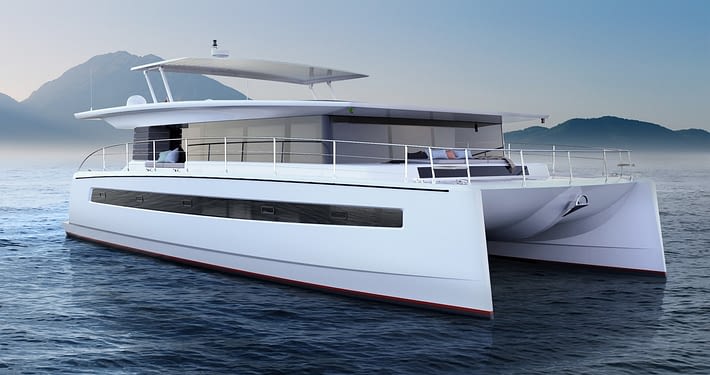
The Iconic Original – Reinvented
The SILENT 60 embodies the next generation of the legendary SILENT 64, the first and only solar powered yacht to cross the Atlantic.
It can easily be driven by two people and offers enough space for families and crew members.
The possibility of storing a 4 m tender, two jet skis, several bicycles and a motorcycle makes it the adventurer of the SILENT family. Ideal to discover the world.
In November of 2021, the SILENT 60 won the “Best of Boats Award” in the category “Best for Travel”. This specific category is defined as “suitable for long distance travels with all amenities to live on board permanently, adapted for both inland waters and the tough conditions at sea”. Generally, she can easily be handled by two people, making the SILENT 60 ideal for families cruising with or without additional crew.

GENERAL INFORMATION
Solar power generation, light displacement.
Trans-Ocean
Certification
Specifications, model versions.
Front Master / Front Exit
Cruising speed
1000 L – 1900 L
900 L – 2100 L
SUNLIGHT Yachts
Office mallorca.
E-Mail-Adresse*
Ihre Nachricht (optional)
Email address*
Your message (optional)
Correo electrónico*
Tu mensaje (opcional)
Deine Fragen (optional)
Anfrage Bootsschule
Welcher Kurs interessiert dich? SBF Normal SBF Speed SBF Frauen SBF 2 Tage Privat SKS SRC
Gewünschter Kursbeginn ab:
Deine Nachricht (optional)

- Search Used Yachts For Sale
- Search Boats By Brand
- Search Boats By Type
- Search By Location
- Search By Price
- What's My Boat Worth?
- Search Boats Just Listed
- Small Yachts
- Custom Sport Fishing Boats
- Finance A Boat
- Amer Yachts
- Aquitalia Yachts
- Cabo Yachts
- Century Boats
- French Yachts
- Gulfstream Yachts
- Hatteras Yachts
- Shelter Island Yachts
- Solaris Yachts
- Sunpower Yachts
- Sunreef Yachts
- Vela Boatworks
- Virtus Yachts
- Why List With United?
- Why Own A Boat Or Yacht?
- Custom Website For Your Yacht
- United Sold Boats
- Buy A Yacht With Crypto
- Find a Yacht Broker Near Me
- Search For Broker By Name
- Meet The United Support Team
- Our History
- Fort Lauderdale Boat Show
- Stuart Boat Show
- Miami Boat Show
- Palm Beach Boat Show
- Other Boat Shows
- Yachting News
- Yacht Closing Services
- River Forest Yachting Centers

Search All Yachts
SUNPOWER VIP 44
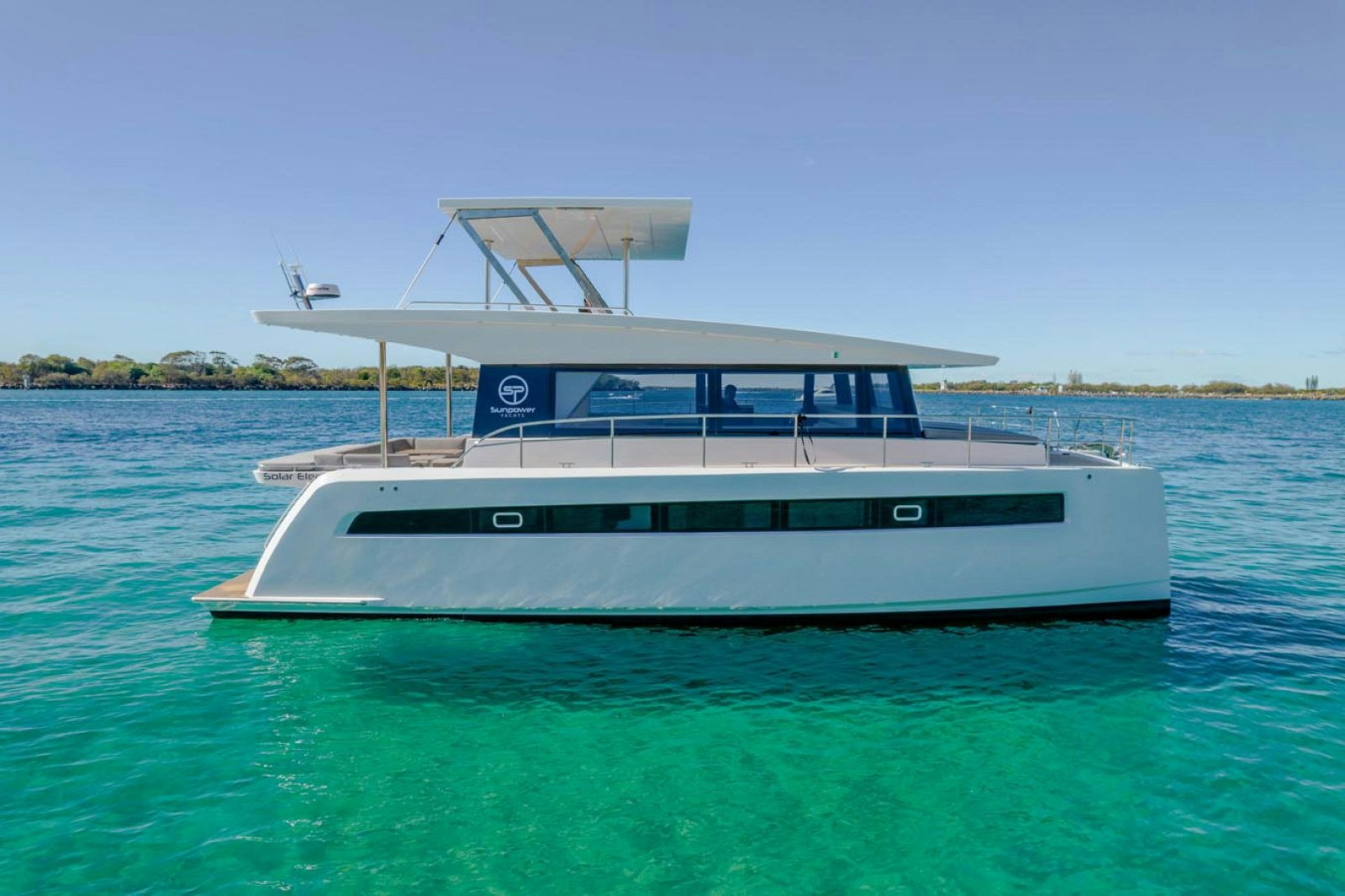
The Sunpower 44 VIP Solar-Powered Catamaran features two 30kW high-efficiency motors that provide sustainable, comfortable cruising. Owners can expect a 6-7 knot cruising speed with top end speeds between 11 and 15 knots.
The Sunpower 44 VIP version features a master stateroom in the front starboard area with a full-length ensuite bathroom and an office. Portside, there are two guest cabins including one with two single bunks and one with a double berth. Both guest cabins share a bathroom. Customized versions of the Sunpower 44 can be created upon request.
Special Features :
o Length overall: 13,40 m (44.0‘) o Beam overall: 7,20 (23.6‘) o Draft: .750 m (2.5‘) o Light displ. (EC): 22,000 Lbs. o Water: 250L – 1 Tank. o Waste-Water: 1 Tank x 250L o Fuel: 250L – 500L o Solar Generator: 9,000 Wp o E-Motors: 2 X 30KW / 2 x 80kW / 2 x 135kW o Generator: 22 kW / 100 kW o Cruising Speed: 6 – 8 kt / 6 – 10 kt o Top Speed: approx. 12 kt / 15 kt o CE Certification: A
For more information on Sunpower Yachts, please contact Wille McCormick at 561-301-8126 or at [email protected] .
SPECIFICATIONS
- Make Sunpower Yachts
- Length Overall 44'
- Max Draft 2' 5
- Displacement 24,250 lbs. (Light)
- Water Capacity 2 x 54.9 Gallon Tanks
Worldwide Yacht Sales
- South Jersey Yacht Sales Cape May NJ
- Boat Sales Massachusetts
- Used Boats For Sale in Alabama
- Bahamas Boat Trader
- Bay Boats For Sale in Corpus Christi Texas
- Used Boats For Sale Stuart Florida
- Sunreef 60 Electric Hybrid Catamaran Price
- Sailboats For Sale Puerto Rico
- Yachts For Sale in Georgia
- Yachts in Jacksonville Florida
- 15M Boat For Sale
- Million Dollar Yachts For Sale
- Yacht For Sale NY
- Owning A Yacht Has Costs
Luxury Boats & Yachts
- Yachts Under 300K
- Used Center Console Boats For Sale
- 60 Foot Yacht For Sale
- 2 Million Yacht
- Prestige Boats For Sale
- Viking Boats For Sale
- Rybovich Boats
- Ocean Boats For Sale
- 60 Ft Yacht For Sale
- Hinckley Boats For Sale
- Bertram For Sale
- Azimut Yachts For Sale Florida
Popular Builders & Models
- Used Tug Boats For Sale
- Motor Yacht
- Catamaran Boat For Sale
- Sea Ray 400 Sundancer For Sale
- Grand Banks Trawlers For Sale
- Sea Ray 45 Sundancer
- Albemarle For Sale
- Offshore Racing Boats For Sale
Trending Brands & Types
- Vanquish VQ32 For Sale
- Bayliss Yachts For Sale
- Leopard Power Catamaran For Sale
- Regal Yachts For Sale
- Krogen Yachts
- Selene Trawlers For Sale
- Palm Beach Motor Yachts
- Contender For Sale
- Used Grady White Boats For Sale
- Sunseeker Sports Cruiser
- Meridian Yachts For Sale
- Used Hatteras Boats For Sale
- Riviera Boats For Sale in USA
- Tartan Sailboats For Sale
Interested In This Yacht?
Contact United Yacht Sales below!

Sunpower Charter 44

Sunpower Sports Sedan 44

Five of the Best Solar Powered Yachts of 2023
- Thursday 10 December, 2020
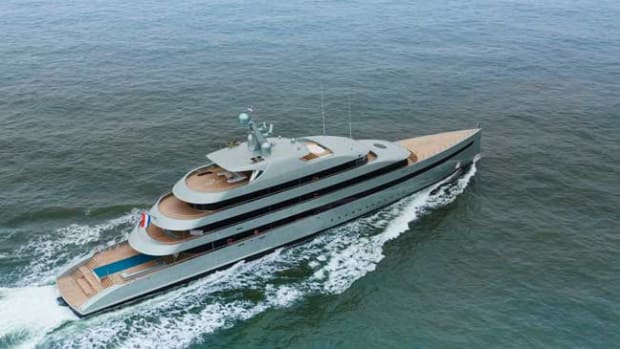
Silent Yachts founder Michael Köhler drew plenty of laughter across the industry back in 2005 when he announced he was moving away from diesel to build solar-powered luxury marine vessels. When his Köhler’s Solarwave 46 was launched five years later, though, those laughs turned to gasps.
Despite the limitations and expense surrounding the technology back then, he had achieved a stylish creation that had all of the mod cons and ran purely on the power of the sun. It should come as no shock then that Silent Yachts leads off our list of the top five solar-powered yachts on the market today.
Solar powered yachts are becoming increasingly popular in Australia, with more and more people looking for eco-friendly and sustainable ways to explore the country’s stunning coastline. These vessels harness the sun’s power to provide a clean and renewable energy source, reducing the need for fossil fuels and helping to protect the environment. With so many options on the market, it can be difficult to know which yacht is the best for you. To help you make an informed decision, here are five of the best solar powered yachts for sale in 2023.
Exploring solar-powered boats for sale
- Silent 80 Tri-Deck catamarans
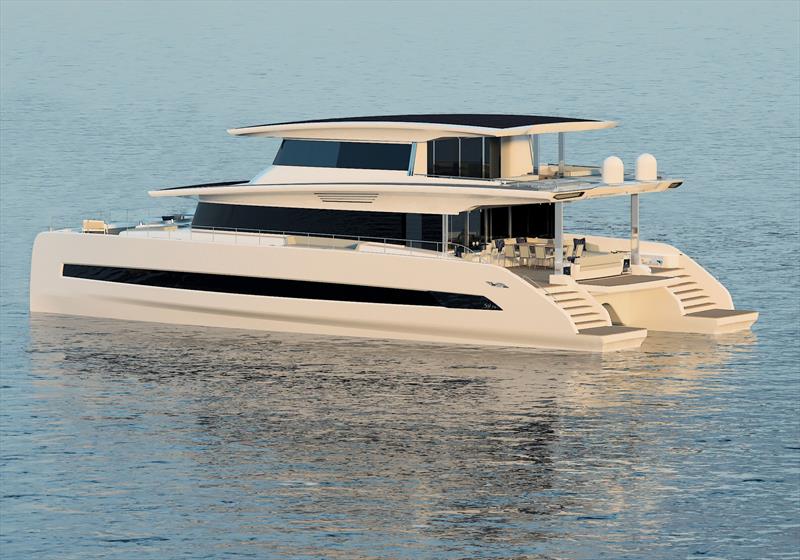
- Silent Yachts Catamaran Silent 55
The solar-powered Catamaran Silent 55 combines eco-friendly propulsion with luxurious accommodations. It is a 55-foot ocean-going catamaran with four staterooms and restrooms that is solar-powered and self-sufficient. The only mechanical components that need maintenance are the generators; there are no engine noises or vibrations.
The most powerful E-Power+ propulsion option, which combines the largest battery bank with the strongest electric motors, is available on this fully equipped vessel. As a result, faster speeds can be maintained for much longer while optimising the amount of energy stored for backup and used when necessary. E-Power+ provides the best solar-powered yachting experience.
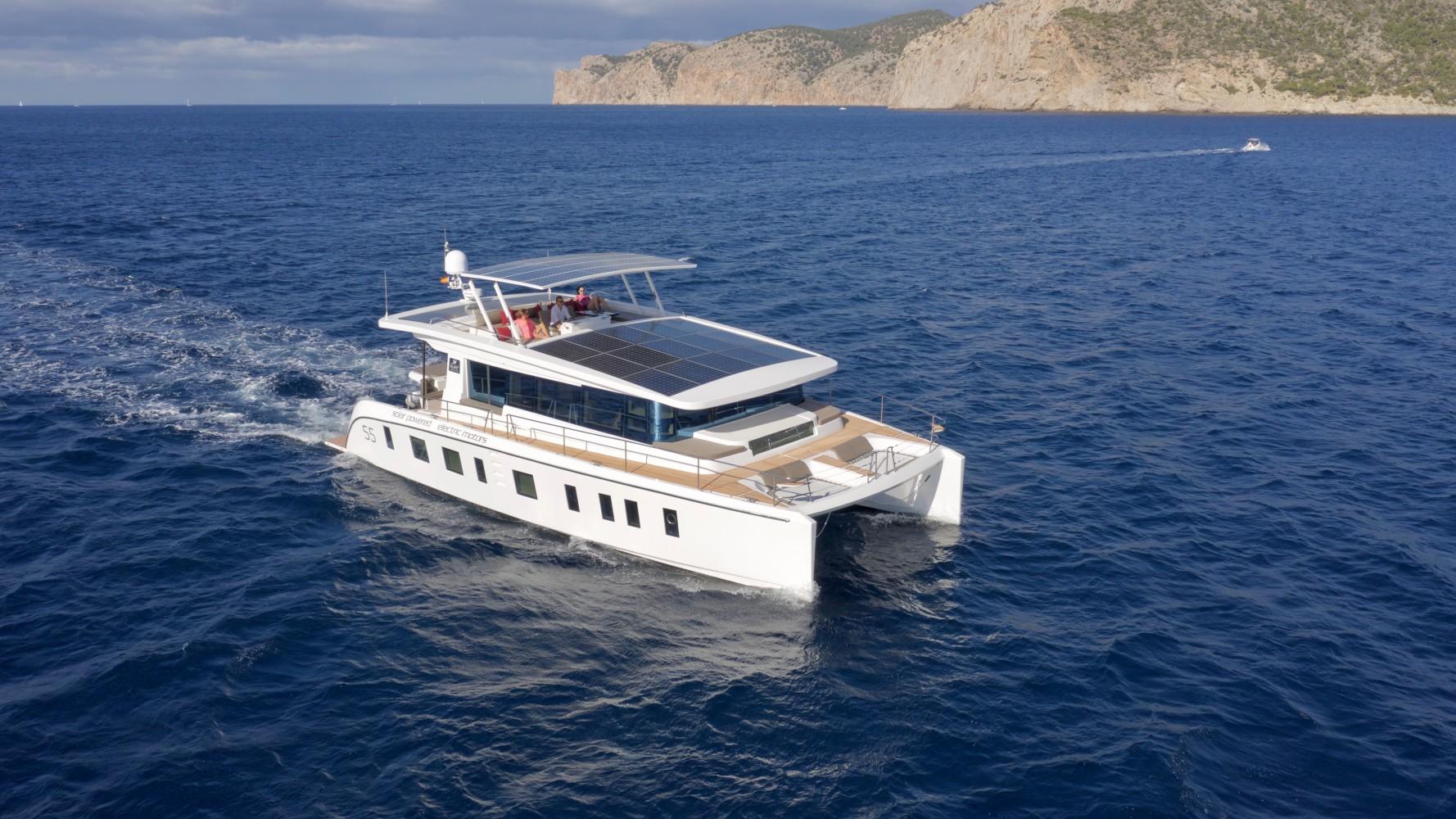
- Serenity Yachts Serenity 64
The Serenity Yachts range is focused on power and can run indefinitely on its array at a cruising speed of between four and six knots while it has top speeds of up to 16 knots. It has electric and hybrid motors that also power all of the amenities and the 64-foot vessel is available in several different layouts.
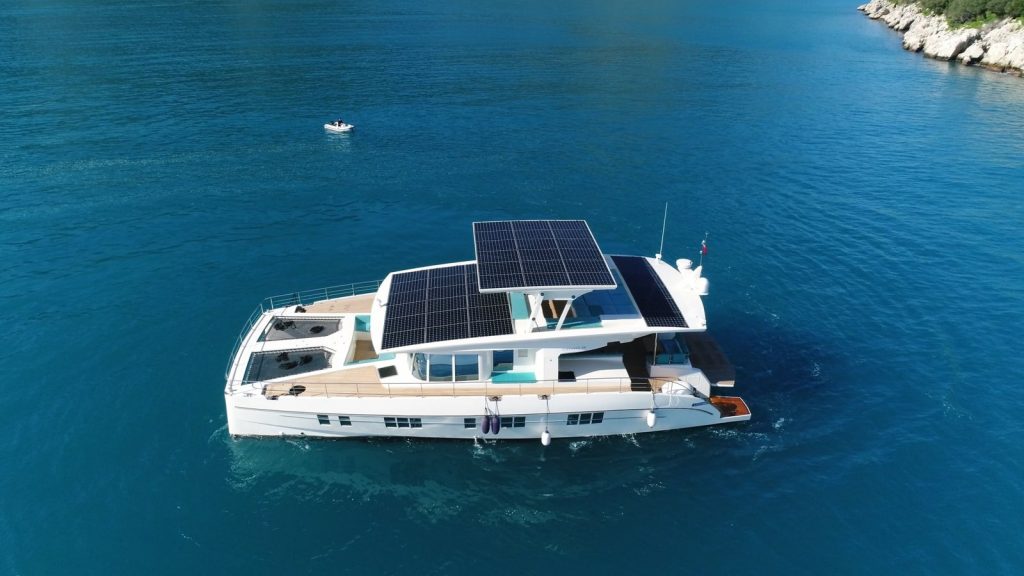
- Serenity Yachts Serenity 74
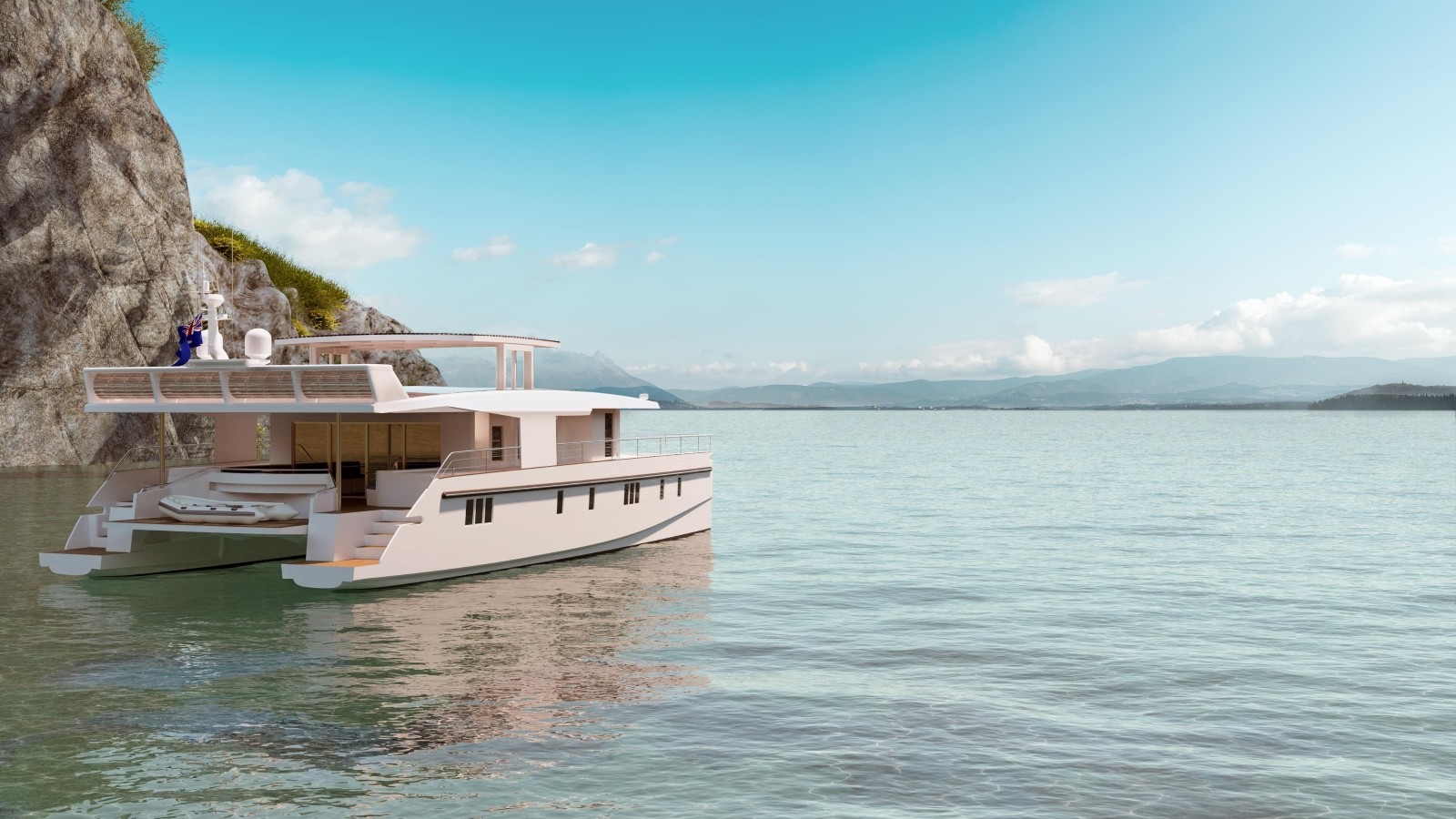
- Soel Senses 48
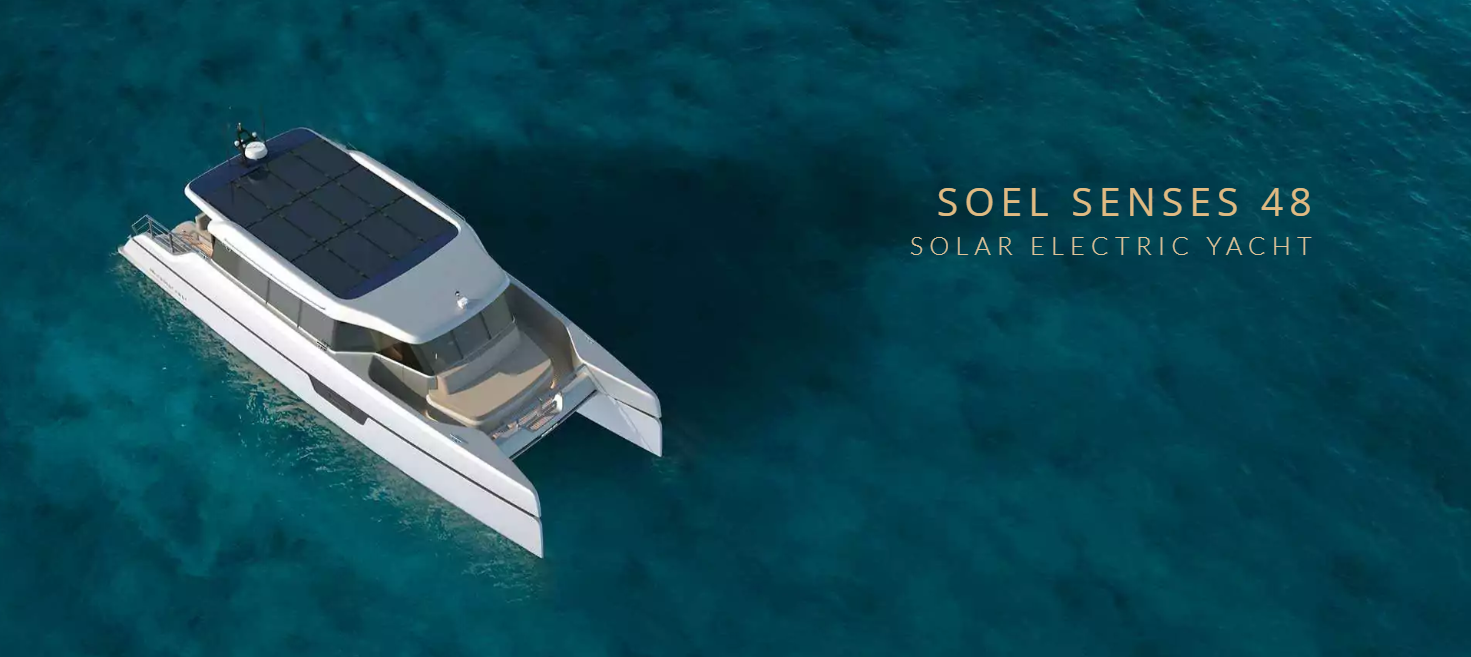
Updated February 2023
Latest Products
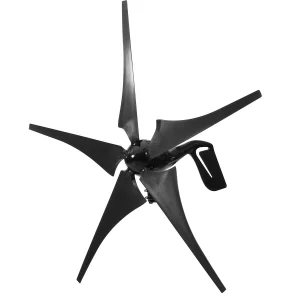
800W Peak 12V/24V 5 Blades Black Wind Turbine Power Generator With Charge Controller – 24V
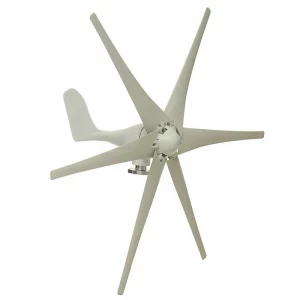
800W Peak 6 Blades 12V/24V/48V Horizontal Wind Turbine Generator Residential Home Wind Power Generator – 48V
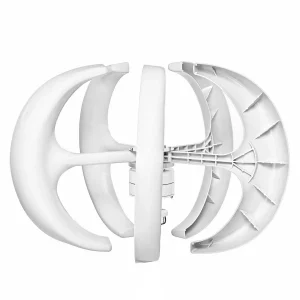
400W 12V/24V 5 Blades Lanterns Wind Turbine Generator Vertical Axis Windmill With Controller – 12V
Related blogs.
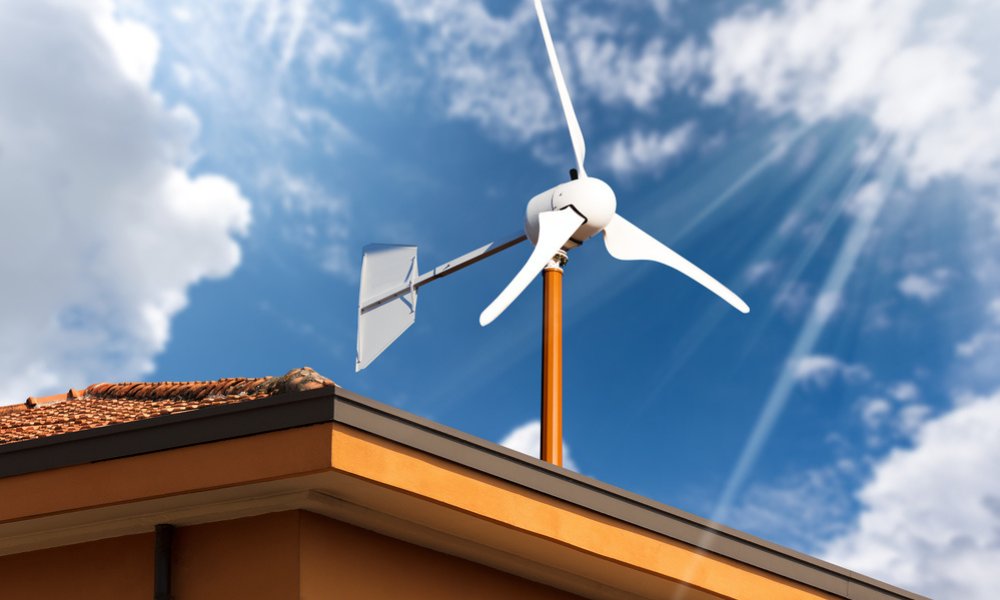
Harnessing the Breeze: Residential Wind Turbines and their Synergy with Solar Panels
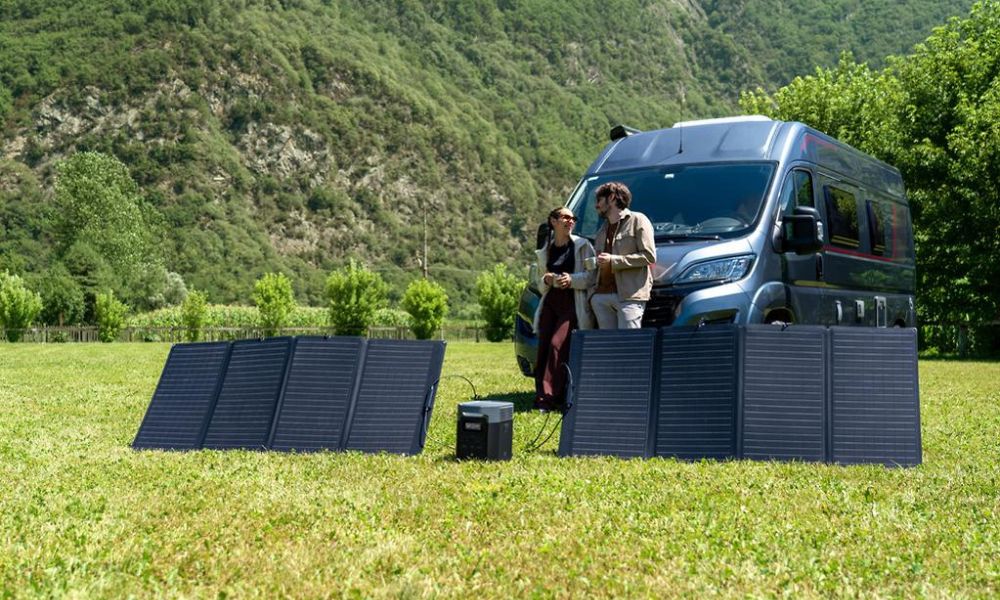
Exploring EcoFlow’s Delta 2 Portable Power Station and 220W Bifacial Solar Panel
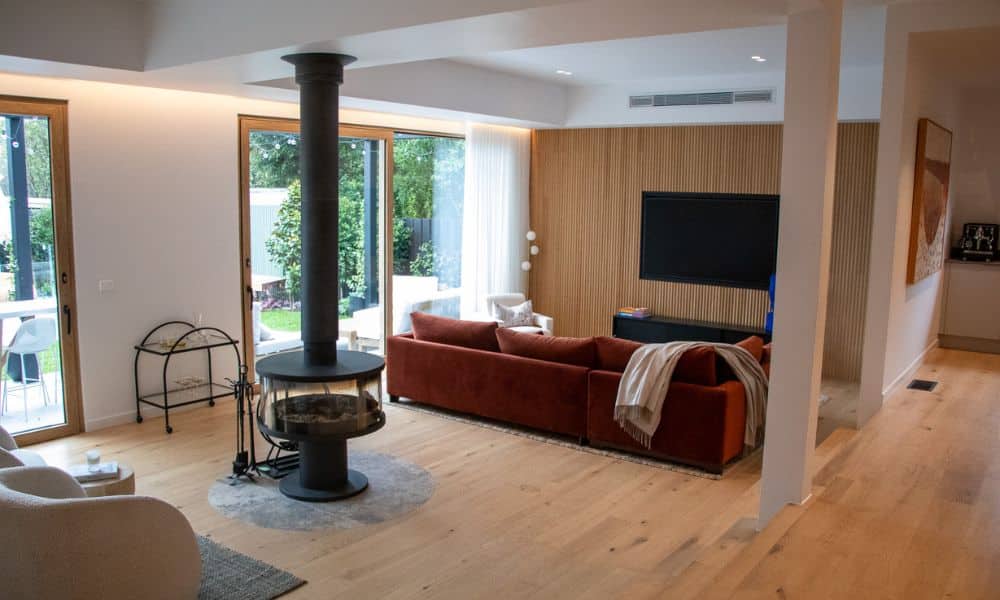
Unveiling the Elegance: House 5 on The Block 2023
Subscribe to energy matters' newsletter.
Stay up to date with the latest renewable energy news and special offers!

©2023 Energy Matters Marketplace
Site Map | Terms & Privacy | Refund Policy
Marketplace
- Retail Store
- Wholesale Store
- Learning Centre
- Monthly Specials
Information
- Free Solar Quotes
- Solar Calculator
- Recommended Products
About Energy Matters
- Why Energy Matters?
- Store Terms & Conditions
Yachting Monthly
- Digital edition

Sailing with solar power: A practical guide
- Duncan Kent
- November 13, 2020
The latest solar technology makes self-sufficient cruising much more achievable. Duncan Kent gives the lowdown on everything you need to get your boat sorted

SOLAR POWER ON BOARD
Solar power is fast becoming the most popular and economic method of keeping the batteries charged on a boat.
Particularly now that the efficiency of photovoltaic (PV) panels, charge controllers and batteries is improving every day.
Furthermore, the latest technology in regulators and charge controllers has brought about a noticeable increase in useable power output, so the problems of shading and non-alignment can be compensated for more easily.
Not only has PV equipment become more efficient and cost-effective, but many of the modern devices we want to use on a boat have become less power hungry.
This means it is now far easier to provide your entire yacht’s electrical needs, both 220Vac and 12/24Vdc, from natural energy resources – particularly solar power, even if you are planning on a fully electric boat .

Thinking carefully about how much power you need and how much your boat can accommodate is key to planning a solar array. Credit: Graham Snook
WHAT DO YOU NEED?
For instance, a boat with two new, good quality, deep-cycle house batteries of 100Ah each would supply 100Ah of energy to consume between charges, if you only use the recommended 50% of available charge between each charge cycle to protect the batteries.
From this you could run:
- a modern 12Vdc fridge (approx. 1.5Ah, or 36Ah over 24hrs),
- all LED lighting (say 20Ah per day),
- various small device chargers (20Ah)
- and a number of other items such as water pumps, TVs and stereos (25Ah/day)
- Totalling around 100Ah.
- For this you’d need 400W of solar capacity.
Of course, if you like to run a lot of AC devices off-grid such as hair dryers, microwaves, toasters and the like, then you’re going to need a DC/ AC inverter, which will take you to another level in power consumption terms.
But even then, with careful planning, solar could provide a large portion of the power you need before resorting to engine charging or a generator.
THE AVAILABLE SPACE
In practical terms, a modern 40ft monohull would have the space for around 1,200W of PV panels (cockpit arch, sprayhood top, deck), maybe 1,500W with the addition of a few portable panels for use at anchor.
The 1,200W of fixed position solar array could produce around 360Ah on a sunny summer’s day (zero shading) or more likely 250Ah on the average UK summer’s day.
So that’s enough for your 100Ah general DC consumption plus another 150Ah of AC consumption via the inverter.
Of course, to do this you’ll most likely need to increase your battery capacity to around 400-500Ah for maximum flexibility (you’ll need to store as much as possible during daylight hours), a typical figure for a 40-50ft offshore cruising yacht these days.

Get your solar charging right and you may never need to hook up to shore power
Typical daily inverter loads for a cruising yacht off grid might be:
- induction cooking plate (20min) 60Ah
- microwave (15min) 30Ah
- coffee maker (20mins) 25Ah
- hair dryer (5min) 15Ah
- laptop charger (2h) 10Ah
- or around 140Ah in total.
The trick is to monitor the batteries’ state of charge (SOC) at all times and vary your use of the inverter to suit.
For example, you might want to cook supper mid-afternoon, when solar is in abundance, and then reheat it in the evening when you want to eat it.
In some cases, when you’re cruising in warm climates such as the Med, you might end up with excess charge from your solar panels .
In this situation, many long-term cruisers devise a method of ‘dumping’ the extra energy by heating water for showers.
Do bear in mind if you’re planning to live aboard full time , then it’ll be a whole different story on cloudy days and during the winter, when inverter use might need to be knocked on the head entirely.
Continues below…

Eco friendly sailing: Best practice for green yachting
How easy is it to go eco friendly sailing? We look at the steps cruisers can take to minimise their…

How and where to go wild cruising in the UK
Planning to spend the night away from crowded waters can be truly rewarding but preparation is essential before you go…

Solar-powered boat crosses Atlantic
Then heads to UN climate conference
POWER DISCREPANCIES
There’s often confusion as to how much power you can harvest from a solar installation.
A PV panel is nearly always advertised stating its theoretical peak output power (Pw).
But in reality, on a yacht where there are limited areas in which to mount them, they will more likely produce a maximum of 60% of their peak output if mounted horizontally, increasing to 80% if tilted towards the sun and regularly adjusted.
The latter is rarely achievable on a boat, however, as even at anchor it can swing through an arc of 180° in wind or tidal shifts .

Flexible panels can be mounted on sprayhoods or awnings to add power when it’s needed at anchor or in harbour
INSTALLATION
Having trawled through hundreds of ‘deals’ to get the best price on the most efficient panels you can afford you now need to know how to install them to best fulfill your energy generation needs.
The output, even from the highest quality photo-voltaic array, will only be as good as the installation itself.
So following our guidelines should ensure you extract every last drop of energy from your investment.
PANEL MOUNTING
Sailing boats are not the ideal structure on which to mount wide, flat PV panels.
So before you go ahead and purchase what looks like the biggest and best, take a few minutes to decide on exactly where you can mount them, as this will affect what size and type of panels you should buy.
In many cases the first choice would be on an arch, davits or gantry aft, especially if you already have, or plan to fit one.

Dinghy davits, particularly on multihulls, can support a huge solar capacity
These allow a solid metal framework to be constructed that will be strong enough to take the heavier, more productive rigid PV panels.
You can also build in some form of adjuster to the framework that will allow the panels to be orientated towards the sun for the best performance.
With luck (or careful planning) a gantry will also keep them aft of the boom, thereby eliminating loss of output caused by boom shading.
The next most popular position for mounting the panels is on a cockpit sprayhood or bimini, although this will often mean using the flexible or semi-flexible panels, which are generally less efficient than the rigid ones for the same area.
ELEVATED MOUNTING
Alternatively, there are kits available for mounting panels onto lifelines, which can allow their elevation to be manually adjusted to a certain degree.

Pole-mounted panels can be used for maximum adjustability
Finally, panels can be fitted directly onto the deck by either gluing them down using mastic or attaching them onto a rigid support frame.
Once again you will probably need to use semi-flexible panels – especially if the deck surface is curved.
Rigid, glass-coated panels will obviously not be suitable for deck mounting in an area that is frequently walked over.
Don’t be tempted to drill through the panels, even along the edges, as this will invalidate the warranty and possibly damage the panel.

With solid panels, the ability to adjust the angle can add significantly to output
It might seem obvious, but the key to an efficient system is to avoid shading wherever possible.
It’s no good fitting expensive, high-efficiency PVs right under the boom as they’ll perform little better than the cheaper types.
Saying that, in good quality panels each cell will be isolated from the next by a series of diodes (one-way electrical valves), so that if one cell is shaded at least it won’t drag down the other cells within the same panel.
Older panels often didn’t have these, so the slightest partial shading caused the output of the entire panel to cease.
OVERHEATING
Another important factor that is often ignored when installing the panels is that of overheating.
If a PV panel gets too hot, which is quite likely if mounted directly onto a flat surface without an air gap behind, its output will drop quite noticeably.
To allow for some air circulation behind the panels it’s best to apply mastic adhesive in numerous large dabs.
This is best achieved by placing wooden spacer strips between the dabs until the mastic has completely cured, after which the spacers can be removed.
You might need some form of trim around one or more of the outside edges, though, if they are positioned where sheets and other lines might get caught under them.
Raising the panels up will also help water to drain off and thereby helping to avoid possible delamination from sitting in water for too long.
CHARGE CONTROL
A PV module cannot supply an electrical device directly due to the changeability of the sunlight, which in turns varies the current it can produce.
Therefore, it has to be connected to a battery, which stores and smooths its output.
Whatever the size of your solar array you will need to fit a regulator, or charge controller as they are now more commonly known, to the system in order to control the output and to help extract as much power from the panels as possible.
There are two types of PV charge controller.
The older designs, called Pulse Width Modulation (PWM) types, were fairly basic voltage regulators and simply output volts at just above battery level.
The latest controllers use Multi Power Point Tracking (MPPT) technology and can accept much higher input voltages (up to 240Vdc).
MPPT controllers can be up to 30% more efficient as they use the peak output of the panels to charge the batteries, even compensating for partial shading.
BEWARE FAKE GEAR
If you buy online do be careful to ensure you’re getting what you pay for.
There are a huge number of fake MPPTs out there, which are simply the much cheaper PWM dressed up with fake labels.
It’s hard to tell which is which, but the old adage of ‘if it looks too good to be true, it usually is’ makes good sense.
MPPT controllers are usually bigger and heavier than PWMs, but if in doubt call or email the supplier to discuss the pros and cons of their kit before buying.
If they’re not happy to chat and advise you then I would steer clear of their gear.
Some good MPPTs are made in China, but unless they have a UK supplier, I wouldn’t bother with them as you’ll have no follow-up advice.
To calculate what size controller you need simply divide the panel’s peak power in Watts (Wp) by the battery voltage, which will give you the maximum current (Amps) they could theoretically supply.
For example 240W/12V = 20A. Although it’s unlikely you’ll ever get near the peak output from any PV panel, it’s best to go for the maximum possible.

Induction cooking is now a reality on board, even without shore power
PV panels come with a short length of cable, usually around 1m long.
Some are supplied with MC4 connectors already attached but most only provide bare wires.
The latter can be easily extended using proper waterproof connections but thought must be given as to the current rating and voltage drop (usually max 3%) for the size of cable you intend to use.
If in doubt, bigger is better!
Panels can sometimes be ordered with the wiring on the back so that the cable can go straight below deck through a hole under the panel.

You may need to fit extra battery capacity if you want to run an inverter from solar charging
SERIES OR PARALLEL?
A commonly asked question is ‘should I wire my PV panels in series or in parallel?’
The simple answer is, if there’s any danger of frequent shading to one or more of the panels then install them in parallel.
If wired in series the shading of a single panel will drag down the output from all of the others in the same series.
PARALLEL IS PREFERRED
Most commonly, multiple panels are wired together in parallel to a single charge controller, with diodes protecting each panel from discharging the others should one become partially shaded.
With the advent of MPPT controllers, however, there can sometimes be a benefit to wiring two or more identical panels into a series bank, thereby presenting a higher voltage to the controller.
It’s worth noting that, like batteries, wiring PV panels in series increases the voltage only – the current capacity of the array remains the same as for a single panel.
‘Where’s the benefit of wiring them in series then?’ you might ask.
Well, the higher the voltage fed into the MPPT, the more consistent it will be with its output, which could, in some cases, prove more efficient than a parallel installation with PWM controllers.
It’s also likely to be necessary if you have a 24V domestic system.
SERIES WIRING
Series wiring is usually only done when the cable runs are long, as it helps negate the voltage drop caused by the resistance of the cable.
While a decent controller will have no problem handling the output from four or even five panels wired in series, it is often inappropriate for sailing yachts as shading just one of the panels will reduce the output of the entire series array.
If you need to do so in order to reduce cable runs then it’s best to split the panels between each side of the boat – a series bank on each side.
If you do this, then you would ideally fit a separate controller to each series PV bank and then connect their outputs together in parallel to the battery bank.
Note, however, that panels wired in series must all be the same types with an equal number of cells per panel.
Furthermore, the charge controller needs to be sized for the total of all panel voltages added together and the current rating of one individual panel.
Differently rated panels can be connected together in parallel but only if each panel has its own controller.
The outputs of the individual controllers can then be joined together to go to the battery bank.
BATTERY BANK QUESTION
Another frequently asked question is ‘Can I connect another charging source to the battery bank while the solar array is charging?’
The answer is yes.
Any decent PV controller will be protected against feedback from other charging sources.

Think carefully about where shade from mast, boom and rigging will fall. Credit: Graham Snook Photography
CABLE SIZE AND CONNECTORS
A frequent cause of reduced output from PV arrays is wiring that is too small.
The resistance of a wire conductor increases in direct proportion to its cross-sectional area, so go as big as is practicable for the least cable loss.
Each panel should be supplied with the correctly sized cables for its own maximum output.
But if you’re combining panels, either in parallel or in series, you will clearly need to rate the single feed cable to suit the maximum current available at theoretical peak solar output and to minimise voltage drop.
Likewise, the cable from the controller to the batteries should be sized to suit the controller’s maximum output current and protected with a fuse.
For outside it’s important to use exterior grade cable, which is double- insulated and UV-proof.
WEATHERPROOF CONNECTORS
And wherever possible use compatible weatherproof connectors (usually MC4) to those found on the panels rather than cutting off the plugs and hard-wiring them.
Field- assembly MC4 plugs are available, so you don’t have to drill large holes in the decks or bulkheads when feeding the cables through.
When joining more than one panel together try to use the approved multiway connectors; not only do they keep the wiring neat and tidy, but they also offer a greater contact area than budget terminal blocks.
If you have to use screw-type connectors make sure to fit proper ferrules to the wire first to avoid any stray wires in the multistrand shorting across the terminals.
When feeding a cable from above to below deck, try to go through an upright bulkhead where possible to minimise ‘pooling’ of water around the access hole.
Also, use a proper watertight deck seal that matches the cable you’re using.
If drilling through a cored deck you need to drill a larger hole first, fill it with epoxy resin and then drill the required size hole through the epoxy to ensure no water gets into the deck core.
Ideally, the charge controller should be mounted no further than 2m from the battery bank.
If you need to go further, you’ll require larger cabling to reduce the voltage drop.

A generous solar array will keep you self- sufficient indefinitely. Credit: Graham Snook Photography
CONTROLLER LOAD TERMINALS
There is often confusion over the ‘load’ output of a charge controller (often depicted by a light bulb) and what can safely be connected to these terminals.
Rarely explained in the manual, the load terminals should be pretty much ignored in a marine installation as the output on these terminals is usually very limited (10A max).
Some attach an LED light to them to indicate the controller is operating, but all your usual electrical loads should remain connected to the batteries with the battery terminals on the controller connected directly to that battery bank via a fuse.
It is possible, though, to control a high-current switching relay in certain conditions.

Parallel installation is more resilient to shading, but a series installation will increase peak charging outputs. A combination of the two offers some of the benefit of both
CIRCUIT MONITORING
Unlike most cheap PWMs, the majority of good quality MPPT charge controllers come with an alphanumeric LCD screen to let you know what is going on.
This can either be a remote display or simply one on the front of the box.
It’s obviously a lot better to have a proper numerical display than to rely on a few flashing LEDs to tell you when something’s not right.
So if your chosen controller doesn’t have one be sure to fit a battery monitor (the shunt type) into your solar circuit between the controller and the batteries.
It doesn’t have to be a very ‘smart’ monitor, just one that can display the voltage and current being supplied by the panels.
For smartphone addicts there are several wifi apps that will do the job remotely on your phone or tablet.
DEVICE PROTECTION
All good quality PV panels feature built-in diode protection between each cell to prevent a shaded cell from dragging down the productive ones.
In addition, there will be internal blocking diodes on the final output to protect the panel from polarity reversal and to ensure that the batteries can’t discharge back into the panel during the night.
The latter can be added externally, the former can’t, so check before you buy.
A fuse, rated just above the maximum current available, should be fitted between each panel and the charge controller.
Another fuse should then be installed between the charge controller’s output and the batteries.
In the case of multiple arrays, this second fuse will be rated higher than the individual panel fuses and should match the maximum current rating of the cable.
With this protection installed other charging devices can be connected in parallel at the battery, meaning the solar can be left connected even when you are hooked up to shore power and the battery charger is operating.
In some circumstances, however, this arrangement can affect the sensing of the battery by the charger, causing it to fall back into float mode.
If this becomes apparent it can be overcome by installing a manual/auto switch to disconnect the solar array when on shore power.

Check the flex of the solar panel is sufficient for your deck
EXCESS POWER DUMPING
A solar charge controller works by disconnecting the supply from the PV panels when the batteries are fully charged.
But for some full-time liveaboards in sunny climates that can be considered a waste, when the excess power could be put to good use – heating water, say.
This is commonly done using an inverter to supply AC power to the heating element.
Alternatively, you can now buy a 12Vdc element for your calorifier (hot water tank) and supply this directly from your battery bank.
Both of these methods would require a voltage sensitive relay (VSR) to disconnect the element should the battery voltage drop below a pre-set level.
Don’t expect boiling hot water, as there will probably only be enough spare power to take the chill off it before your battery bank reaches its lower threshold voltage.
A 600W/12V element will draw some 50A, from the batteries, whereas a 1kW AC element run through an inverter will need close to 100A.

A small, semi-flexible panel will be sufficient for keeping batteries trickle charged, but not for heavy use
RIGID, FLEXIBLE, OR SEMI FLEXIBLE?
Despite massive recent improvements in semi-flexible panels in recent years, the solid glass panels still offer a higher power density.
That said, they are heavier, more awkward to mount and can’t be walked on, so unless you have a dedicated gantry aft, you’re better off choosing the more rugged semi-flexibles.
Modules incorporating monocrystalline cells also have a better output than those with polycrystalline cells (that’s cells made from a single slice of silicon as opposed to layers of smaller pieces).
Output voltage also depends on the number of cells on the panel.
In the past this has commonly been 32, but now some 36 and even 40 cell panels are available.
That said, they’re larger, of course, so an array of interconnected smaller panels might be a better solution.
Module efficiency is now more often around the 20% mark, as opposed to 12-15% for older models and semi- flexible (up to 20° bend) are usually better than flexible (up to 180° bend).

A rigid panel is more efficient, but less robust
There are a huge number of panels on the market, but many use the same cells.
Sunpower Maxeon cells are exceptionally good, as are the Panasonic HIT range and LG, but they are pricey.
If the maker is offering a 25-year guarantee instead of a 3-5 year one, you can be pretty confident they’re good.
When it comes to charge controllers it’s definitely worth paying a little more for a decent MPPT.
A cheap PWM might be okay just to keep a small starter battery charged with a 30W panel, but the MPPT will give you much more when it comes to heavy service.
Victron are probably top of the range, while cheaper brands like MakeSkyBlue and EPever are also good value – but treat imports of unclear origin with care.
ABOUT THE AUTHOR

Duncan Kent has been evaluating and reviewing yachts and marine equipment for the past 30 years
Enjoyed reading this?
A subscription to Yachting Monthly magazine costs around 40% less than the cover price .
Print and digital editions are available through Magazines Direct – where you can also find the latest deals .
YM is packed with information to help you get the most from your time on the water.
- Take your seamanship to the next level with tips, advice and skills from our experts
- Impartial in-depth reviews of the latest yachts and equipment
- Cruising guides to help you reach those dream destinations
Follow us on Facebook , Twitter and Instagram.

Service Locator
- Angler Endorsement
- Boat Towing Coverage
- Mechanical Breakdown
- Insurance Requirements in Mexico
- Agreed Hull Value
- Actual Cash Value
- Liability Only
- Insurance Payment Options
- Claims Information
- Towing Service Agreement
- Membership Plans
- Boat Show Tickets
- BoatUS Boats For Sale
- Membership Payment Options
- Consumer Affairs
- Boat Documentation Requirements
- Installation Instructions
- Shipping & Handling Information
- Contact Boat Lettering
- End User Agreement
- Frequently Asked Questions
- Vessel Documentation
- BoatUS Foundation
- Government Affairs
- Powercruisers
- Buying & Selling Advice
- Maintenance
- Tow Vehicles
- Make & Create
- Makeovers & Refitting
- Accessories
- Electronics
- Skills, Tips, Tools
- Spring Preparation
- Winterization
- Boaters’ Rights
- Environment & Clean Water
- Boat Safety
- Navigational Hazards
- Personal Safety
- Batteries & Onboard Power
- Motors, Engines, Propulsion
- Best Day on the Water
- Books & Movies
- Communication & Etiquette
- Contests & Sweepstakes
- Colleges & Tech Schools
- Food, Drink, Entertainment
- New To Boating
- Travel & Destinations
- Watersports
- Anchors & Anchoring
- Boat Handling
- ← Technology
What You Need To Know About Boat Solar Panels
Advertisement
Sunshine and boats are a natural together, so why not use all that free energy? Here’s the lowdown on solar panel selection and installation
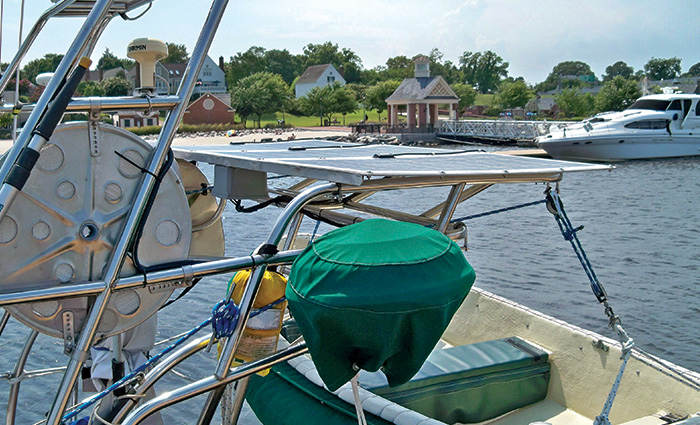
I first embraced the idea of solar power while up a pole (literally) in the Atlantic Intracoastal Waterway replacing dead batteries. It was the early 1980s, and I was maintaining buoys, beacons, and other such Aids To Navigation (ATON) for the U.S. Coast Guard, replacing massive, nonrechargeable batteries with rechargeable solar-powered ones. The higher-ups said the solar rechargeables would last six years – twice as long as the one-shot batteries. As the deck-ape in charge of lugging all those batteries up and down the ladders, my back and I immediately appreciated the whole “free power from the sun” thing, a concept I continue to embrace.
The strategy behind s olar energy onboard is simple: A solar panel converts sunlight into electricity, after which wiring conducts it to your batteries for storage until needed. Solar panels are used to keep batteries or banks charged rather than to power equipment directly. This arrangement allows the panels to store generated power whenever produced, while providing a steady source of power to a piece of equipment even when the panel is producing no power.
While they do require an initial outlay, solar panels can easily pay for themselves in money saved and independence gained over their service life. They’re noiseless, have no moving parts, and they provide free electricity for years with minimal maintenance. Solar panels also have the benefit of being modular, letting you start small and add more as your power requirements increase.
The benefits of solar
Almost any boat can benefit from solar power. Whether at a slip, mooring, or on a trailer, boats can keep their batteries topped off without the need for external power. You can also use solar power to supplement or even replace other onboard charging sources, reducing or eliminating the need to run engines or generators to keep batteries topped off (a wasteful practice that burns fuel while wearing down the costliest pieces of equipment onboard).
While underway, it’s a plus to be able to recharge a dead battery in an emergency – say, to operate a VHF radio or navigation gear. While dockside, solar panels keep batteries charged and vital systems (such as bilge pumps) up and running without the need for shore power.
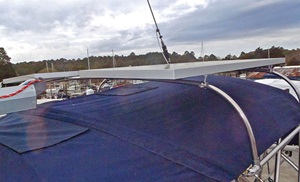
Just about any boat can benefit from solar power, whether it’s to keep batteries topped off or supplement other onboard charging sources.
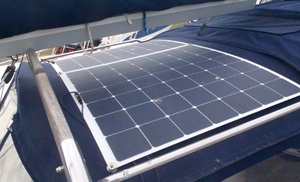
Mount solar panels where they are exposed to maximum sunlight but do not interfere with operation of the vessel.
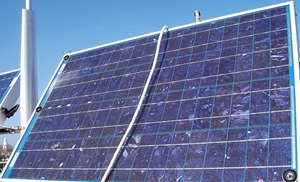
Bottom: Something as simple as the shadow of a line or shroud can reduce or halt output.
Types of panels
Solar panels contain photovoltaic cells – small silicon semiconductor devices that convert sunlight into electricity. Each cell generates between 0.45 and 0.5 volts, depending on exposure to direct sunlight. Cell size determines amperage, with a 3-inch cell producing roughly 2 amps, a 4-inch cell a little over 3 amps, and a 5-inch cell around 5 amps.
Construction-wise, the three main types of solar panels are monocrystalline, polycrystalline, and amorphous (or thin-film) technology.
Monocrystalline panels have been around the longest and remain the most popular. The panels are constructed of thin slices of crystal silicon (each cell is cut from a single crystal) housed in a rigid, aluminum frame and covered with tempered shatterproof glass. The panels have a uniform black, blue, or gray appearance and are generally quite rugged, although they can be cracked or broken if subjected to extreme abuse.
Monocrystalline panels have the longest service life of the three types. With a conversion efficiency of around 17%, they’re also the most efficient and have the highest electrical output per area, but they are also the most expensive.
Polycrystalline cells are sliced from a cast silicon block and have a shattered glass appearance. Built in much the same way as monocrystalline panels, they’re rectangular, giving the panel itself a tiled look. Their life span is similar to monocrystalline panels, and while their conversion efficiency is lower (by 14%), they’re also a bit less expensive.
Amorphous panels are made by placing a thin film of active silicon on a solid or flexible backing (such as stainless or aluminum sheeting) depending on whether the panel is to be rigid-framed and glass-fronted or flexible. Flexible amorphous panels, in which cells are sandwiched between rubber and polymer covers, are light and tough enough that you can walk on them and, in some cases, even roll them up for storage.
This type of solar panel is also better if shade is an issue. With crystalline panels, even the thin shadow of a rope or shroud across one cell can reduce or halt output of an entire module. Amorphous panels have “bypass” diodes that essentially turn off shaded cells and provide a current path around them. Some monocrystalline panels also have bypass diodes, but this feature comes at an increase in cost.
Amorphous panels are the least expensive of the three types, but their efficiency is also lower – around 8%, or roughly half that of a monocrystalline type. This lower output is somewhat mitigated in newer panels, however, which use three-layer construction. Each layer absorbs different colors of the solar spectrum, so the panel will deliver more power longer each day and during lower light conditions than the other two types.
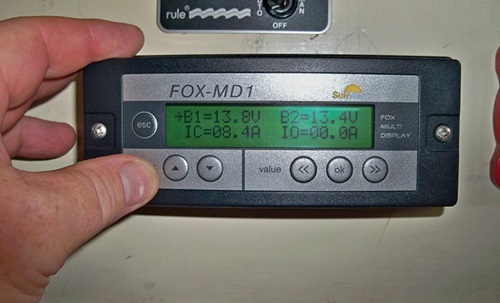
The charge controller should be mounted below decks and as close to the battery as possible.
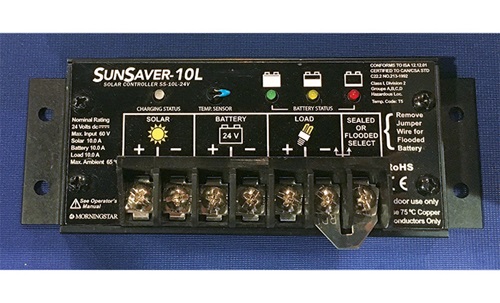
Follow manufacturer instructions for wire connections.
Planning the system
While factors such as cost, mounting options, and output are important, a successful installation depends on knowing what you want the system to accomplish. Is the goal to float-charge a single battery or supplement an overall vessel energy plan? Answering these questions up front will help determine the type, size, and number of panels required.
To understand the process better, let’s walk through the basic steps to determine power requirements and installation considerations for a single solar panel installation. While the example itself is simple, the steps are the same used to plan more complicated installations.
For our example, the goal is to install a solar panel to provide charging for a single 12-volt, 100-amp-hour wet-cell battery used to power an automatic anchor light on a moored vessel.
The first step is compiling a daily power consumption estimate to determine how much solar power is needed.
The daily self-discharge rate for a wet-cell battery is roughly 1%, meaning our 100-amp-hour battery requires one amp every 24 hours just to maintain the status quo. The anchor light draws 50 milliamps per hour of operation, and we’ll assume it operates 10 hours each night. Multiplying current draw (50 milliamps) by hours of daily operation (10) generates a daily energy expense of 500 milliamps or .5 amps.
This means our solar panel must meet a minimum daily energy tab of 1.5 amps – one amp of battery self-discharge rate plus .5 amps of power draw for the anchor light.
Next up is figuring out panel size and the best mounting location. For our example, let’s assume the panel will be a horizontal, fixed-mount installation. A 10-watt horizontally mounted panel should generate between 3- and 5-amp hours per day.
We’ll need at least 13 volts to fully charge our 12-volt battery. As most solar cells generate at least 0.45 volts, you’ll want a panel with a minimum of 33 cells, which should provide around 14.85 volts.
Keep in mind that’s the minimum needed, which may not be enough once you factor in a few cloudy days. Most panels are designed to generate between 15 and 20 volts to overcome problems like cloudy days or inherent electrical resistance within the panel or installation components. While this higher voltage lets you make up for less electrically productive days, it also means you’ll want to install a solar charge controller (voltage regulator) to avoid battery damage due to overcharging.
Attempts to plan a system that tries to use the output of the panel and capacity of the battery to prevent overcharging (and avoid the installation of a charge controller) is false economy and should not be done. The system will never meet its full output potential and, worst case, can damage the battery due to overcharging.
A word on ‘charge controller confliction’
If your vessel has multiple charging sources, such as solar panels and a wind turbine, a crucial but often overlooked consideration is “charge controller confliction.” In short, this is an issue where the charge controller for your solar panel and the charge controller for your wind turbine are internally adjusted to the same maximum charge voltage set point. This means they are constantly fighting each other to be the dominant power source, which results in diminished overall charging output and performance. An in-depth article on this issue can be found at missioncriticalenergy.com (in the website footer, click “Superwind Turbine Manuals & Technical Bulletins.” Under the header “Charge Controllers,” select the document “Resolving Charge Controller Confliction”).
While this article addresses charge controller confliction at remote, off-grid sites, the information provided is also applicable to vessel installations. — F.L.
Location and mounting
Solar panels should be mounted in a location where they are exposed to the maximum amount of sunlight but do not interfere with operation of the vessel or the movement of passengers and crew. Solar panels will typically be either fixed or mounted on some type of movable bracket that allows you to actively point the panel toward the sun for maximum output. Both methods have their pros and cons. Fixed panels (which are normally mounted horizontally) don’t produce as much power as a panel that can be adjusted to face the sun. The downside is that adjustable panels must be aimed throughout the day to maximize their output.
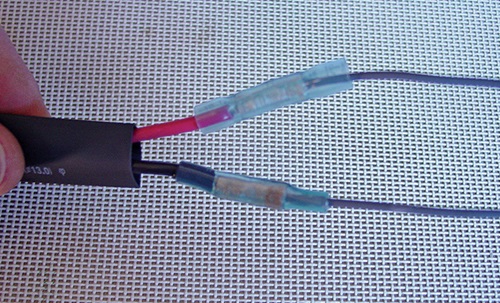
Use good quality, marine-grade heat shrink connectors (top) and liquid electrical tape (right) to create airtight, waterproof seals and reduce corrosion.
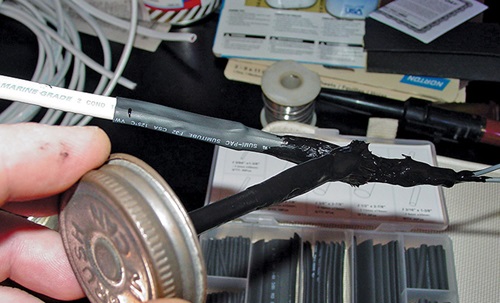
Installation
After choosing and mounting your panel, it’s time to connect it. The first thing you need to determine is the size (gauge) of the wiring to be used. Multiply your panel’s rated amp output by 1.25 (which adds a 25% safety factor). Then measure the length of the entire wiring run, panel to battery, and multiply by 2. Once you have these two numbers, refer to the American Boat and Yacht Council’s (ABYC) 3% voltage-drop table for wire size. Ancor Products offers a handy wire calculator on its website ( ancorproducts.com/resources ).
Always use good quality marine grade connectors and tinned, multi-stranded copper wire with vinyl sheathing. The wire will run from the solar panel to the charge controller first, then to the battery. Try to keep the wire run as short as possible, and if it transits an external deck or cabin house (it likely will), be sure to use an appropriate weatherproof deck fitting.
The charge controller should be mounted below decks and as close to the battery as possible. You’ll always want to follow the manufacturer’s instructions for connections, but in a typical installation you’ll connect the solar panel’s positive (red wire) lead to the charge controller’s positive input wire or terminal and the negative (black wire) lead to the charge controller’s negative input wire or terminal.
Next, connect the charge controller’s negative output to the battery negative terminal and the controller’s positive output to the battery’s positive terminal via an appropriately sized in-line fuse (or circuit breaker). ABYC recommends these be installed within 7 inches of connection to the battery or other point in the DC system. To reiterate, the installation of the charge controller can vary among models, so follow the manufacturer’s installation instructions.
Finally, ensure all connections are waterproof and secure any loose wire runs with wire ties and cable clamps for a neat installation. Then get ready to lean back and soak up some free sun.
Related Articles
The truth about ceramic coatings for boats.
Our editor investigates the marketing claims of consumer-grade ceramic coatings.
Fine-Tune Your Side Scan Fishfinder
Take your side-scanning fishfinder off auto mode, and you’ll be spotting your prey from afar in no time
DIY Boat Foam Decking
Closed-cell foam flooring helps make boating more comfortable. Here’s how to install it on your vessel
Click to explore related articles
Frank Lanier
Contributing Editor, BoatUS Magazine
Capt. Frank Lanier is a SAMS Accredited Marine Surveyor with more than 40 years of experience in the marine and diving industries. He’s also an author, public speaker, and multiple award-winning journalist whose articles on boat maintenance, repair, and seamanship appear regularly in numerous marine publications worldwide. He can be reached via his YouTube channel “Everything Boats with Capt. Frank Lanier” and website captfklanier.com.
BoatUS Magazine Is A Benefit Of BoatUS Membership
Membership Benefits Include:
Subscription to the print version of BoatUS Magazine
4% back on purchases from West Marine stores or online at WestMarine.com
Discounts on fuel, transient slips, repairs and more at over 1,200 businesses
Deals on cruises, charters, car rentals, hotel stays and more…
All for only $25/year!
We use cookies to enhance your visit to our website and to improve your experience. By continuing to use our website, you’re agreeing to our cookie policy.
8 Best Solar-Powered Generators of 2024, Tested by Experts
When extreme weather hits, these portable power stations will keep the lights on — and much more!

We've been independently researching and testing products for over 120 years. If you buy through our links, we may earn a commission. Learn more about our review process.
I keep one at my home in Brooklyn, where it provides peace of mind and is great for powering electronic devices during outdoor parties and on the occasional camping trip.
Also known as portable power stations, these rechargeable devices combine a backup battery with solar panels that harness energy from the sun (they can also be charged at a wall outlet or even off your car). The result is a quiet, zero-emission source of backup power that can help get you through your home's next electrical outage. Since solar generators burst onto the scene about five years ago, I've led the team at the Institute that has reviewed more than 20 models from all the leading brands. We look for generators that combine maximum capacity with fast charge times and enough ports to power a range of appliances and electronics. Here are the eight solar powered generators that shined the brightest in our latest tests.
- Best Overall: Geneverse HomePower TWO PRO
- Best Value: Anker 757 PowerHouse
- Most Durable: Generac GB2000 Portable Power Station
- Best Large Capacity: Jackery Portable Power Station Explorer 3000 Pro
- Best for Camping: Goal Zero Yeti 1500X Portable Power Station
- Best Whole-House: EcoFlow DELTA Pro Ultra
- Best Mini: BLUETTI Portable Power Station EB3A
- Longest Lasting: SuperBase V Power Station
Geneverse HomePower TWO PRO

For my money, this Geneverse solar generator offers the best combination of power capacity, charge time and the ability to hold the charge for as long as possible.
The HomePower TWO Pro is a robust, 2,200-watt generator that, thanks to its lithium iron phosphate (LiFePO4) battery, needed just two hours or less to reach a full charge in our tests using an AC wall outlet or four hours using solar panels.
I like that the well-configured generator includes three AC outlets for appliances, power tools, CPAP machines and the like, plus two USB-A and two USB-C outlets for your small electronics. Keep in mind, however, that the HomePower TWO Pro is not the most rugged solar generator we tested, so our experts recommend it for home use, rather than on camping or construction sites.
If you don't need quite as much power, I was also impressed by Geneverse's HomePower ONE . The 1,000-watt generator packs less power, and its lithium-ion battery takes longer to charge. But the 23-pound generator is easier to transport and has plenty of juice for smaller electronic devices.
Capacity: 2,200 watts | Battery type: Lithium ion phosphate | Charge time (solar) : 4 hours | Charge time (AC): 1.5 to 2 hours | Battery shelf life : Up to to 12 months | Weight : 61.3 lbs | Dimensions : 17.83" x 11.02" x 14.11" | Life span : 3,000 cycles
Anker 757 PowerHouse

Anker is another leader in the backup power space, and the Anker 757 solar generator is the model I recommend to friends and family who are looking for top value. It impressed our testers with its smart design, solid construction and competitive pricing . When plugged into a wall outlet, its lithium iron phosphate battery can reach an 80% charge in less than an hour.
The Anker 757's 1,500-watt capacity is mid-tier in terms of output, so it's best suited to more modest energy needs — say, keeping your home's electronics going through a power outage, rather than a slew of major appliances. Its feature set is respectable, including six AC ports, four USB-A ports and two USB-C ports.
As for solar-charging capabilities, it can input up to 300 watts from solar panels, which, much like its power output, places it in the middle of the pack compared with other generators on the market.
Capacity: 1,500 watts | Battery type: Lithium ion phosphate | Charge time (solar) : 3.6 hours | Charge time (AC): 1 hour | Battery shelf life : 12 to 16 months | Weight : 43.9 lbs | Dimensions : 18.2" x 9.3" x 11.3" | Life span : 3,000 cycles
Generac GB2000 Portable Power Station
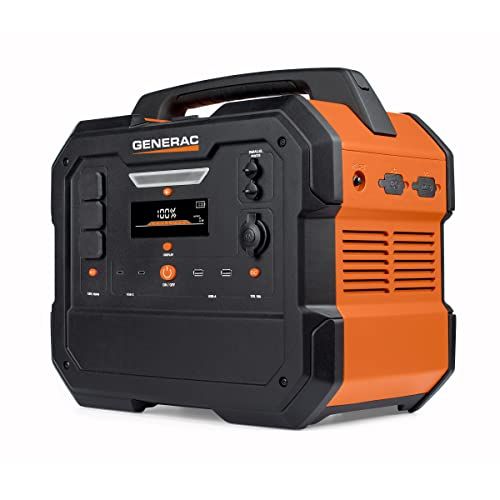
With its durable enclosure and ergonomic design, the GB2000 is my top pick for a solar generator you can take anywhere.
Generac is well regarded by our experts for its established line of gas-powered backup generators. Given how well those machines have performed in our tests over the years, we're excited about Generac's entrance into the solar generator category, where we expect the same performance and reliability.
The 2,106 watt–capacity lithium-ion battery packs plenty of power into relatively compact housing , and the so-called "parallel ports" make it possible to combine two power stations, doubling the total power output. The unit features three AC outputs, two USB-A outputs and two USB-C outputs. There's also a wireless charging pad at the top of generator for cell phones and other small electronics.
Another small touch that our testers liked is the storage pocket at the back of the enclosure to keep all the various charging cords in one place when you're on the go.
One caveat: The 1,000-cycle life span of its lithium-ion battery is shorter than that of some of our other top picks.
Capacity: 2,106 watts | Battery type: Lithium ion | Charge time (solar) : 80% in 5 hours | Charge time (AC): 80% in 3.3 hours | Battery shelf life : Up to 6 months | Weight : 43 lbs | Dimensions : 16.8" x 10.4" x 15.1" | Life span : 1,000 cycles
Jackery Portable Power Station Explorer 3000 Pro

For maximum capacity in fairly compact housing, I love Jackery's Explorer 3000 Pro. It weighs a hefty 63 pounds, but wheels and a telescoping handle enhance its portability, making it a good option for home, recreational or construction-site use.
The battery boasts an impressive 3,000 watts and is loaded with five AC ports and four USB ports. It's also one of the few solar generators we tested with a large 25-amp AC outlet, good for powering high-load electronics , like a portable air conditioner , an electric grill or even an RV. Charge time of the lithium-ion battery is a respectable 2.5 hours via a wall outlet, or less than four hours using solar panels.
The Jackery is missing a few other features we like in other models, including an LED light and onboard cord storage.
Capacity: 3,000 watts | Battery type: Lithium ion | Charge time (solar) : 3 to 19 hours hours | Charge time (AC): 2.4 hours | Battery shelf life : 3 months | Weight : 62.8 lbs | Dimensions : 18.1" x 12.9" x 13.7" | Life span : 2,000 cycles
Goal Zero Yeti 1500X Portable Power Station
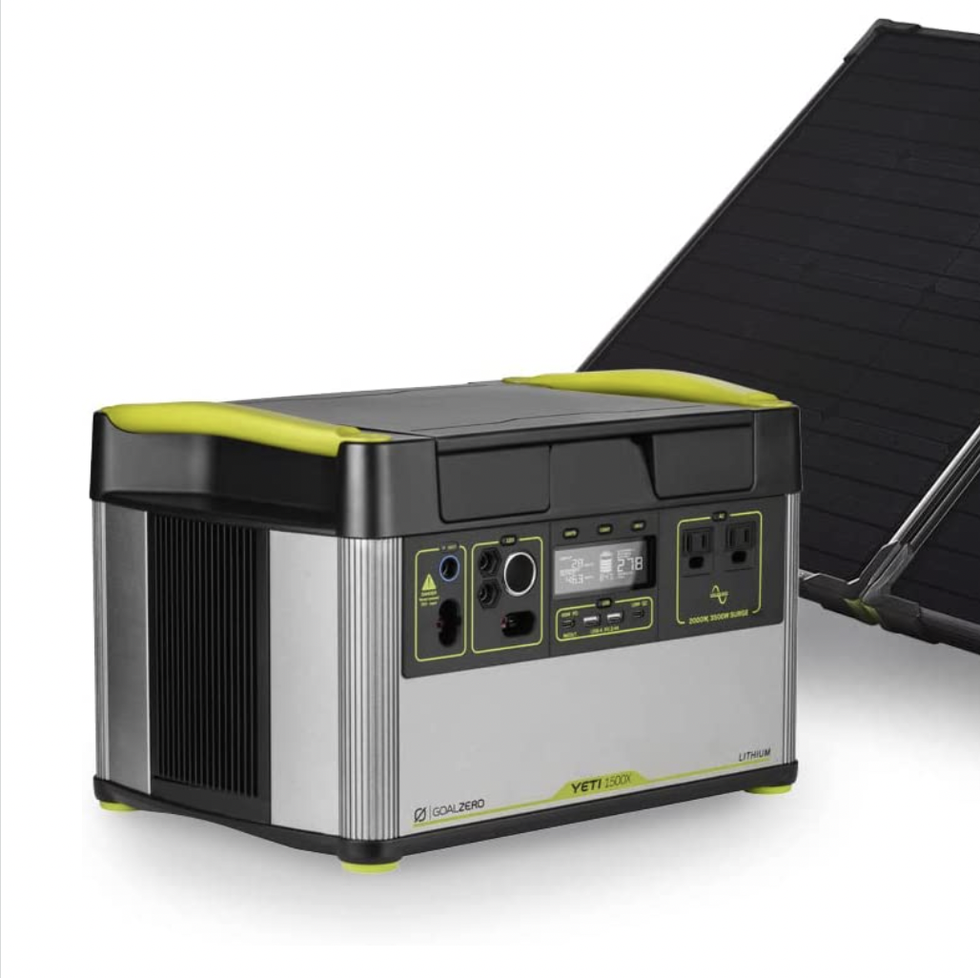
I remember when Goal Zero put solar generators on the map with its launch of the first-ever portable power station in 2017. Though it now has plenty of competitors, including some who are pushing ahead with innovation, the Yeti remains a solid option.
The 1,500-watt battery is designed for medium-size power loads , which is one reason we like it for camping and other recreational use. The other reason is its relatively slow charge time (about 14 hours via a standard 120-volt wall outlet and 18 to 36 hours via solar power) and short shelf life (three to six months).
That means the Yeti is not ideal in emergency situations — e.g., a storm is bearing down, and you need to recharge your backup power ASAP. Also, with a life span of 500 cycles, the Yeti 1500X is best for occasional use.
Capacity: 1,500 watts | Battery type: Lithium ion | Charge time (solar) : 18 to 36 hours hours | Charge time (AC): 14 hours | Battery shelf life : 3 to 6 months | Weight : 45.64 lbs | Dimensions : 15.25" x 10.23" x 10.37" | Life span : 500 cycles
EcoFlow DELTA Pro Ultra

When solar power generators first hit the market, they weren’t powerful enough to keep large houses running. That’s changing at a rapid clip, as our experts found when they tested the EcoFlow DELTA Pro Ultra in a 3000-square-foot suburban home.
The EcoFlow system consists of a battery and inverter with a total output of 7,200 watts. It’s scalable too, all the way up to 90,000 watts with the addition of 15 batteries. That’s enough to keep an average American home running full tilt for an entire month. You’d be looking at an all-in cost of around $50,000 for that maximum output; a good middle-ground option that will get most homeowners through routine power outages is the EF ECOFLOW 12kWh Power Station , which includes an extra battery and sells for under $9,000.
A professional electrician was needed for the installation of our DELTA Pro Ultra, since we opted for the add-on Smart Home Panel 2, which allows homeowners to connect specific circuits to the backup battery — for example, the one for the refrigerator, lighting, furnace and central air conditioner. I like that the smart panel features automatic switchover, so your home will remain powered through an outage even when you’re away (the same way a standby gas generator kicks on automatically when a power failure strikes).
The Delta Pro Ultra’s display screen allows you to program circuits and it also contains other useful information, like the current load and charge level, as well as how long the battery will last under current conditions. Or you can access this info through the EcoFlow app, which our testers found intuitive and easy to use. The app even allows homeowners to take advantage of time-of-use rates from the utility company, such as programming appliances to run during off-peak hours, when electricity prices are lower.
That’s not going to put too much of a dent in the steep upfront cost of the Delta Pro Ultra. But with a life span of 3,500 cycles, the system should deliver decades of service, so the savings will add up over time — though keeping your whole house running during a power outage is the main benefit.
Capacity: 7,200 watts | Battery type: Lithium ion | Charge time (solar) : 2 hours | Charge time (AC): 2.5 hours | Battery shelf life : 3 to 6 months | Weight : 218 lbs | Dimensions : 27.2"L x 18.9"W x 8.4"H | Life span : 3,500 cycles
BLUETTI Portable Power Station EB3A

Solar power generators also come in extremely compact sizes, like the Portable Power Station EB3A from Bluetti. Its 269-watt capacity is not meant to keep your house running, but I'm including it here because it will provide a few hours of run time for less power-hungry equipment, like personal electronics and small appliances.
Weighing just 10 pounds, and about the size of an old-fashioned box radio, the BLUETTI is also perfect for taking on the road. Between its small capacity and lithium iron phosphate (LiFePO4) battery, charging times are extremely swift . Whether you use a wall outlet or the 200-watt solar panel (sold separately), the EB3A can reach a full charge in under two hours.
The portable power station offers two AC ports, two USB-A ports, one USB-C port and a wireless charging pad for your cell phone. Its 2,500-cycle life span makes it one of the longest-lasting solar chargers from our tests. An LED light with a strobe setting for emergency use — for example, if your car is broken down on the side of the road — is a nice safety add-on.
Capacity: 268 watts | Battery type: Lithium iron phosphate | Charge time (solar) : 1.8 to 2 hours hours | Charge time (AC): 1.3 to 2 hours | Battery shelf life : 3 to 6 months | Weight : 10 lbs | Dimensions : 10.04" x 7.09" x 7.2" | Life span : 2,500 cycles
Zendure SuperBase V Power Station
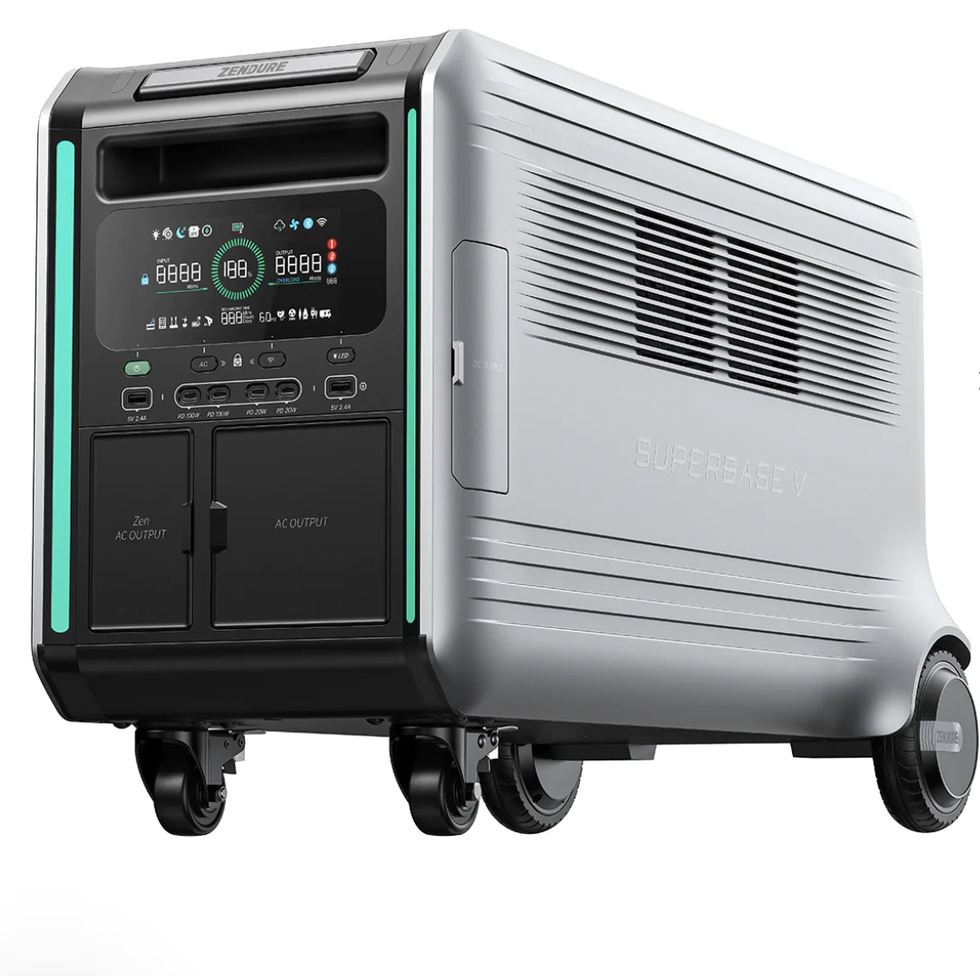
Here's another whole-house solution that uses semi-solid state battery technology, which is extremely durable and fast-charging. With a capacity of 6,438 watts and the option to add satellite batteries that can multiply its output many times over, the SuperBase V6400 is suited to houses of all sizes.
Make no mistake: This is a massive solar generator. I needed help from one of our brawnier testers just to get the 130-pound device out of the box. Though from there, the wheels and telescoping handle made it easy to transport.
Thanks to its semi-solid state battery technology, charge time at the wall outlet was a swift 60 minutes, even in frigid conditions; a trio of 400-watt solar panels can reach a full charge in less than three hours. It's an investment, but the SuperBase is loaded with outlets, including both 120-volt and 240-volt ACs, so you can keep larger systems and appliances running , including the oven and central air conditioner .
The base unit can take four stackable satellite batteries, increasing its total capacity to more than 30,000 watts; Zendure's Smart Home Panel can connect the base to your home's electrical circuits to supply power throughout the house.
Capacity: 6,438 watts | Battery type: Semi-solid state | Charge time (solar) : 3 hours | Charge time (AC): 1 hour | Battery shelf life : 2 to 3 years | Weight : 130 lbs | Dimensions : 28.7" x 13.6" x 17.4" | Life span : 3,000 cycles
How we test solar generators

Our product experts at the Good Housekeeping Institute keep constant tabs on the solar generator market to find the models consumers are most likely to find in stores and online. They also stay on top of the latest innovations by attending trade shows, including the Consumer Electronics Show (CES) and the National Hardware Show.
For this report, my team and I did a thorough technical review of more than 25 solar generators and called in samples for testing, both in the Institute's Home Improvement and Outdoor Lab and at the homes of expert testers.
Over the course of several weeks, evaluations included verifying the claimed charging times of the devices using solar panels and AC wall outlets. We then tested claimed capacity by running electronic devices with commensurate energy loads — for instance, 1,500-watt space heaters for large-capacity generators and laptop computers for small-capacity ones.
Consumer testers also measured solar charge times and capacity in the real-world conditions of their homes. And engineers checked the technical data to confirm the shelf life (how long a generator holds its charge) and life cycle (how many times its battery can be recharged).
Overall usability was another important part of our review. For example, we noted the total number of outlets, which indicates how many devices a generator can charge at once. Generators also received points for user-friendly features like a carrying handle and wheels, an LED light and onboard storage for accessories. Finally, we assessed the durability of the both the generator and its solar panels to judge how long the equipment will last.

In-Lab testing of solar generators at the Good Housekeeping Institute includes seeing how long large-capacity units can power energy-intensive 1,500-watt space heaters.

Our experts also check the claimed charging capacities of solar generators by hooking them up to solar panels ( pictured) and leaving them in full sun for the period of time estimated by the manufacturer.
What to look for when shopping for the best solar generator

Solar generators come in all shapes and styles to serve a variety of needs. Here are the key factors to consider:
✔️ Capacity: Typically measured in watts, capcity tells you how much power a generator can deliver. Think about your home's total power needs. The chart below lists how many watts various devices you might need to charge will use in approximately one hour. The smallest generators have capacities around 250 watts, while the largest deliver 3,000 watts or more. Overloading a generator can damage the device itself, as well as any connected electronics.
It's important to think about run time, or how long you will need to power each device. To keep a 200-watt refrigerator running for 10 hours, you'll need a 2,000-watt generator. To keep a 40-watt CPAP machine running for eight hours while you sleep, a 500-watt generator will do the trick.
- Air compressor: 800–1,000 watts per hour
- Air conditioner (window and portable): 1,000–1,500 watts per hour
- Breast pump: 20–50 watts per hour
- Cell phone : 2–10 watts per hour
- CPAP machine: 40–50 watts per hour
- Electric drill: 500–900 watts per hour
- Fan: 50–100 watts per hour
- Laptop: 30–100 watts per hour
- Lighting: 10–50 watts per hour
- Refrigerator: 100–200 watts per hour
- Space heater: 800–1,500 watts per hour
- Sump pump: 750–1,500 watts per hour
- TV: 50–250 watts per hour
- Wi-Fi router: 2–20 watts per hour
Pay attention to the capacity of the solar panels too, since it indicates how quickly the panels will charge the battery. Our experts recommend solar panels with a capacity of at least 100 watts; in many cases, multiple panels can be used at the same, accelerating the charge time. Generators that can be charged at a wall outlet and by solar panels are even faster.
✔️ Battery type: There are three kinds of batteries generators use:
- Most generators run on lithium-ion batteries , which have been the standard-bearer of battery-powered solar generators for the last decade or so. It's a safe, reliable technology that delivers impressive power.
- The latest evolution in battery technology is lithium iron phosphate (LiFePO4) . Lithium iron phosphate batteries have the advantage of longer life spans and faster charge times; the downside is they tend not to perform as well in extremely cold temperatures.
- We're now seeing a handful of solar generators that run on solid-state batteries ; their cells use a solid electrolyte, rather than the liquid electrolyte solution of lithium batteries. The main benefit of solid-state batteries is increased capacities, though they tend to be much larger and heavier.
✔️ Portability: Some solar generators are easier to move around than others. The biggest consideration is weight, which can range from 10 pounds to 100 pounds or more. Weight tends to correspond with capacity, so if you need a powerful generator that you plan to move around frequently, look for user-friendly features such as wheels and a telescoping handle . Solar panels can get heavy too, so panels that have a handle and carrying case help improve portability.
Are solar generators better than gas backup generators?

In many ways, solar generators are now the better option.
Gas-powered generators are noisy and guzzle a lot of fuel (which you need to have on hand before the power goes out), plus they must be operated outdoors to prevent their deadly fumes from entering the home. Solar generators have none of these downsides.
On the other hand, most solar generators are still not as powerful as their gas counterparts, with most models delivering between 1,500 and 3,000 watts, versus the 3,000 to 8,000 watts you can get with a gas generator. But that's enough juice to keep various home essentials running during a power outage. Plus, a solar generator is much easier to take with you, whether you're toting it along as part of your camping gear or powering your next tailgate party .
Why trust Good Housekeeping?

I've covered the residential energy market for 25 years. In that time, I've reported extensively on energy-efficient solutions for the home, as well as emerging technologies in alternative energy. As director of the Home Improvement and Outdoor Lab at the Good Housekeeping Institute , I oversee all solar generator testing, working closely with our team of engineers and product analysts. I'm also a regular at trade shows, where I love keeping up with the latest industry innovations, and also speaking publicly on all topics related to housing and home improvement.
Having written thousands of product reviews and how-to articles on all aspects of home ownership, from routine maintenance to major renovations, Dan (he/him) brings more than 20 years of industry experience to his role as the director of the Home Improvement & Outdoor Lab at the Good Housekeeping Institute . A one-time roofer and a serial remodeler, Dan can often be found keeping house at his restored Brooklyn brownstone, where he lives with his wife and kids.

@media(max-width: 64rem){.css-o9j0dn:before{margin-bottom:0.5rem;margin-right:0.625rem;color:#ffffff;width:1.25rem;bottom:-0.2rem;height:1.25rem;content:'_';display:inline-block;position:relative;line-height:1;background-repeat:no-repeat;}.loaded .css-o9j0dn:before{background-image:url(/_assets/design-tokens/goodhousekeeping/static/images/Clover.5c7a1a0.svg);}}@media(min-width: 48rem){.loaded .css-o9j0dn:before{background-image:url(/_assets/design-tokens/goodhousekeeping/static/images/Clover.5c7a1a0.svg);}} Outdoor Space
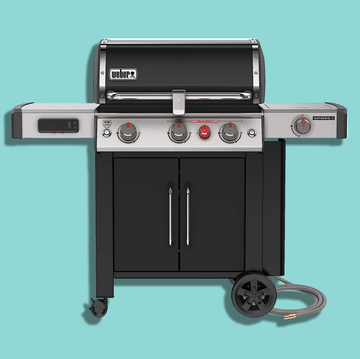
The Best Patio Furniture
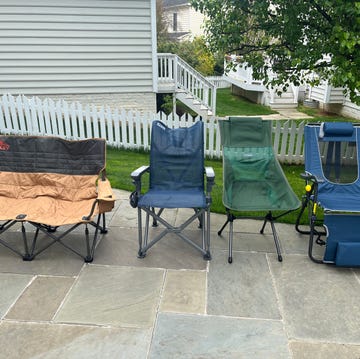
The Best Camping Chairs

Aluminum Furniture Is a Trend to Watch

The 6 Best Portable Charcoal Grills
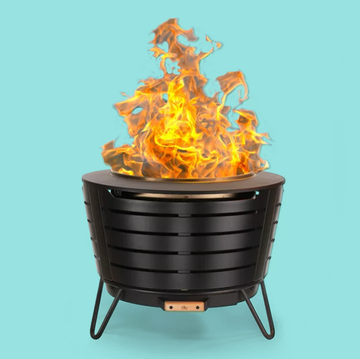
The Best Walmart Fire Pits
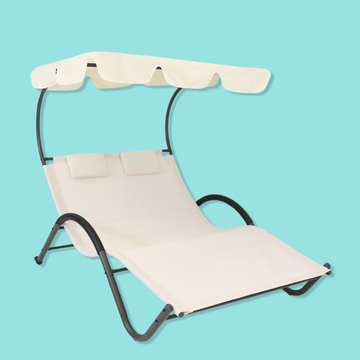
The Best Pool Lounge Chairs

The Best Outdoor Dinnerware Sets
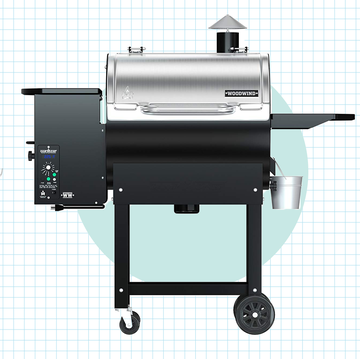
The Best Pellet Grills
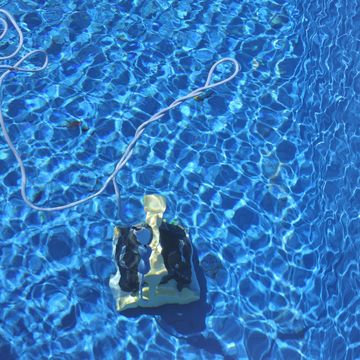
The Best Pool Vacuum Cleaners
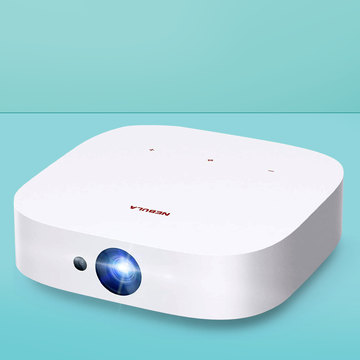
The Best Outdoor Projectors

The Best Walmart Patio Furniture for Less
- United States - English
- United Kingdom - English
- Canada - English
- Australia - English
- Other Europe - English
- Germany - Deutsch

Which LFP Battery Specs Meet Your Needs?
When we started our solar powered journey in 2012, nearly every off-grid RVer we met bragged about their 6V lead acid golf cart batteries (around 60 pounds each!) and the gas generator they used to recharge them. In just over a decade, these conversations have completely changed, and so has the technology fueling them. Today, deep cycle RV and marine batteries offer significantly more capacity, charge faster, last 5-10x longer, are safer to use, and weigh in at a fraction of those ancient, golf cart behemoths.
We jumped on board with LiFePO4 batteries in 2019 and haven’t looked back to lead acid…not even once. Our two 12V-100Ah Smart Lithium Iron Phosphate Self-Heating batteries power our off-grid rolling home and mobile business like a dream! Need help with sizing your own solar powered system? Our NEW video will walk you through it!
You may have heard a rumor that LiFePO4 batteries are too expensive. Like any new product that hits the market, prices start out high then begin to drop. In 2019, Renogy offered just a couple of different LiFePO4 battery options and the prices were upwards of $1200 for a single 12V-100Ah battery. After a couple of years, the options within their LFP line-up (as well as the features) increased and the prices began dropping. Today, Renogy offers 13 different LFP batteries with voltage options ranging from 12V to 48V and amp hours from 25Ah to 400Ah. The price of most LFP batteries have dropped by half of what they were in 2019! There are now LFP batteries to fit just about every lifestyle and budget.
If you have just started your research on deep cycle RV batteries, the charts in this blog will help you quickly compare the specs of various Renogy LiFePO4 batteries in one place, and the questions will help you narrow down the style that’s right for you.
Let’s start off by looking at 4 of Renogy’s 12V-100Ah Lithium Iron Phosphate batteries side-by-side to compare the differences in their unique features.

How is Lithium Iron Phosphate Different?
Simply put, a deep cycle RV battery is designed to cycle from a full charge to a specific safe depth of discharge and back to full charge several thousand times, and can be charged and recharged in a variety of ways including solar panels, DC to DC chargers, AC to DC chargers, inverter chargers, converters, and yes, even gas generators. Lithium Iron Phosphate is a newer technology for deep cycle batteries that differs from the Lithium Ion batteries commonly found in hand-held electronics. The LFP chemistry is much more stable, and virtually maintenance free. These batteries are not prone to overheating, and the internal computerized BMS (Battery Management System) provides protection against over / under charging, reverse polarity and temperature challenges. Because they will not off-gas, the options for installation can include the living space of your RV, van, boat, or off-grid home. With a decade or more of life expectancy and higher charging / discharging rates, these batteries represent an upfront investment that pays off within just a few years – all of this at almost a third of the weight of traditional lead acid. Before diving into specific questions, take a look at this complete chart of ALL Renogy Lithium Iron Phosphate batteries to review which batteries are available.
Which Deep Cycle Battery is Best for Your Rig & Lifestyle?
Once you have determined your average daily total watt hours using our Solar System Sizing Worksheet and have determined how many amp hours of batteries you need to meet your energy demands (see video above), it’s time to choose WHICH deep cycle batteries are best for you. Start by asking yourself these 3 questions…
At 23-27 lbs for 100Ah, LiFePO4 batteries weigh significantly less than other deep cycle batteries. Compare that to AGM and gel which weigh 64 lbs each for 12V-100Ah! While each LFP battery has slightly different dimensions, overall LFP is smaller, lighter, and more energy dense than any other type of battery.
Unlike flooded lead acid batteries, LiFePO4 can be safely installed inside your camper, boat or living space, as they will not off-gas and can be installed in a variety of orientations (e.g., on their side). Installing them Inside keeps them safer, warmer in the winter / cooler in the summer, and can simplify the wiring for the battery installation.
If you are going to live full-time (or even part-time) in an off-grid home, and plan to use the batteries for many years, you definitely want to consider LiFePO4 for your RV, boat, or off-grid cabin. LFP has 5-10x the potential lifespan of any lead acid batteries.
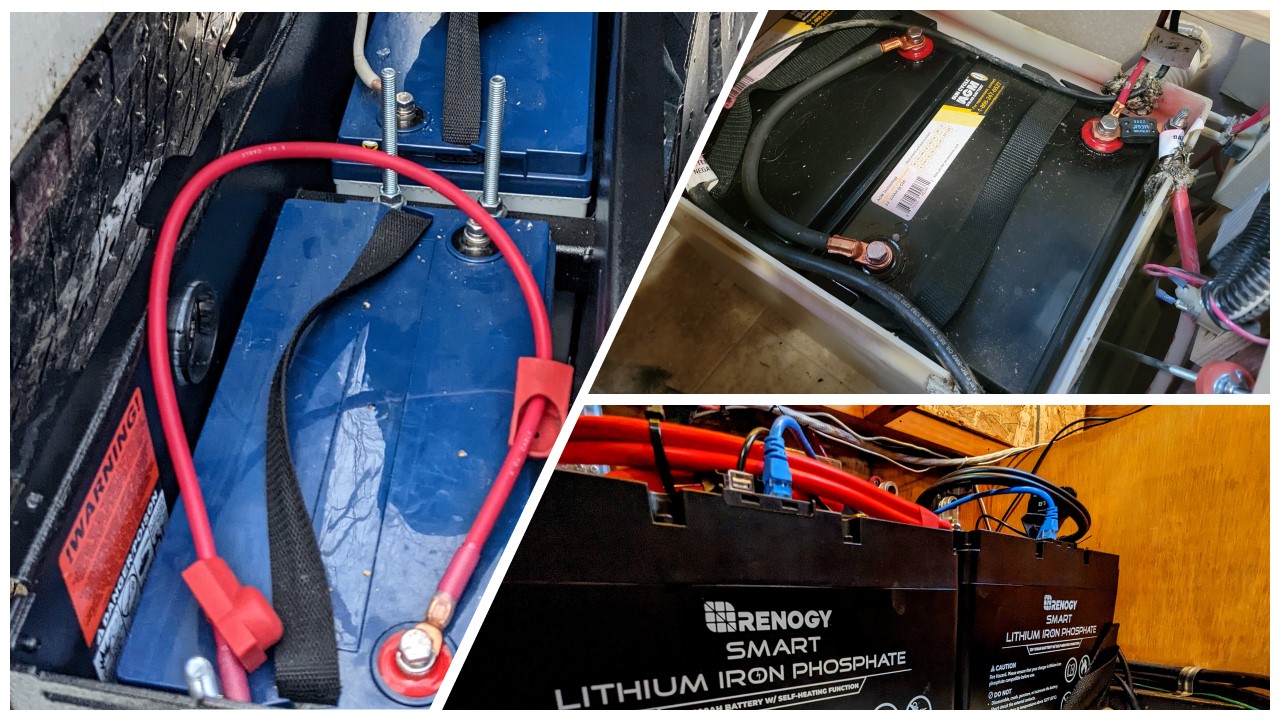
If you’ve decided that LiFePO4 is best for you, ask yourself these 3 important questions to determine which STYLE you need.
Are you planning to run higher wattage appliances with your batteries or just some simple 12v appliances.
Different batteries offer different discharging rates which can affect those who are planning to run many higher wattage appliances at the same time. The higher the discharge rate, the greater the flow of energy out of the battery. Renogy’s new release collection of 12V - 48V CORE and 12V PRO series batteries offer higher maximum continuous charging and discharging rates.
What system voltage are you trying to achieve – 12V, 24V, 36V, or 48V?
In order to create a battery bank higher than 12V, you’ll need to either purchase higher voltage batteries (24V or 48V) or buy 12V LFPs specifically designed to be wired in series. Renogy’s latest CORE series LiFePO4 batteries are designed specifically for series connections or even a combination of series-parallel. Or, you may consider a 24V or 48V battery such as the 24V-200Ah CORE or 48V-50Ah Smart LFP .
What is the lowest possible temperature in which you will use the batteries?
Many of Renogy’s Lithium Iron Phosphate batteries such as the 12-100Ah PRO or the 12V-400Ah REGO include an automatic self-heating function to handle any cold challenge! Check out this video to see how self-heating LFP batteries work .
If you are considering higher-capacity LiFePO4 batteries such as the 24V-200Ah CORE LT or 48V-50Ah, check out this chart for a side-by-side comparison of these features.

To appropriately monitor LiFePO4 batteries, and your entire system, Renogy offers several options including their new wireless Renogy ONE series , including the M1 and Core models. Connection to this latest generation of solar monitors is through built-in Bluetooth, Bluetooth Modules, or the Renogy Battery Shunt 300 (for all Basic and CORE battery models). The shunt is also compatible with all other deep cycle batteries, including lead acid or non-Renogy LFP. We’ve tested all monitoring methods with great success!
We hope these charts assist you in finding a battery that is best for your lifestyle, energy needs, climate, budget, and more. If you need further explanation or help with troubleshooting your solar installation, give us a shout! We are Solar Coaches and love to help people get started. Please contact us via our website at Freedom in a Can .

In 2012, Shari Galiardi & David Hutchison left behind careers and a comfortable home in North Carolina to travel with the vintage camper trailer they lovingly restored, outfitted with solar, and named "Hamlet." What began as a short break from careers and responsibility quickly turned into a love affair with roadlife. They have parlayed their higher education backgrounds, desire for life-long learning, and thirst for adventure travel into writing, photography, video production, and public speaking gigs from coast to coast. Known to their friends as simply Shari & Hutch, you can learn more about their full-time, solar-powered adventures on their website at freedominacan.com . Or, follow them on Facebook , Instagram , and YouTube as “Freedom in a Can, LLC.”
Be the first to receive our latest news and exclusive deals!
- Solar Panels
- Off Grid Solar Kits
- Charge Controllers
- IoT Monitoring
- Deep Cycle Batteries
- Battery Chargers
- Accessories & Wiring
- Renogy Gear
- Troubleshooting
- Shipping/Warranty/Return
- Service Center
- Learning Center
- Success Stories
- Renogy Power Plus
- Renogy Discord Group
- Become a Dealer

- Accessibility |
- Privacy Policy |
- 4G App Privacy Policy |
- Do Not Sell My Personal Information
Create an account with us and you'll be able to:
- Join Renogy Power Plus and earn Rays
- Get exclusive rewards
- Track new orders
- Access your order history
- Save multiple shipping addresses
Create Account
Electric Yachts
Solar electric boats.
- Sunreef Yachts
Sustainability at sea: Sunreef is integrating recycled plastic bottles into solar electric yachts
Sunreef Yachts is already a solar electric boatbuilder recognized for its sustainability efforts in the maritime industry but is now taking things a step greener. The company is now integrating recycled PET bottles into its solar electric yacht production process.
Sunreef Yachts has been operating out of Gdansk, Poland, for over 20 years alongside a newer footprint established in the United Arab Emirates. From day one in 2002, Sunreef has been pushing the boundaries of sustainable marine travel, launching the world’s first 74-foot luxury oceangoing catamaran with a flybridge.
Sunreef Yachts currently has hundreds of its boats sailing waters across the globe, showcasing the company’s lineup of sustainable, all-electric propulsion and advanced solar panels. Its current portfolio consists of eco-friendly sailboats and massive solar electric catamarans ranging from 60 to 100 meters in length.
In April 2024, Sunreef introduced a new 40m electric yacht called the Eco Explorer . One month later, Sunreef shared a new sustainability strategy that will integrate hundreds of thousands of recycled polyethylene terephthalate (PET) bottles into the superstructures of its electric yachts.

Sunreef’s electric yacht reuses 600k recycled PET bottles
As part of a new initiative to maximize energy efficiency and, above all else, sustainability, Sunreef Yachts Eco’s R&D team will integrate a structural foam composed of up to 100% recycled PET materials into the production of its solar electric yachts and sailing catamarans.
By integrating this recycled material, Sunreef can achieve even more eco-conscious electric yacht construction practices while furthering sustainability in a maritime segment that quickly embraces electrification .
In addition to being 100% recyclable, Sunreef shared that the recycled thermoplastic core offers additional benefits in electric yachts and catamarans, such as high resistance to process temperatures, exceptional chemical resistance, strong adhesion, and other mechanical properties.
For added perspective on the impact the recycled material can have on the industry, Sunreef said one of its 80-foot sailing catamaran requires about 2.4 tons of the structural foam, equating to approximately 600,000 recycled PET bottles finding a second life at sea within the superstructure rather than floating around as pollution.
This is the kind of news we love sharing with you readers and provides further evidence that large boats can not only be 100% electric but may soon be 100% recyclable.
FTC: We use income earning auto affiliate links. More.


Scooter Doll is a writer, designer and tech enthusiast born in Chicago and based on the West Coast. When he’s not offering the latest tech how tos or insights, he’s probably watching Chicago sports. Please send any tips or suggestions, or dog photos to him at [email protected]

Manage push notifications


IMAGES
VIDEO
COMMENTS
Silent 120 Explorer. 100 Sunreef Power Eco. Most affordable $: Azura Marine - Aquanima 40. Other alternatives ⛵: Soel Yachts - Soel Senses 48. Serenity Yachts - Serenity 64 (Hybrid) Here's a quick summary of the features of the best solar catamarans for green yachting in 2023-2024: Solar Boats.
ALVA Yachts, the German builder of luxury electric solar catamarans and sail boats, has announced it is currently building the world's first fuelless 90ft superyacht catamaran with wings, the OCEAN ECO 90 H2. The first superyacht catamaran to run without fossil fuels and producing zero emission, the OCEAN ECO 90 H2 is designed with luxury ...
The blue water capable ZEN50 lightweight racing carbon hulls are combined with a huge solar roof for an unrivaled solar power vs. displacement ratio above 1:1 (18 kW / 17 tonnes), making this yacht completely energy self-sufficient. A revolutionary, fully automated, wingsail - by Ayro© - can be added as a range and speed extender.
OUR STORY. Bringing over 15 years of extensive expertise in electrifying solar electric yachts since 2007, we have been pioneers in the solar yachts industry. Our integral solar electric systems in-house have impressively powered more than 27 circumnavigations of the Earth across the world's oceans, offering unmatched real-world testing and ...
On the smaller 55 and the 64, Silent Yachts currently recommends a 19m2 kite that costs around €25,000 - a fraction of the cost of a new mast, boom, shrouds and sails. "The sail ...
The solar niche is small but growing, with new entrants like Serenity Yachts and the BYD Group. These power yachts have cruising speeds of 8 knots and top speeds of up to 20 knots, though they ...
The perfect mid sized electric solar catamaran. The OCEAN ECO 60 is an innovation packed solar assisted electric long-range cruiser that will perfectly suit customers who like to cruise and explore while yachting.Designed with luxury, safety and cruising comfort in mind, it is an example of the latest technological developments in the field of self-sufficient yachts surpassing its competition ...
The Original Solar Yacht. As the original inventors of series produced solar-electric yachts, we pioneered this innovative approach. Our first model, the Silent 64, was launched to the market in 2016, several years before any other shipyard considered the possibility of going electric.
Micah Toll Jul 17 2023 - 5:28 am PT. 10 Comments. The Portuguese company Faro Electric Boats has just pulled the cover off of the new Faro PowerDock. The off-grid electric dock and boat lift is ...
PREMIUM COMFORT AT LOW COSTS . The very functional eco electric yacht gives its owner the ultimate freedom to go near and far at highest comfort while keeping the cost and emissions footprint at incredibly low levels. 42 state-of-the-art solar panels generate 18.5 kWp on the solar roof and let its user enjoy sustainable and luxurious yachting without any noise and high fuel bills.
The SoelCat 12 can be delivered as a demountable solar electric boat, which fits into two 40ft high cube containers. Such compact dimensions enable ease transport of the catamaran at affordable rates to destinations all over the world. Neither lamination processes or specialized tools are required for the SoelCat 12's quick assembly on location.
Eco-responsible shipbuilder Sunreef Yachts had given the public its first glimpse of its new 80-foot solar electric yacht before it makes it US debut in Fort Lauderdale, Florida later this month ...
This makes Sunreef Yachts Eco the lightest marine solar power system producer in the solar catamaran market. Each of the solar cells administered into the Sunreef solar catamarans are ISO 9001:2015 certified and offer a peak performance of ±24 percent, this is 25 to 30 percent more power compared to conventional cells.
Here are three of the best solar-powered catamarans: Sunreef's 80 Sunreef Power Eco Yacht. Silent Yachts' Silent 80. Soel's Senses 48. There are soo many variables that it's tough to say one is better than the others. No matter which you board, you're going to have a luxury experience. The benefit of these solar cats is that the ...
Singapore-based Azura Marine unveiled a new $500,000 electric yacht that they claim can complete "non-stop ocean voyages powered only by sunlight.". The electrification of transport is slowly ...
Full autonomy. Solar electric energy. Luxury design. Whisper 50. Whisper Yachts offers an exclusive 50 ft luxury yacht powered by green energy that provides a way of sailing more handy, comfy and eco-friendly. Discover. 50. 40.
The SILENT 60 embodies the next generation of the legendary SILENT 64, the first and only solar powered yacht to cross the Atlantic. It can easily be driven by two people and offers enough space for families and crew members. The possibility of storing a 4 m tender, two jet skis, several bicycles and a motorcycle makes it the adventurer of the ...
SUNPOWER VIP 44. The Sunpower 44 VIP Solar-Powered Catamaran features two 30kW high-efficiency motors that provide sustainable, comfortable cruising. Owners can expect a 6-7 knot cruising speed with top end speeds between 11 and 15 knots. The Sunpower 44 VIP version features a master stateroom in the front starboard area with a full-length ...
SILENT-YACHTS, is an Austrian company that produces oceangoing solar-electric production catamarans, has announced the expansion of its range. The shipyard is adding three new models: The Silent 44, Silent 60 and a tri-deck version of the flagship Silent 80. "We had a successful year, as we enjoyed huge support from our clients, yachting experts and, of course, media," said Michael Köhler ...
Silent Yachts founder Michael Köhler drew plenty of laughter across the industry back in 2005 when he announced he was moving away from diesel to build solar-powered luxury marine vessels. When his Köhler's Solarwave 46 was launched five years later, though, those laughs turned to gasps. Despite the limitations and expense surrounding the technology back […]
THE AVAILABLE SPACE. In practical terms, a modern 40ft monohull would have the space for around 1,200W of PV panels (cockpit arch, sprayhood top, deck), maybe 1,500W with the addition of a few portable panels for use at anchor. The 1,200W of fixed position solar array could produce around 360Ah on a sunny summer's day (zero shading) or more ...
Depending on trim level, the solar-only ZEN50 will start at $1,700,00 and range to $2,1000,000, depending on options. The base Sea Racer trim will include appliances such as a fridge, navigation ...
A 10-watt horizontally mounted panel should generate between 3- and 5-amp hours per day. We'll need at least 13 volts to fully charge our 12-volt battery. As most solar cells generate at least 0.45 volts, you'll want a panel with a minimum of 33 cells, which should provide around 14.85 volts.
Powered by two 400-kW electric motors, a 990-kWh battery pack system, and two 300-kW range extenders, the 33M Sunreef Explorer Eco "was designed to take you to the most remote cruise grounds in ...
Anker has been a leader in the backup power space for years. Not surprisingly, the Anker 757 solar generator impressed our testers with its smart design, solid construction and competitive pricing
When we started our solar powered journey in 2012, nearly every off-grid RVer we met bragged about their 6V lead acid golf cart batteries (around 60 pounds each!) and the gas generator they used to recharge them. In just over a decade, these conversations have completely changed, and so has the technology fueling them. Today, deep cycle RV and marine batteries offer significantly more capacity ...
Sunreef Yachts currently has hundreds of its boats sailing waters across the globe, showcasing the company's lineup of sustainable, all-electric propulsion and advanced solar panels.